Popular Articles

“From Surviving to Thriving: A Modern Guide to Financial Freedom in 2025”
🧭 Introduction: It’s Not About Being Rich — It’s About Being Free Have you ever felt like you’re working just to pay bills? That moment when your salary hits the bank… and then disappears into rent, EMIs, UPI payments, Swiggy orders, and credit card bills? You're not alone. But here’s the truth: Financial freedom is not about having crores. It’s about having control. Control over your time. Your decisions. Your life. Let’s walk you through a realistic, action-driven guide to go from financial survival to financial freedom — no matter your income level. 🌱 Step 1: Define Your “Why” — Your Money Vision Before any money plan, define your why. Ask yourself: Why do I want to save money? What does freedom mean to me? What would I do if I didn’t have to worry about money? Examples: Travel the world in 5 years 🌍 Be debt-free in 12 months 💳 Start my own business 🏢 Support my parents 👪 📌 Write this down. Stick it on your wall. This is your fuel. 💼 Step 2: Pay Yourself First Before you pay bills or spend on others, pay yourself. “Savings is not what’s left after spending. It’s the first thing you do.” Set up auto-debit or SIP on your salary day. Even if it’s ₹500/month — it’s a start. 📊 Step 3: Build a One-Page Budget Most people quit budgeting because it feels complicated. Let’s simplify: Your One-Page Budget: 💡 Essentials – 50% 🎉 Lifestyle – 25% 💰 Wealth – 15% 🚨 Emergency – 10% Use a Google Sheet or apps like GoodBudget, ET Money, or Wallet. 💣 Step 4: Break Up With Bad Debt Credit card interest in India = 36–42% per year. That’s not just debt — that’s theft. How to Fix It: Stop using credit for wants Pay more than the minimum due Consolidate loans if possible Sell something, freelance, reduce spending — kill it fast 💥 Freedom starts where debt ends. 🏥 Step 5: Don’t Skip Insurance (It’s Not Boring — It’s Smart) Many people in their 20s and 30s avoid insurance. But one hospital bill can destroy years of savings. You need: ✅ Health Insurance (₹5–10L cover) ✅ Term Life Insurance (if you have dependents) ❌ Skip ULIPs, endowment, traditional LIC plans (low ROI)

🏦 USA Bank Loans in 2025: Navigating the Future of Borrowing
Section 1: Who’s Borrowing and Why? The profile of borrowers in 2025 is diverse and dynamic: Young professionals and millennials account for the largest share of mortgage and personal loan seekers, eager to capitalize on historically moderate interest rates before potential hikes. Gig economy workers and freelancers demand flexible, income-sensitive loan products that accommodate irregular cash flows. Small business owners look for quick, technology-driven access to capital to fuel innovation and expansion. Environmentally conscious consumers gravitate toward green loans rewarding sustainable investments like solar panels, energy-efficient homes, and electric vehicles. Section 2: Emerging Loan Products Transforming the Market 1. AI-Powered Personalized Lending Banks deploy AI algorithms that analyze beyond traditional FICO scores—examining behavioral data, transaction histories, and social signals—to provide tailored loan terms, often with better rates for lower-risk borrowers. 2. Green Financing Options Eco-friendly mortgages, auto loans, and personal loans are increasingly popular, offering reduced interest rates and cashback incentives to promote sustainability goals aligned with national climate initiatives. 3. Flexible, Income-Responsive Repayment Plans These loans adjust monthly payments based on actual income fluctuations, especially beneficial for gig workers and freelancers who face variable earnings. 4. Instant Microloans Leveraging mobile platforms and real-time data, microloans up to a few thousand dollars can be approved within minutes, providing emergency liquidity to underserved segments. Section 3: The Role of Technology in Lending Seamless digital applications enable borrowers to apply for and receive loans from their smartphones in under 10 minutes. Blockchain and smart contracts ensure transparency, reduce fraud, and automate disbursements and repayments. AI chatbots and voice assistants provide personalized guidance, answer queries, and even assist with loan management. Embedded lending integrates loan offers directly into popular apps and marketplaces, enabling frictionless borrowing at the point of need. Section 4: Challenges and Risk Management While innovation expands access, borrowers must be mindful of: Interest rate volatility: With inflationary pressures, fixed-rate loans are often safer bets. Over-indebtedness: Easy digital access can tempt borrowers to take on unsustainable debt loads. Privacy concerns: The growing use of personal data in underwriting demands vigilance about data security. Complex fee structures: Hidden fees, prepayment penalties, and variable rates require thorough review before commitment. Section 5: Practical Tips for Borrowers in 2025 Thoroughly compare loan offers including APR, fees, and repayment flexibility. Maintain or improve your credit profile by timely payments and minimizing credit utilization. Utilize financial apps and AI advisors to simulate repayment scenarios and manage budgets. Explore green loans and incentives if you qualify to reduce overall borrowing costs. Lock in rates early if forecasts suggest rising interest rates. Section 6: Looking Ahead – The Future of Borrowing Voice-activated loan management: Enable hands-free control over payments and queries. Sustainability-linked lending: Borrowers rewarded for reducing carbon footprints and social impact. Real-time financial coaching: AI-powered systems proactively guide borrowers to optimal financial decisions. Integrated ecosystems: One platform to borrow, save, invest, and insure—simplifying financial lives. Conclusion: Empowered Borrowing in a Changing World Bank loans in 2025 offer unparalleled opportunities, fueled by technology and a borrower-centric approach. However, navigating this landscape requires awareness, prudence, and smart use of the tools at your disposal.

🚀 Fueling American Entrepreneurs: How Bank Loans Are Powering Small Businesses in 2025
🏁 Introduction: A New Era for American Hustle In the land of opportunity, 2025 has become a breakthrough year for small business financing in the USA. With over 33 million small businesses contributing to nearly half of the nation’s jobs, American banks have shifted gears — offering faster, fairer, and more flexible loan solutions for dreamers, creators, and risk-takers. This blog dives deep into how modern bank loans are transforming Main Street — not just Wall Street — one espresso bar, Etsy shop, and tech startup at a time. 📊 Section 1: The State of Small Business Lending in 2025 Category 2020 2025 (Now) Avg. Loan Approval Time 3–5 weeks 24–48 hours Avg. Approval Rate (under $100K) 40% 70%+ Digital Application % 20% 95% AI-Involvement in Underwriting 5% 85%+ Loans to Minority-Owned Biz $25B $80B+ 💡 Section 2: What’s Changed for Borrowers? 🔹 1. AI-Powered Risk Analysis Banks now use: POS (point of sale) data Inventory turnover rates Social engagement metrics Customer review sentiment You can qualify for a business loan without traditional collateral or even a long credit history. 🔹 2. Revenue-Based Repayment Instead of fixed EMIs, new loans adjust monthly based on: Your actual sales Seasonality of your business Cash flow projections Perfect for restaurants, salons, creators, and service businesses. 🔹 3. Loan + Growth Packages Many banks offer bundled support: Business coaching Web hosting credits Financial literacy tools Exclusive advertising grants 💰 Section 3: Most Popular Small Business Loans in 2025 Loan Type Avg. Amount Who It’s For Benefits Microloans $10K–$50K Creators, solopreneurs Fast approval, minimal docs SBA-Backed Green Loans $50K–$350K Eco-conscious businesses Subsidized interest, tax breaks Revenue-Share Loans $25K–$150K Retail, eCom, seasonal businesses Pay as you earn Minority Biz Loans $30K–$250K BIPOC, Women, Veteran-owned startups No-collateral + mentoring support Equipment Financing $15K–$500K Manufacturing, logistics, clinics Lease-to-own, 100% financed options 🧠 Section 4: Smart Tips for 2025 Borrowers ✅ Build Digital Creditworthiness Include data from payment apps (like Stripe, PayPal, Square) to strengthen your loan profile. ✅ Use Open Banking Tools Apps like Brex, Lendio, and QuickBooks Capital allow smart loan comparison with real-time cashflow analysis. ✅ Negotiate Even AI-Set Terms Most platforms still allow you to request human review — and get better terms. ✅ Monitor Your “Lending Health Score” Banks are now showing borrowers personalized risk profiles — track this monthly. ⚠️ Section 5: Pitfalls to Avoid ❌ Taking stacked loans from multiple lenders (can lead to cashflow chaos) ❌ Ignoring fine print in BNPL-style business credit ❌ Choosing loans with prepayment penalties ❌ Over-relying on automated approvals without business planning 🧭 Final Thoughts: The Best Time to Grow is Now “The most successful business owners in 2025 aren’t those with the biggest teams — they’re the ones who borrow smarter.” Bank loans have become more democratic than ever. Whether you’re selling on Shopify or opening a local bakery, the system is finally designed to fund ambition, not punish risk. If you're thinking of scaling, pivoting, or launching your dream — the tools, money, and technology are ready. Are you?

🇺🇸 How Bank Loans Are Reshaping the American Dream in 2025
🏠 Introduction: The New Face of the American Dream For generations, the American Dream meant owning a home, building a business, or putting your child through college. But in 2025, how Americans pursue and fund that dream has fundamentally changed — and the key driver? Bank loans. Today’s loans aren’t just financial tools. They’re empowerment engines backed by AI, personalized data, and inclusive policies. This blog dives into how U.S. bank loans in 2025 are redefining access, opportunity, and the modern American lifestyle. 💳 Section 1: Loans Are Smarter, Not Just Faster 🧠 Powered by AI Loan applications now take minutes, not weeks — thanks to: AI-driven approval systems Real-time credit scoring Predictive income analysis Banks use behavioral finance tools to tailor loans to your lifestyle, not just your paycheck. 📡 Embedded Everywhere From your shopping cart to your mobile wallet: Auto loans offered via car apps Buy Now Pay Later loans now bundled with insurance Home renovation loans triggered by smart-home platforms 🧱 Section 2: Building the New American Dream 🏘️ 1. First-Time Homebuyers Win Big 2025 programs offer subsidized interest for under-35 buyers Virtual property tours + instant digital mortgage approval Green homes? Lower rates and tax deductions 👩💼 2. Business Loans = Startup Fuel Flexible repayment based on real-time sales Minority-owned startups receive faster underwriting Local banks now partner with fintechs to issue AI-backed microloans 🎓 3. Education Loans Go Human Loans tied to future income potential, not family assets Deferred payments until after skill-based employment begins Incentives for graduates who choose public service or sustainability jobs 📈 Section 3: U.S. Loan Stats in 2025 Loan Type Avg. Approval Time Avg. Interest Rate Notable Trend Personal Loans 3 minutes 6.9% Used for consolidating BNPL debt Home Loans 24 hours 4.5% Eco-upgrades lower rates Auto Loans (EV only) Instant 2.1% Heavily subsidized Student Skill Loans 10 minutes 0–5% Outcome-based pricing Business Loans 1–2 days 7.5% Revenue-tied repayments 🧭 Section 4: Navigating the Pitfalls As loans get smarter, so do the risks: Loan stacking from multiple apps can go unnoticed until it’s too late. Algorithm bias still exists — leading to unfair rates in some communities. Data overload can overwhelm borrowers who don’t understand what’s being tracked. “Zero interest” deals may hide fees or inflate item prices. 🔒 Pro Tip: Always use a trusted personal finance app to monitor your total borrowing and terms — tools like Truebill, Rocket Money, or YNAB help track everything in real time. 🧠 Section 5: Borrow Better — 2025 Rules for Smart Loans Check the Total Loan Cost, not just the EMI. Negotiate the AI Offer — many banks allow manual override requests. Look for Green Perks — eco-conscious behavior = lower rates. Ask for a Human Review if you get denied — you might get a better deal. Know When to Say No — pre-approved doesn’t mean pre-needed. 🔮 Conclusion: Loans as Leverage, Not Chains “The new American Dream isn’t built on waiting — it’s built on wisely leveraging opportunity.” In 2025, loans aren’t just about survival — they’re tools for growth, freedom, and acceleration. Used wisely, today’s loans can help you build your future without burying your present.
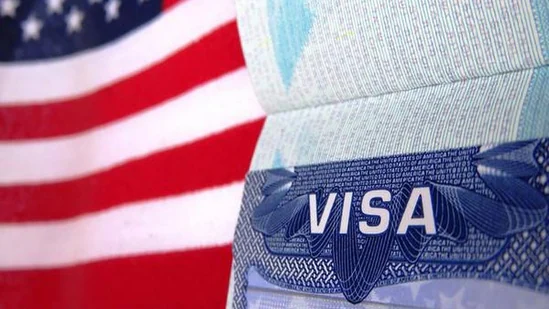
🏛️ From Paper to Pixels: How Bank Loans in the USA Have Entered the Future (2025 Edition)
🌐 Introduction: The Digital Loan Boom in America In 2025, walking into a bank to get a loan feels as old-fashioned as using a fax machine. Banking in the USA has fully embraced the fintech frontier — and bank loans have become faster, smarter, and far more user-centric. If you're thinking of applying for a loan today, you're entering a world of data-driven decisions, zero paperwork, and real-time approvals — all in the palm of your hand. 🔍 Section 1: Key Trends Defining Bank Loans in 2025 1. Hyper-Personalized Lending Loan offers are now based on: Your online purchase habits Social signals Gig and side-hustle income AI-inferred life events (e.g. planning to get married? You might get a home loan offer automatically) 2. No-Touch Loan Applications Thanks to biometrics and open banking, you can: Apply via voice or fingerprint Get approved in under 5 minutes Track everything in a single mobile dashboard 3. Green is the New Gold Sustainability scores now influence loan interest rates. Choosing an eco-home or electric vehicle? Expect: Government-backed low-interest loans Eco-incentives from banks Credit boosts for green behavior 📊 Section 2: How Different Americans Are Using Loans in 2025 Borrower Type Most Popular Loans Features Borrowers Love Young Professionals Student loan refinancing, EV loans Fast mobile approvals, tax-linked repayment Entrepreneurs Business expansion loans Revenue-based repayment, startup accelerator ties Remote Workers Relocation/home loans Geolocation-based pre-approval Parents Education and home improvement loans Flexible EMIs, kid-focused perks 💬 Section 3: Borrowing Stories from Real Americans 🗣️ "I bought my first home using a fully digital mortgage platform — no paper, no agent, just one app. It even suggested the best time to lock in a rate." – Jenna, 29, Colorado 🗣️ "My business got approved for $25K in under 24 hours thanks to POS transaction data. The AI model knew more about my cash flow than I did." – Derrick, 35, Michigan ⚠️ Section 4: The Dark Side of Instant Lending While speed and personalization are great, there's a catch: AI bias can lead to unfair interest rates. Loan stacking from multiple apps can quietly push users into hidden debt traps. BNPL culture is turning short-term borrowing into long-term regret. Data privacy concerns grow as financial institutions use more personal insights. ✅ Section 5: Borrow Smart in 2025 — Pro Tips 📱 Use credit-tracking apps like Credit Karma, Experian Boost, or Chime. 🧾 Read the algorithm’s decision summary — most lenders now provide it. ♻️ Opt for green choices — you'll get better rates and perks. 🤝 Negotiate — just because it’s AI-approved doesn’t mean it can’t be improved. 🔒 Check data-sharing permissions in your banking and fintech apps. 🔮 Conclusion: Borrowing That Works for You “A good loan is not the one that gets approved fast. It's the one that helps you grow without pulling you down.” USA bank loans in 2025 are built around convenience, customization, and connectedness. But behind all the tech, the smartest move is still the most human: stay informed, stay cautious, and borrow with purpose.
.jpg)
💰 Bank Loans in the USA: 2025's Financial Revolution Has Begun
🔍 Section 1: What Makes 2025 Different? 🔹 AI is the New Underwriter Banks now analyze more than just your credit score. They assess: Your earning patterns Lifestyle spending behavior Financial goals Even your career trajectory The result? Loans you qualify for before you even apply. 🔹 Loans with a Conscience Sustainability isn’t just a buzzword — it’s a loan feature. In 2025: Banks offer 0–1% APR for electric vehicles. Home improvement loans prioritize solar and green retrofits. Business loans favor companies with ESG (Environmental, Social, Governance) credentials. 🔹 FinTech + Banking = Embedded Borrowing Need a loan? You may not even realize you’ve taken one. Loans are now: Offered during online checkout. Embedded in ride-share upgrades or tuition payments. Pre-approved and executed via fingerprint or face ID. 🧠 Section 2: Data-Driven Borrower Insights Here’s how different demographics are leveraging this revolution: Demographic Top Loan Types New Benefits in 2025 Millennials Mortgages, auto loans Fast-track approvals, app-based management Gen Z Student & microloans Skill-based repayment plans, financial coaching integration Freelancers Business/personal loans Income pattern recognition, dynamic EMI schedules Green Consumers EV, solar loans Tax credits, eco-incentives, lower rates 💡 Section 3: Real Innovations You Can Use Credit Clarity Dashboards Track your loan status, approval chances, and risk zones in one place. Dynamic Interest Adjustments If your income drops, your rate drops — protecting you from default. Smart Repayment Advisors AI suggests when to pay early, refinance, or consolidate debt for better savings. Risk-Based Loan Shielding Personal loan insurances automatically activate during economic downturns. ⚠️ Section 4: The Hidden Risks The digital-first model is amazing — but not without dangers: Over-personalization = Higher scrutiny. Your coffee habits and phone bill may influence your interest rate. Invisible lending could cause debt stacking — too many small loans at once. Algorithmic bias remains a concern, especially for underserved groups. Data dependency raises ethical and privacy concerns. Always read the fine print. ✅ Section 5: Pro Tips to Win the 2025 Loan Game Know your digital credit trail: Apps like Zogo, NerdWallet, and Chime offer accurate, daily insights. Negotiate terms even if you're approved instantly. AI suggestions aren’t the final word. Choose green, repay less: Federal and bank incentives for sustainable choices are growing every quarter. Bundle smartly: Banks now allow combining personal, business, or educational loans with discounts. 🔮 Section 6: Tomorrow’s Loans (2026 & Beyond) Brace yourself for: Voice-triggered loan requests through home assistants. Credit NFTs for peer-to-peer lending transparency. Emotion-tracked lending: If your wearable detects stress, it pauses loan approvals. Financial Avatars that represent your credit profile in digital space. 🧾 Final Word: The Borrower is Boss "In the new age of banking, power doesn’t belong to lenders — it belongs to the informed borrower." 2025 marks a new chapter in America’s financial story — one written by data, led by transparency, and shaped by personal empowerment. The best way to borrow is to know more, act smarter, and stay one step ahead of the system.

🏦 The New American Credit Era: Inside USA Bank Loans in 2025
🌍 Introduction: Banking in the Age of Personalization In 2025, borrowing in the USA isn’t just about applying for a loan — it’s about how well the system already knows you. From instant approvals to income-linked repayments, bank loans in America have entered a new age — one where personalization, technology, and transparency lead the way. The U.S. financial landscape is now dominated by AI-backed underwriting, climate-conscious credit, embedded lending, and customer-first design. If you’re thinking about borrowing this year — whether to buy a home, start a business, or fund your education — this guide will show you how everything has changed and how you can benefit. 📊 Section 1: The Biggest Changes in 2025 USA Bank Loans 1. AI + Behavioral Lending Models In 2025, banks don’t just look at your credit score. They analyze: Spending behavior Subscription history Freelance/gig payments Mobile app transactions This data feeds predictive models that determine your loan limit, interest rate, and even repayment structure — all in real time. 2. Embedded Lending is Everywhere Loans are now invisible and seamless. While shopping online, buying an appliance, or booking a flight — you’re offered financing at checkout, without needing to visit a bank. 3. Green Loans Get Priority With U.S. banks under pressure to support climate goals, green financing is rising fast: Preferential rates for solar installations, EVs, and sustainable housing. Partnerships with government agencies for eco-incentive loan programs. 4. Dynamic Repayment Systems Borrowers can link their payments to: Freelance income cycles Business profit spikes Tax refund periods This flexibility helps avoid defaults and makes loans feel “lighter” in tight months. 🧑🤝🧑 Section 2: Who’s Benefiting the Most? Borrower Type Loan Benefits in 2025 First-Time Homebuyers AI-prequalified mortgages, digital closings Gig Workers Loans based on app-based income, with seasonal repayment options Small Business Owners Revenue-linked credit, same-day approvals College Students Skill-based student loans with post-graduation grace flexibility Eco-Conscious Borrowers Green auto/home loans with rewards and lower APRs 💡 Section 3: Smart Tech Behind the Scenes Blockchain: Increases transparency in loan terms and contract enforcement. Open Banking APIs: Allows secure sharing of financial data between apps and lenders. Voice & Chatbot Advisors: Guide users in choosing the best loan based on goals. Data Scoring: Alternative credit scoring models use rent, phone bills, and even social trust networks. ⚠️ Section 4: Risks and Red Flags While borrowing has become easier, it’s also riskier if you're not aware: Hidden Fees in BNPL Schemes: "No interest" often turns into backend charges. Over-personalization: Some borrowers face discriminatory rates if their data is misinterpreted. Loan Addiction: Easy credit access can lead to overspending. Privacy Concerns: Your financial patterns are shared — often more widely than you realize. ✅ Section 5: How to Borrow Wisely in 2025 Use AI Budgeting Tools like Copilot, Cleo, or Rocket Money to plan repayments. Check APR and Total Cost — not just monthly payment. Consider Credit Unions & Online Banks for more flexible options. Verify Your Data — request a report of your digital credit profile to ensure accuracy. Explore Government-Backed Loans if you're a student, veteran, or homebuyer. 🔮 Section 6: What’s Coming in 2026? Real-Time Salary-Linked Credit Cards Emotion-Based Credit Assistance (via wearables) Social-Verified Loan Pools — lend and borrow in micro-communities Crypto-Collateral Loans — use digital assets to secure USD-based loans Digital Avatars for loan advice and portfolio simulations 🧠 Final Thought “The new world of lending belongs to those who are financially aware, data-savvy, and digitally equipped.” Bank loans in the USA are now smarter, faster, and more flexible — but they also demand more responsibility. Stay informed, ask the right questions, and use technology not just to borrow — but to borrow better.

💳 Reimagining Credit: How Bank Loans in the USA Are Transforming in 2025
🧬 Section 1: The DNA of a 2025 Bank Loan What makes today’s bank loan radically different from those even five years ago? AI-Powered Risk Profiling: Banks now analyze lifestyle, purchasing behavior, and income volatility to assess creditworthiness beyond the FICO score. Instant Decision Engines: Pre-approved offers and one-click disbursal through mobile apps. Smart Repayment Models: Borrowers can link repayments to their income cycle, profit margins, or even seasonal trends. Eco-Incentives: Opting for electric cars or green homes gets you better interest rates and tax perks. 🧑💻 Section 2: Who’s Borrowing — and Why Here’s how different segments of the American population are leveraging new-age loans: Borrower Type Loan Purpose Key Benefits in 2025 Millennials & Gen Z First-time home & auto buyers Digital-first, zero-paper loans Freelancers Income support or business expansion Flexi-loans tied to online gig income Small Business Owners Equipment, inventory, or cash flow funding POS-linked approvals in 24 hours Sustainable Buyers EVs, solar panels, energy upgrades Green loan incentives, rebates 📱 Section 3: The Rise of Embedded Lending Embedded lending is revolutionizing how Americans borrow. Picture this: You’re on Amazon — and instead of “Add to Cart,” you see “Buy Now, Pay Later – Pre-Approved.” Booking a Tesla? Loan bundled into the checkout flow. Buying a course on Coursera? Get an education loan without leaving the site. This seamless borrowing model is growing across every sector: e-commerce, healthcare, travel, and education. ⚠️ Section 4: Watch Out — Hidden Pitfalls of 2025 Loans Even smart systems can be dangerous if you’re not informed. Risks include: Over-automation: Blindly accepting offers without reviewing terms. Hidden fees in fintech bundles. Surge interest rates triggered by AI predictions of income loss. Predatory BNPL (Buy Now Pay Later) models disguised as “interest-free.” Stay sharp. Not all digital convenience is in your favor. ✅ Section 5: How to Borrow Smarter in 2025 To thrive in this landscape, here’s your action plan: Track your credit health using AI-based apps like Cleo or Tally. Compare more than interest rates — look at APR, duration, and flexibility. Choose lenders with dynamic repayment tools. Leverage your digital history (freelance contracts, gig income, etc.) to negotiate better rates. Explore federal green financing programs that reward eco-friendly choices. 🔮 Section 6: What’s Coming Next? Here’s a glimpse into what 2026 and beyond might look like: Biometric Lending: Authenticate and apply via retina scan or voice. Loan NFTs: Transfer your debt obligation as a token. Emotion-Aware Apps: Get loan recommendations based on financial stress signals. Predictive Saving + Lending Systems: Auto-save to reduce loan dependency altogether. 🧠 Conclusion: Loans That Know You “The best loan isn’t the fastest — it’s the smartest, the fairest, and the one you fully understand.” As America redefines what it means to borrow, knowledge remains your greatest financial asset. In 2025, smart borrowers don’t just accept offers — they control the conversation.

🏛️ USA Bank Loans in 2025: The Age of Intelligent Credit
💡 Key Drivers of the Loan Evolution 1. Hyper-Personalization via Data Intelligence Every click, swipe, and transaction you make is now part of your financial DNA. Banks use this data (securely, with consent) to offer: Pre-approved personal loans Custom interest rates Spending-based repayment plans 2. Climate-Conscious Lending Sustainability is no longer optional. Green loans have surged: 0% interest for EV purchases (with certain banks) Rebates for installing solar energy or insulation Extra credit score rewards for climate-conscious investments 3. Self-Employed and Gig Worker Inclusion Banks now underwrite based on: Platform income (Uber, Upwork, etc.) Digital contracts and transaction consistency AI projections of income stability This opens doors for millions who were once left out of the formal credit system. 🏦 Major Loan Types in 2025 — Reimagined Loan Type What’s New in 2025 Home Loans Digital appraisals, AI-backed affordability assessments Auto Loans EV-first financing, subscription-style vehicle ownership Student Loans Pay-as-you-earn 2.0: Fully dynamic tuition repayment programs Business Loans Pre-qualified based on revenue sync with POS or e-commerce APIs ⚠️ New-Age Borrower Challenges While smarter loans sound attractive, here are hidden risks: Overdependence on auto-approvals: May lead to overborrowing. Algorithmic bias: AI can still misjudge niche income profiles. Digital fatigue: Managing finances entirely online can be overwhelming without education. Privacy trade-offs: Sharing financial data with third parties requires caution. ✅ Smart Borrowing Strategy for 2025 Run your financial profile through multiple apps like Mint, Credit Karma, and your bank’s AI assistant. Compare APR + embedded fees — don’t just look at the interest rate. Go green where possible — banks reward climate-friendly spending. Build a hybrid credit footprint: traditional + alternative (e.g. rent, subscriptions). Use dynamic repayment options that adjust if your income changes. 🔮 The Future of USA Lending — 2026 and Beyond Voice-authorized borrowing via home devices like Alexa. Smart-contract auto-repay via blockchain tied to salary cycles. Emotional AI to detect borrower stress and recommend solutions. Bank-backed financial therapists replacing loan officers. 🧠 Final Thought In 2025, a loan isn’t just a transaction — it’s a tech-driven relationship between your financial habits and your life goals. Whether you’re buying a home, funding your startup, or paying for your child’s education — the way you borrow reflects who you are financially. With knowledge, clarity, and the right tools, you can make that reflection a powerful one.

🏦 USA Bank Loans in 2025: The Digital Transformation of Borrowing
The New Borrower Profile: Who’s Taking Loans in 2025? Tech-Savvy Millennials and Gen Z: Seeking instant approvals and mobile-first experiences. Gig Workers & Freelancers: Demanding flexible payment plans to match irregular income. Small Business Owners: Leveraging digital platforms for quick capital to innovate and scale. Sustainability Advocates: Preferring green loans to support eco-friendly projects and lifestyles. Innovations Shaping the Loan Industry 1. AI-Powered Risk Assessment and Personalized Offers Gone are the days of one-size-fits-all loan terms. AI analyzes transaction histories, employment trends, and even social factors to craft personalized loan offers with competitive rates. 2. Green Loans and Eco-Incentives Banks actively promote loans tied to sustainable projects — like solar panels, electric vehicles, and energy-efficient homes — often offering reduced rates and tax advantages. 3. Income-Adaptive Repayment Models Borrowers with variable incomes benefit from repayment schedules that adjust monthly payments in line with actual earnings, reducing default risk and financial stress. 4. Instant Loan Processing & Disbursement With robust mobile applications and digital identity verification, loan approval and fund disbursement can happen in under an hour. The Role of Cutting-Edge Technology Blockchain: Ensuring transparency, security, and automated contract enforcement. Biometric Security: Fingerprint and facial recognition securing loan accounts. Voice Assistants: Managing loans via conversational AI for convenience and accessibility. Embedded Lending: Seamlessly integrated loans within everyday apps like e-commerce, travel, and ride-sharing platforms.
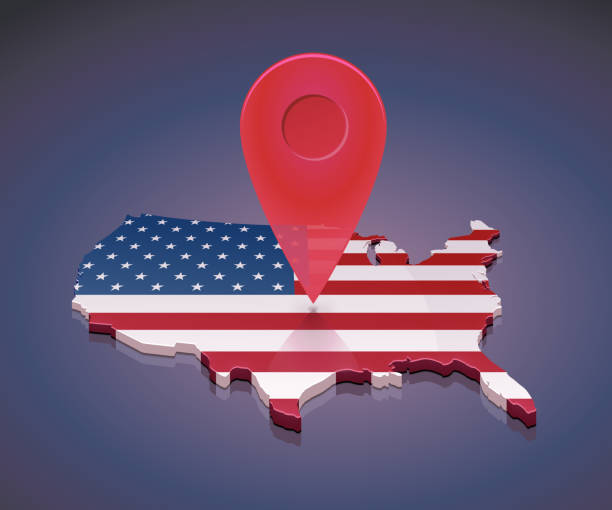
🏦 Navigating USA Bank Loans in 2025: Trends, Challenges, and Opportunities
Section 1: Who Is Borrowing and Why? Young professionals and first-time buyers are driving demand for affordable mortgages amid fluctuating housing prices. Freelancers and gig workers seek flexible loan structures that accommodate inconsistent income streams. Small business owners require rapid access to capital to adapt and grow in competitive markets. Eco-conscious borrowers prioritize green loans to finance sustainable homes, vehicles, and businesses. Section 2: Key Trends in Bank Loans for 2025 1. AI-Enhanced Credit Assessment Banks leverage AI and machine learning to analyze a broader range of data — including spending habits, employment history, and even social behavior — enabling more accurate risk assessments and customized loan offers. 2. Sustainable and Green Financing Green loans are growing in popularity, incentivizing borrowers with lower rates and rewards for investing in energy-efficient and environmentally friendly projects. 3. Flexible Repayment Solutions Innovative repayment plans adapt monthly installments based on real-time income, reducing default risk especially for those with variable earnings. 4. Instant Loan Approvals Mobile-first applications enable microloan approvals in minutes, providing swift financial relief for urgent needs. Section 3: Technology Driving the Lending Revolution Blockchain and smart contracts increase transparency, automate payments, and minimize fraud. Voice and biometric authentication streamline secure access to loan management. Embedded lending platforms integrate financing options into everyday apps like e-commerce and ride-sharing. AI-powered chatbots assist borrowers with personalized advice and 24/7 support. Section 4: Challenges and Considerations for Borrowers Interest rate fluctuations require careful selection of fixed vs. variable rate loans. Data privacy concerns demand vigilance over how personal data is used. Over-indebtedness risk grows with easier access to credit. Hidden fees and penalties necessitate thorough review before signing. Section 5: Smart Borrowing Tips for 2025 Compare APRs and total costs across lenders. Keep your credit score healthy by managing debts responsibly. Use AI-driven financial tools for budgeting and repayment forecasting. Opt for green loans if eligible to save money and support sustainability. Lock in interest rates amid volatile markets. Section 6: The Road Ahead — Future Lending Innovations AI-driven financial wellness coaching to help borrowers stay on track. Credit products linked to social and environmental impact metrics. Fully integrated platforms combining loans, savings, investments, and insurance. Enhanced security measures with biometric and voice recognition.

🏦 USA Bank Loans in 2025: Unlocking New Opportunities in a Digital Era
Section 1: The Changing Borrower Landscape The modern borrower is diverse: Young adults and first-time homebuyers seek affordable, fast mortgage solutions amid fluctuating housing markets. Gig economy workers and freelancers demand flexible repayment schedules reflecting their irregular incomes. Small and medium enterprises (SMEs) require quick access to capital to sustain and grow their businesses in competitive markets. Eco-conscious consumers are choosing “green loans” that finance sustainable lifestyle investments. Section 2: Innovative Loan Products and Services AI-Driven Personalized Lending Advanced AI models evaluate a wide spectrum of data points — transaction patterns, social behavior, employment stability — to tailor loan offers, reduce default risk, and speed up approvals. Green and Sustainability-Linked Loans Incentives for borrowers investing in renewable energy, electric vehicles, and sustainable housing have become mainstream, offering lower interest rates and tax benefits. Flexible, Income-Responsive Repayment Plans Borrowers with variable income streams benefit from repayment structures that adjust monthly installments based on real-time income verification. Instant Microloans Mobile-first lenders provide small loans approved within minutes, addressing emergency funding needs with minimal paperwork. Section 3: Technology as a Catalyst Seamless digital applications: The entire loan lifecycle from application to funding can be completed on smartphones, cutting down traditional wait times. Blockchain for trust and transparency: Smart contracts automate repayment schedules and reduce fraud. Voice-activated interfaces: Borrowers can manage loans hands-free, from payment reminders to balance inquiries. Embedded lending: Loans are integrated within everyday apps such as e-commerce platforms and ride-sharing, facilitating point-of-need financing. Section 4: Risks & Precautions Rising interest rates may increase monthly obligations — fixed-rate loans are a safer bet. Overborrowing risks are heightened with instant digital access. Data privacy and cybersecurity must be prioritized when choosing lenders. Hidden costs and fees require careful scrutiny before signing agreements. Section 5: Strategic Borrowing Tips for 2025 Shop and compare multiple loan offers beyond just interest rates. Maintain healthy credit scores through timely payments. Use AI-powered financial tools to forecast repayment capabilities. Seek green loans if aligned with your goals. Lock in interest rates when market volatility is high. Section 6: Looking Forward — The Future of Lending AI-powered financial coaching will guide borrowers toward optimal loan management. Lending products will increasingly reward social and environmental responsibility. Financial platforms will unify lending, saving, and investing into a single experience. Voice and biometric security will enhance ease and safety of loan access. Conclusion: Borrow Smarter in a Tech-Driven Economy Bank loans in 2025 offer unparalleled convenience, personalization, and opportunity. However, borrowers must stay informed and cautious to harness these benefits fully. “The future of borrowing isn’t just about credit—it's about leveraging technology and insight to build lasting financial strength.”
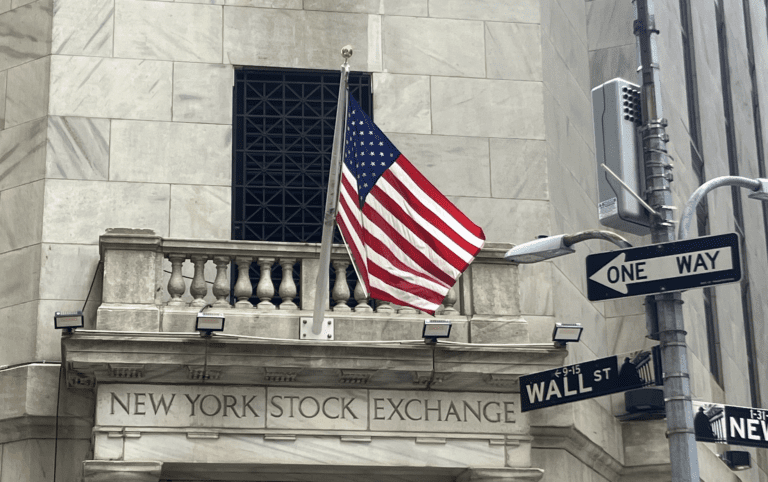
🏦 Understanding USA Bank Loans in 2025: Trends, Technology, and Borrower Insights
Who’s Borrowing in 2025? Millennials and Gen Z: Prioritizing homeownership and career development loans. Gig Economy Participants: Seeking flexible loan structures aligned with irregular income. Small Business Innovators: Utilizing fast-track loans to scale operations. Eco-Friendly Borrowers: Opting for green financing with incentives for sustainable choices. Emerging Trends in Bank Loans 1. AI-Enhanced Credit Underwriting Advanced algorithms analyze comprehensive borrower data — including cash flow, spending behavior, and even social metrics — to better predict creditworthiness and customize loan offers. 2. Green Loans and Sustainability Incentives In alignment with national climate goals, many banks offer preferential rates and rebates for investments in renewable energy, electric vehicles, and energy-efficient housing. 3. Income-Adaptive Loan Repayments Loans now often feature adjustable monthly payments based on real-time income verification, reducing default risks and financial stress for variable-income borrowers. 4. Instant Digital Loan Access Borrowers enjoy rapid, end-to-end digital loan processing through mobile apps, with approval times shrinking from days to mere minutes. The Role of Technology in Modern Lending Blockchain and Smart Contracts: Enhancing security and automating disbursements and repayments. Voice & Biometric Authentication: Facilitating seamless and secure access to loan management. Embedded Lending Platforms: Integrating loan options into everyday apps for frictionless borrowing. AI Financial Coaching: Offering personalized advice to help borrowers manage debt effectively. Challenges Borrowers Should Consider Interest rate fluctuations amid economic uncertainty. Risk of overleveraging with easy digital access. Privacy concerns surrounding data-intensive underwriting. Understanding the fine print on fees and penalties. Tips for Borrowers in 2025 Compare APRs, fees, and repayment flexibility across multiple lenders. Maintain good credit by timely payments and low credit utilization. Leverage digital tools and AI advisors to plan and manage repayments. Explore green loan options if eligible. Consider fixed-rate loans in a rising interest rate environment. The Future Outlook Real-time voice-activated loan management. Credit products linked to sustainable and social impact metrics. Fully integrated financial ecosystems combining borrowing, saving, and investing. AI-driven proactive financial health monitoring. Conclusion: Embracing the Future of Borrowing The 2025 bank loan landscape is more accessible, adaptive, and technology-enabled than ever. Borrowers equipped with knowledge and digital tools can navigate this environment to secure the best financial outcomes and build lasting wealth.

💼 The Future of Personal Loans in the USA: What Borrowers Need to Know in 2025
📈 Section 1: Personal Loans by the Numbers (2025) 📊 $235 billion in total outstanding personal loan debt (up 40% from 2020) 📱 80% of personal loans are applied for through mobile-first platforms ⚡ Average approval time: 3 minutes 🤖 65% of loans are approved without human involvement 💡 30% of new borrowers use non-traditional credit data 💡 Section 2: What’s Different About Personal Loans in 2025? ✅ 1. AI Underwriting Is the Norm Instant review of spending, income, job stability Sentiment analysis from your digital footprint (shopping, reviews, payments) Smart risk assessments that adjust loan terms in real time ✅ 2. Non-Credit Score Borrowing You can now qualify based on: Subscription payment history (Netflix, Spotify) Gig work earnings (Uber, Fiverr) Rent payments and digital wallet behavior ✅ 3. Embedded Loans Buy a phone? Add a personal loan with a swipe. Book a flight? Embedded credit offers in booking apps. Need emergency cash? Digital banks now show “pre-approved” overlays based on transaction spikes. 🧾 Section 3: Loan Types Gaining Popularity Loan Type Avg. Amount Popular Among Notable Feature Emergency Loans $1K–$5K Gig workers, students 1-hour disbursal, no credit pull Wellness & Health Loans $2K–$15K Urban professionals Used for mental health, fitness, IVF Subscription Loans $500–$3K Gen Z, freelancers Paid off monthly like Spotify payments Sustainable Living Loans $3K–$10K Eco-conscious citizens Lower APR for green purchases Wedding & Event Loans $5K–$50K Couples, families 0% APR during planning period ⚠️ Section 4: Watch Out for These Risks AI Transparency Gaps Some borrowers are denied without clear explanations — always ask for an underwriting summary. Loan Overlap Auto-approved credit lines can stack without warning — watch your debt-to-income ratio. Hidden Fees in “0% Interest” Plans Some platforms shift costs into item pricing or use short-term interest holidays. Data Trade-Offs You're paying with more than money — always review what data you’re giving up for faster approval. 🧠 Section 5: Pro Tips for Smart Borrowing ✅ Compare rates across digital lenders and neobanks ✅ Read reviews about customer support (post-loan service matters!) ✅ Use loan calculators to understand full repayment amounts ✅ Opt-in for credit education tools bundled with your lender app ✅ Track your “real” affordability — not just what you’re approved for 🔚 Conclusion: A Borrower’s World In 2025, personal loans in the USA are faster, more accessible, and increasingly tailored to the borrower's life. But with great flexibility comes great responsibility. The smartest borrowers will blend convenience with caution, and tech with wisdom. If you’re planning to take out a loan this year, remember: “It’s not just about what you can borrow — it’s about what you can comfortably repay.”
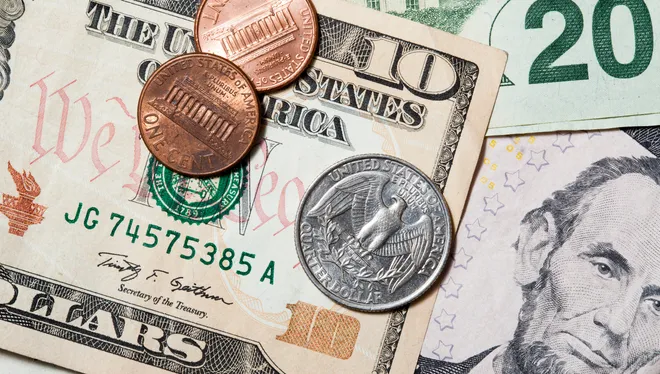
🏦 The Future of Bank Loans in the USA: Trends and Insights for 2025
Introduction: Revolutionizing Borrowing in 2025 In 2025, bank loans in the USA are undergoing a profound transformation. The fusion of technology, data analytics, and shifting borrower needs is reshaping how Americans access and manage credit. Whether you’re aiming to buy your first home, expand a business, or finance education, understanding the evolving loan landscape is essential to making smart, future-proof decisions. Borrower Profiles: Who’s Seeking Loans? Young professionals & first-time buyers: Driving demand for mortgages and personal loans. Freelancers and gig workers: Seeking flexible lending solutions aligned with variable incomes. Small business owners: Prioritizing quick access to capital with minimal friction. Eco-conscious consumers: Favoring green loans with incentives for sustainable investments. Cutting-Edge Loan Products in 2025 AI-Powered Personalized Loans Banks use artificial intelligence to assess creditworthiness beyond traditional scores, factoring in spending habits, employment stability, and even social data to customize rates and terms. Green Loans and Incentives From solar panel installations to electric vehicles, borrowers receive preferential rates and rebates for environmentally responsible purchases. Income-Based Repayment Loans Flexible repayment options adjust monthly payments according to actual income, easing financial stress for fluctuating earners. Microloans for the Gig Economy Short-term, small-value loans provide liquidity to freelancers and contractors, often approved instantly via mobile apps. Technology’s Role in Lending Instant approvals via mobile platforms: Streamlined applications reduce wait times dramatically. Blockchain for transparency: Smart contracts secure loan agreements and automate payments. Voice-activated loan management: Borrowers monitor and control loans hands-free through smart assistants. Embedded lending: Loans integrated into apps like e-commerce, ride-sharing, and freelancing platforms for seamless access. Risks and How to Navigate Them Interest rate fluctuations: Lock fixed rates where possible to avoid surprises. Overborrowing: Maintain awareness of total debt load and avoid stacking loans. Data privacy: Use lenders with strong cybersecurity measures. Hidden fees: Read loan terms carefully to uncover origination fees, prepayment penalties, and other costs. Smart Tips for Borrowers in 2025 Shop around: Compare APRs and full loan terms. Keep your credit healthy: Timely payments and low utilization remain key. Leverage digital tools: Use budgeting and AI advisory apps to plan repayments. Understand green incentives: Explore loans that reward sustainable investments. Stay informed: Keep up with market trends and Fed policies that affect borrowing costs. Looking Ahead: The Next Frontier in Lending AI financial coaches: Personalized real-time advice to optimize borrowing. Sustainability-linked credit products: Rates tied to eco-friendly behaviors. Voice and biometric authentication: Faster, secure loan processing. Integrated financial ecosystems: Borrowing, saving, and investing managed in one app. Conclusion: Borrowing Smarter for a Secure Future The landscape of bank loans in the USA in 2025 is more dynamic, personalized, and technology-driven than ever. Borrowers who embrace innovation, remain vigilant, and plan strategically can unlock unprecedented opportunities for growth and financial resilience.
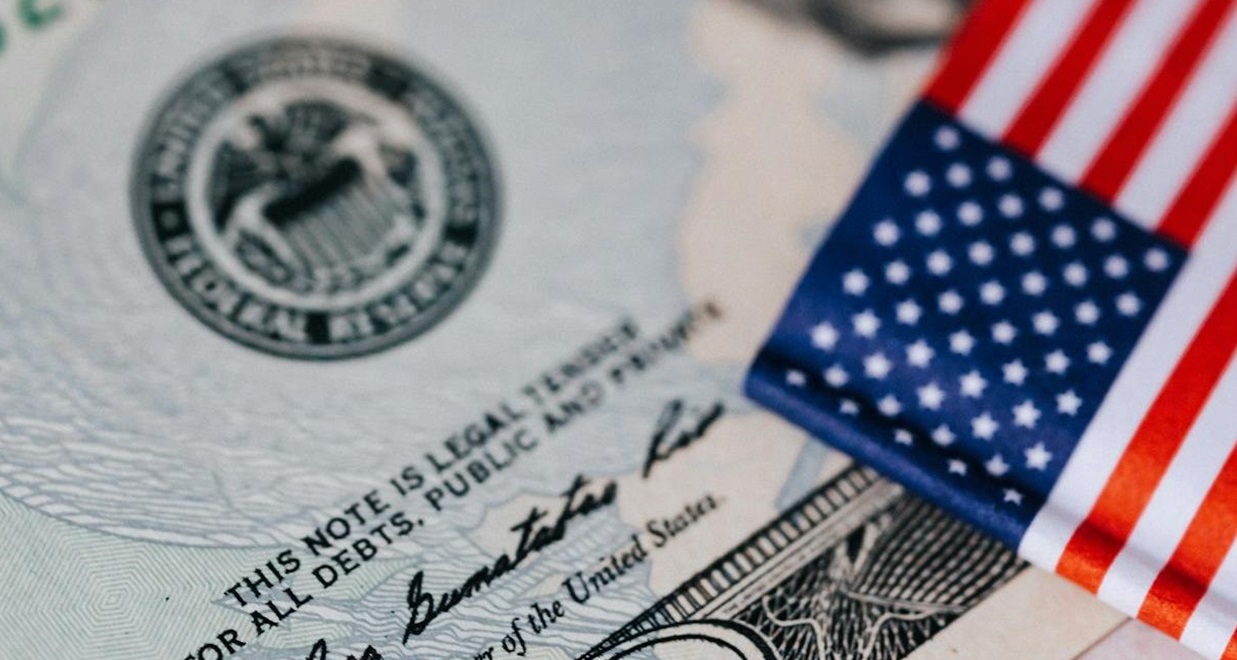
🏦 Navigating the New Era of Bank Loans in the USA: What Borrowers Must Know in 2025
Who’s Borrowing and Why? A Snapshot of 2025 Borrowers Young Professionals & Entrepreneurs: Seeking startup capital, personal growth, and home ownership. Gig and Remote Workers: Demanding flexible, income-sensitive loan products. Eco-conscious Consumers: Opting for green loans with incentives for sustainable purchases. Small Business Owners: Leveraging data-backed loans for faster capital access. Common loan uses include: Mortgage and refinancing (42%) Education and skill development (18%) Vehicle financing, especially EVs (15%) Business expansion (13%) Medical and emergency expenses (12%) Innovations in Bank Loan Products and Processes AI-Driven Credit Assessment Gone are one-size-fits-all credit decisions. Banks now use AI to evaluate diverse data—employment history, spending patterns, digital behavior—to offer tailored interest rates and credit limits. Eco-Friendly Loan Options Green mortgages and auto loans reward borrowers who invest in energy efficiency and carbon reduction with lower rates and rebates. Flexible Repayment Plans Income-based repayments, subscription-style loans, and pause-pay features address volatility in borrower income streams. Fully Digital, Instant Approvals End-to-end loan applications happen on smartphones, with decisions in minutes, using blockchain for transparency and security. Integrated Financial Wellness Tools Loan providers now bundle coaching, budgeting apps, and alerts to help borrowers manage debt sustainably. Key Challenges Borrowers Face Interest Rate Uncertainty: Rising Fed rates can increase borrowing costs quickly. Debt Overextension: Easy credit can tempt over-borrowing. Data Privacy Concerns: Sharing personal data requires trust and safeguards. Complex Loan Terms: Hidden fees and confusing contracts demand borrower vigilance. Best Practices for Borrowers in 2025 Understand APR & Total Loan Costs: Look beyond headline rates to all fees and terms. Maintain Healthy Credit Scores: Timely payments and low credit utilization remain vital. Compare Multiple Lenders: Fintech, credit unions, and traditional banks all compete for your business. Use Tech Tools: Apps and AI advisors can model scenarios and warn against risky borrowing. Plan Repayments Strategically: Avoid stacking loans and consider fixed-rate options when possible. The Future of Borrowing: What to Expect Voice-Activated Loan Management: Approve loans and manage payments hands-free. Embedded Lending Experiences: Loan offers appear in everyday apps—shopping, ride-hailing, freelancing. Sustainability-Linked Credit: Borrowers rewarded for reducing carbon footprints and social impact. AI-Powered Personalized Coaching: Proactive advice to optimize borrowing and financial health. Conclusion: Empowered Borrowing for a Brighter Financial Future Bank loans in 2025 are more than just money—they’re strategic tools shaped by innovation, flexibility, and social responsibility. Borrowers who stay informed, use technology wisely, and plan carefully will unlock not only funds but also opportunities for lasting financial well-being. “In a rapidly evolving economy, smart borrowing isn’t just about credit—it’s about clarity, control, and confidence.”
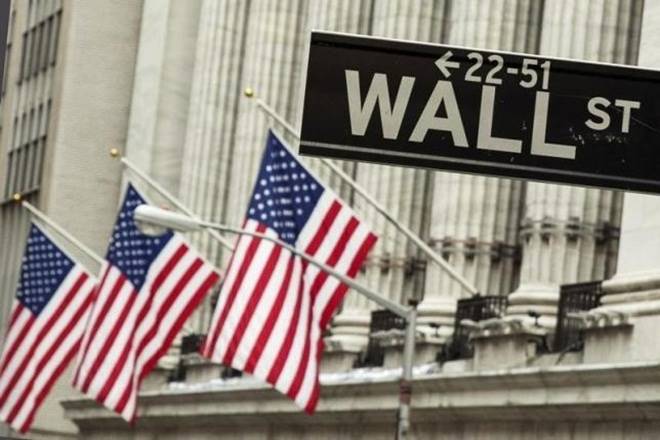
💳 Unlocking Opportunities: The Evolution of Bank Loans in the USA, 2025 Edition
Section 1: The Changing Face of Borrowers Millennials and Gen Z dominate borrowing: Nearly 60% of new loan applications come from borrowers under 40. Gig economy impact: 25% of loan seekers now rely on freelance income streams. Small business surge: Post-pandemic entrepreneurship has led to a 15% year-over-year increase in small business loan demand. Diverse loan purposes: Housing (40%), education/skills training (20%), business expansion (18%), healthcare (12%), and vehicle financing (10%). Section 2: Cutting-Edge Loan Products in 2025 Green Home Loans Designed for energy-efficient and sustainable homes, these loans offer reduced rates, rebates, and extended terms for properties meeting strict environmental standards. AI-Enhanced Personal Loans Banks leverage machine learning to evaluate creditworthiness holistically—beyond FICO scores—considering employment patterns, digital footprint, and cash flow for tailored rates. Income-Responsive Student Loans Flexible repayment plans tie monthly payments directly to borrower income, reducing default risk and financial stress. EV Auto Financing Loans with integrated carbon credits and maintenance bundles incentivize electric vehicle adoption, coupled with buyback guarantees. Microloans for the Gig Worker Short-term, small-dollar loans help freelancers manage cash flow gaps, often with instant approvals through app integrations. Section 3: Technology Driving Loan Accessibility Instant Digital Approvals: AI-driven underwriting can approve loans in under 5 minutes. Mobile-First Applications: 85% of loans initiated via smartphone apps. Blockchain Smart Contracts: Enhancing transparency and speeding up disbursement. Personalized Loan Offers: Dynamic interest rates adjusted in real-time based on borrower behavior. Section 4: Risks and How to Mitigate Them While opportunities abound, risks persist: Rising Interest Rates: Borrowers should hedge against variable rates by locking fixed rates when possible. Data Security: Protect your personal info; use banks with strong cybersecurity. Loan Stacking: Avoid borrowing from multiple lenders simultaneously to prevent debt traps. Understanding Terms: Always review all fees—origination, prepayment penalties, and late charges. Section 5: How to Borrow Smartly in 2025 Analyze the Total Cost: Use online calculators to understand your total payment over the loan term. Maintain Good Credit Hygiene: Pay bills on time and keep credit utilization low. Leverage Financial Tools: Budgeting apps and AI advisors can optimize repayment schedules. Ask About Incentives: Green loans, loyalty discounts, and bundled services can save money. Section 6: The Future Outlook Voice-Activated Lending: Manage loans via Alexa, Google Assistant. Embedded Lending Ecosystems: Loan offers directly within shopping, ride-share, and freelancer apps. Sustainability-Linked Loans: Rates tied to borrower’s carbon footprint reduction progress. AI Financial Coaches: Real-time advice to avoid over-borrowing and optimize repayment.

💵 Bank Loans in America 2025: Navigating New Frontiers of Borrowing
The Borrower of 2025: Who’s Taking Out Loans and Why? Millennials and Gen Z: Leading the demand for personal and business loans, often through digital-first platforms. Gig Economy Participants: Freelancers and contractors require flexible loan options tailored to irregular income. First-time Homebuyers: Thanks to rising real estate prices, many rely on specialized loans and grants. Small Business Owners: Looking for fast, data-driven financing options to keep up with a competitive market. Top Reasons for Borrowing: Homeownership and refinancing Education and skill upgrades Vehicle purchases, especially electric vehicles Medical bills and emergency expenses Business growth and innovation Innovations Shaping Bank Loans Today 1. AI-Powered Loan Underwriting Banks increasingly use AI algorithms analyzing not just credit scores, but spending habits, employment stability, and social signals, delivering personalized interest rates and faster approvals. 2. Green Financing Loans incentivizing eco-friendly investments — like solar panels or energy-efficient appliances — offer lower rates and tax benefits. 3. Subscription Student Loans A new wave of student loans lets borrowers pay monthly fees only after landing a job, easing upfront financial strain. 4. Integrated Digital Applications From application to approval, the entire loan journey is mobile-first and paperless, allowing approval in minutes. 5. Hybrid Loan Products Combining traditional bank loans with fintech features like flexible repayments, loyalty rewards, or bundled services (insurance, financial coaching). Risks and Considerations While loans are powerful tools, pitfalls remain: Variable Interest Rates: Can increase unexpectedly, especially on personal and business loans. Hidden Fees: Origination fees, prepayment penalties, and deferred interest can increase costs. Over-leveraging: Taking on multiple loans without a clear repayment strategy. Data Privacy: Increased data collection raises concerns about personal information security. Smart Borrowing Tips for 2025 Always compare the Annual Percentage Rate (APR), not just interest rates. Keep your debt-to-income ratio below 35%. Utilize digital financial tools to simulate repayments before borrowing. Read the fine print carefully to avoid surprise fees. Choose lenders who prioritize transparency and data security. What’s Next for Bank Loans? Voice-Activated Loan Services: Apply and manage loans using smart home devices. Blockchain Contracts: Secure, transparent loan agreements with instant verification. Embedded Lending: Loan offers integrated directly into apps like ride-sharing or e-commerce platforms. AI Financial Advisors: Personalized loan advice and monitoring in real-time. Social Impact Lending: Loans tied to sustainability goals and community development. Conclusion: Empower Your Financial Future Bank loans will continue to be critical tools for personal growth and economic development. But with rapidly evolving technology and market conditions, educated, strategic borrowing is more important than ever. Remember: A loan is more than money — it’s a commitment between your present and future self. Borrow wisely, plan carefully, and watch your dreams become reality.
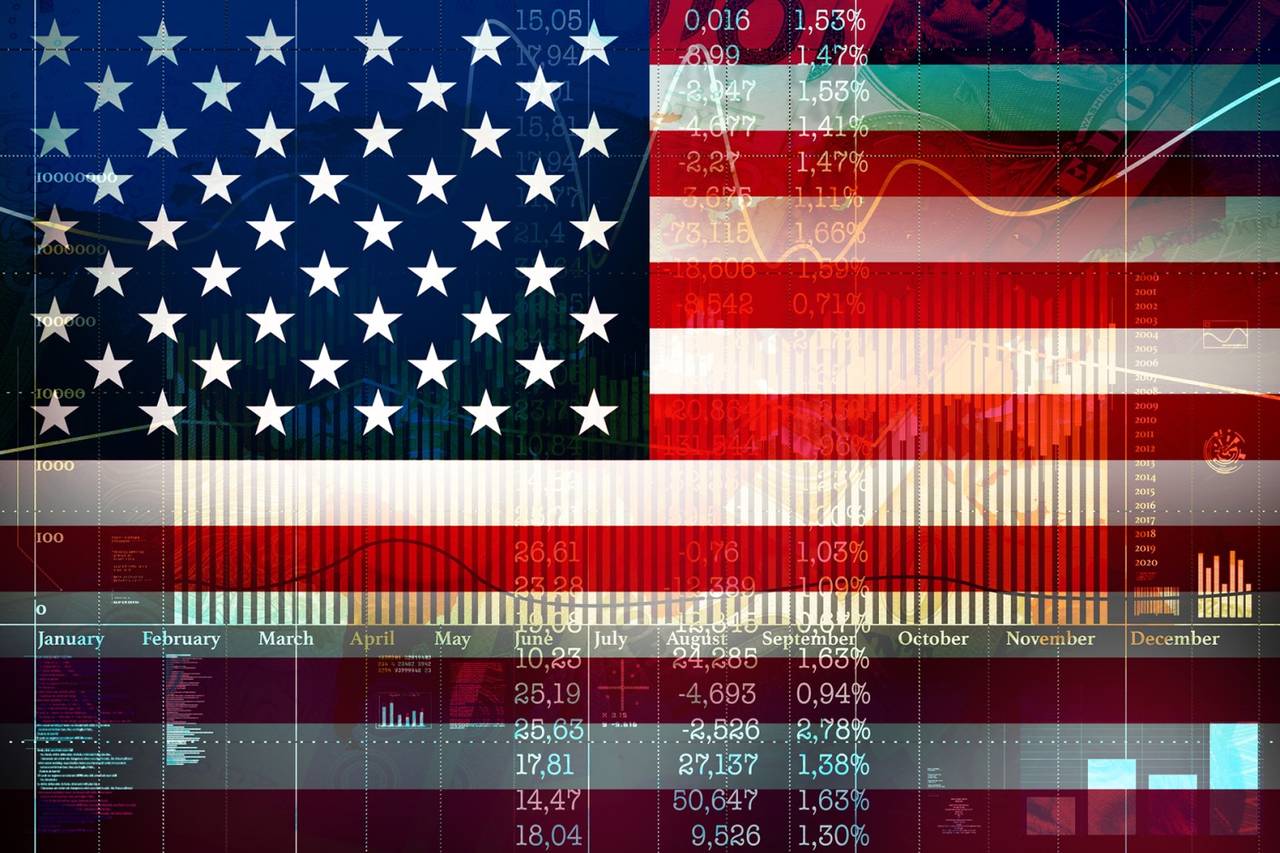
💸 The Future of Bank Loans in the USA: What Borrowers Need to Know in 2025
Who’s Borrowing and Why? The Modern Borrower Profile: Age 25-40: Millennials and Gen Z leading the charge in personal and business loans. Gig Economy Workers: Freelancers and contractors seeking flexible financing. First-time Homebuyers: Representing nearly 40% of mortgage applications. Small Business Owners: Launching and scaling with tailored SBA and alternative loans. Loan Purposes: Home purchases & refinancing Education and career development Medical and emergency expenses Business growth and innovation Auto purchases, especially electric vehicles Types of Bank Loans Dominating 2025 1. Green Mortgages Banks incentivize eco-friendly homes with lower rates and perks — from solar panels to energy-efficient appliances. 2. AI-Underwritten Personal Loans Artificial intelligence evaluates your financial habits and spending behavior, offering customized interest rates beyond traditional credit scores. 3. Subscription-Based Student Loans Innovative models let students “lease” education and pay back only when employed — easing upfront financial burdens. 4. EV Auto Loans Loans for electric vehicles come bundled with maintenance and insurance offers, sometimes tied to carbon footprint rewards. 5. Digital Business Loans Tailored for startups and gig workers, with rapid approvals based on real-time revenue data rather than historic credit alone. Key Trends Shaping Bank Loans Faster Approvals: Digital-first lenders approve loans in minutes. More Transparency: Clearer disclosure of fees, thanks to new federal regulations. Data Privacy Concerns: Borrowers more cautious about sharing behavioral data. Increased Competition: Neobanks and fintechs pushing traditional banks to innovate. Interest Rate Volatility: Borrowers need to watch for changing rates tied to Fed policy. How to Borrow Wisely in 2025 Understand Your APR: Don’t just look at the interest rate; factor in all fees. Keep Debt-to-Income Ratio Low: Aim below 35% to maintain good credit health. Shop Around: Compare offers from banks, credit unions, and fintech lenders. Avoid Over-borrowing: Borrow only what you need with a clear repayment plan. Leverage Financial Tools: Use apps to simulate loans and track payments. The Road Ahead: What’s Next? Voice-Activated Loan Applications: Imagine applying for loans through smart assistants. Blockchain-Verified Lending: Secure, transparent loan contracts powered by distributed ledgers. Lending Embedded in Everyday Apps: From shopping to ride-sharing, get loan offers contextually. AI-Powered Financial Coaching: Real-time advice to avoid debt traps. Social Impact Loans: Loans tied to sustainability and community development metrics. Conclusion: Borrowing as a Strategic Tool Bank loans remain vital to American dreams, but their power depends on how you use them. In 2025, smarter borrowing means blending traditional wisdom with new tech insights. Approach loans not as last-resort fixes, but as strategic tools to build lasting wealth and opportunity. “The best loan is the one that propels you forward — financially and personally.”
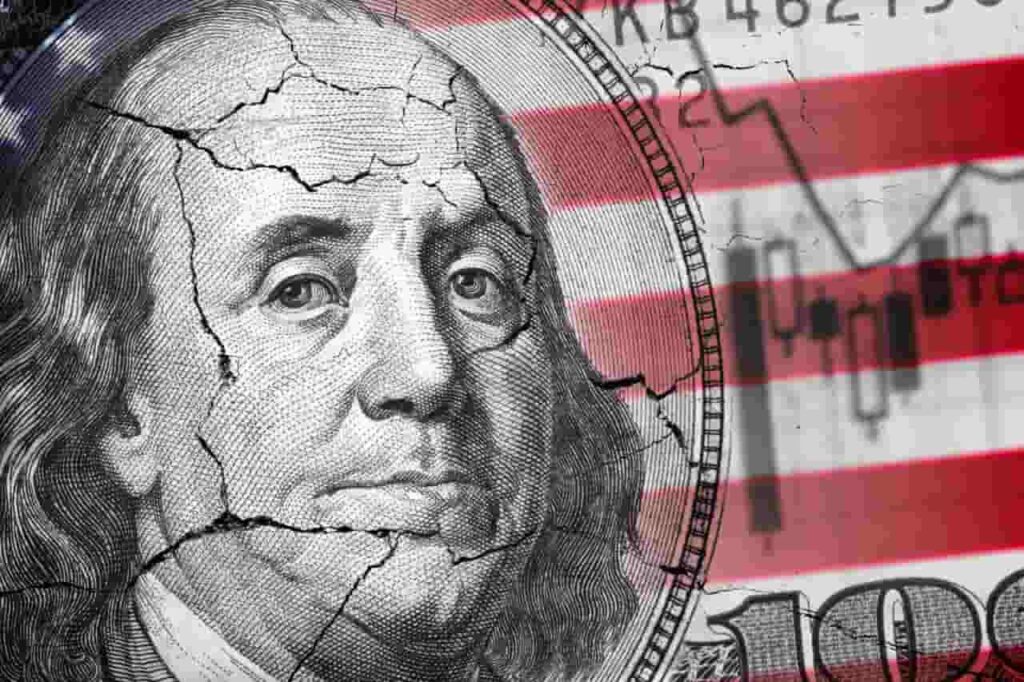
💰🇺🇸 Borrowed Dreams: How Bank Loans Are Reshaping American Lives in 2025
🧾 Section 1: The Modern American Borrower — Profile of 2025 📍 Key Demographics: Average borrower age: 34 Top loan purposes: Home ownership (38%) Business expansion (21%) Medical expenses (14%) Debt consolidation (12%) Credit score average: 683 (FICO) 📲 Digital Lending Has Taken Over: 74% of bank loans are now fully digital, with no in-person visits AI now reviews 90% of applications before a human ever sees them Average time to approval: 6.2 minutes 💳 Section 2: Top Types of Bank Loans in the U.S. 🏠 Mortgage Loans Still the largest loan segment. In 2025: First-time buyers under age 30 make up 41% Federal Smart Home Grants reduce rates if your house has solar panels or energy-efficient cooling 🧰 Personal Loans Used for: Home renovations Credit card consolidation Weddings, emergencies, and even IVF Rates: 8.9% – 15.4% Term: 2–7 years 🚗 Auto Loans EV car loans dominate — with embedded Tesla/GM partnerships inside bank apps Flexible repayments based on driving behavior and carbon offset usage 🎓 Education Loans Now include VR/AI skill certifications and bootcamp financing Subscription-based student loans (pay monthly after employment) are gaining traction 💼 Small Business Loans $3.2 billion disbursed in the first quarter of 2025 Special programs for: Women entrepreneurs Veterans Gig economy startups (Etsy sellers, digital freelancers, food trucks) 🧠 Section 3: The Psychology of Loans in 2025 Loans today aren't just about "can I afford this?", but also "can I grow from this?" Americans now view loans as: Launchpads (to buy, build, expand) Bridges (between paychecks or job changes) Safety nets (in a high-cost healthcare economy) But with this empowerment comes a risk: normalizing debt as progress, without a clear repayment strategy. 🧨 Section 4: Common Traps in 2025 Lending Even as systems get smarter, borrowers fall into new traps: ❗ Trap 😟 Hidden Consequence Buy-now-pay-later overdoses Credit score crash, unexpected fees App-based loan stacking Multiple microloans = compound stress Variable-rate personal loans Jump from 8% to 22% in under 18 months Early repayment fees Punishes good behavior 💡 Section 5: How to Borrow Smarter in 2025 ✅ Check APR, not just rate ✅ Compare 3 lenders, especially one digital-only bank ✅ Avoid interest-only plans unless it's temporary ✅ Use tools like Plaid or Mint to simulate debt impact ✅ Always read the data usage agreement—your loan behavior is now monetized

🏛️💬 Bank Loans in 2025: A Deep Dive into the Backbone of the American Economy
🏦 Section 1: The Current State of Bank Lending in the USA 📊 Lending Snapshot (as of June 2025): Total outstanding U.S. consumer debt: $17.1 trillion Average mortgage rate: 6.5% (fixed) Average personal loan interest: 11.3% Fastest-growing segment: Gig-worker microloans & digital business capital 🔄 Lending is now: Faster: Approvals within minutes using AI Smarter: Creditworthiness scored by your behavior Riskier: More approvals = more defaults, especially with flexible lending apps “What used to take 7 days now takes 7 minutes—but the consequences still last 7 years.” 🧠 Section 2: The Psychology Behind Modern Borrowing In today’s digital world, a loan isn’t just a contract—it’s a relationship with time. You borrow for what you want now and pay with what you hope to earn later. People borrow not just because they’re broke, but because: Credit feels empowering Delayed gratification feels outdated Spending is easier than saving But that freedom has a flip side. Americans are facing rising delinquencies in auto and personal loans, and over-leveraging is silently growing. 🔍 Section 3: New Age Loan Types You Need to Know 🏡 1. Eco-Conscious Mortgages For homes with solar, smart insulation, or net-zero design Lower interest + green tax credits 🚘 2. EV Auto Loans Extended terms up to 96 months Bundled with insurance + carbon offset tokens 🎓 3. Subscription-Based Student Financing No upfront tuition Monthly "knowledge lease" paid post-employment 📈 4. Creator Loans For YouTubers, influencers, and digital entrepreneurs Based on subscriber count, brand deals, or AdSense income 🔐 Section 4: Behind the Scenes — What Banks Are Really Analyzing Forget just your credit score. In 2025, banks also factor in: ✅ Factor 🔍 Why It Matters Real-time income stream Are you earning consistently? App usage habits Are you a risk-taker or a planner? Location & spending clusters Are you living within or above means? Digital behavior signals Do you impulse spend or save smartly? Data is the new down payment. 📉 Section 5: Hidden Pitfalls Most Borrowers Miss Even in 2025, fine print kills more dreams than bad credit. Deferred interest traps: “0% for 12 months” flips to 24% after Origination fees: Up to 5% on personal loans Early repayment penalties: Especially on business or debt restructuring loans Credit stacking: Multiple small loans = one giant repayment sinkhole 🔎 Always read the Annual Percentage Rate (APR), not just the interest. APR = interest + all fees. 💡 Section 6: Smarter Borrowing Strategies Want to borrow like the top 10%? Use these modern rules: Borrow for value creation (home, business, education), not consumption Track your Debt-to-Income ratio — Keep it under 35% Use a loan only when the return exceeds the rate Consolidate smartly — Avoid juggling 5 lenders Protect your privacy — Use secure portals & opt out of data-sharing when possible 📈 Section 7: Where Loans Are Headed Next 🔮 Predictions for 2026 & Beyond: Voice-enabled lending via smart assistants Blockchain-verified personal loan agreements AI underwriters with no human intervention Global credit passports — your history follows you across borders Banking APIs inside social media — imagine loan offers on your Instagram feed 🧾 Final Word: Borrow With a Plan, Not Just a Need Bank loans aren't bad. They’re tools. Just like a hammer builds homes or destroys walls, a loan can build your future—or break your finances. In 2025, being loan smart is a survival skill. “Before you sign, ask: Is this funding my future—or financing my fear?”

🧠💸 The Psychology of Borrowing: Why Americans Take Bank Loans — And What It Really Costs in 2025
🏛️ Part 1: America’s Debt Culture — A Love-Hate Relationship In 2025, the average American carries $92,850 in debt. From student loans to business capital, borrowing isn’t just a financial action—it’s a cultural habit, a coping mechanism, and sometimes, a silent act of survival. Banks are no longer dusty buildings on Main Street. They’re smartphone apps, AI bots, and invisible algorithms. But while the face of borrowing has changed, the emotions remain the same: hope, fear, pressure, ambition. 💳 Part 2: Types of Loans—More Than Just Money Bank loans aren’t one-size-fits-all. Each one tells a different story: 🏠 Mortgage Loans — “The American Dream Loan” Rate (2025): ~6.3% fixed | 5.9% adjustable Term: 15–30 years Trend: First-time homebuyer programs now offer climate incentives (solar credits, insulation rebates). 🚗 Auto Loans — “Wheels for the Future” EV-specific loans now come with federal discounts and free charging station vouchers. Max term: 96 months Many banks link your vehicle’s GPS to risk scoring—drive safer, pay less. 🧰 Personal Loans — “Financial Glue” Used for: Weddings, IVF, medical debt, travel, side hustles Up to $100,000 unsecured Fast disbursal: under 24 hours for qualified borrowers 🧑🎓 Student Loans — “Hope in a Contract” Federal loans fixed at 5.5% Private loans as high as 12% In 2025, borrowers can now “subscribe to education”—pay monthly instead of upfront (Income Share Agreements are booming again). 💼 Business Loans — “Capital Meets Courage” SBA loans up to $5M Gig-based loans (for Uber drivers, Etsy sellers, freelancers) have surged by 33% YoY 🔍 Part 3: The New Loan Approval Formula in 2025 In a traditional bank, you needed: Credit score Income proof Collateral In 2025, you might also be evaluated on: AI-driven digital footprints Spending behavior analytics Browser cookies and app usage Real-time payroll API access Privacy vs Access: Want fast money? Trade your data. 🧠 Part 4: Why We Borrow — The Hidden Psychology Americans don’t just borrow because they need money—they borrow because of: Social pressure: Weddings, kids, college, cars—everything’s a benchmark. Survival: 62% of borrowers in 2024 cited medical bills or inflation as the reason. Entrepreneurial ambition: Over 5 million Americans took loans in 2024 to start small businesses. “Debt feels heavy—but freedom sometimes costs interest.” 🔥 Part 5: Loan Risks Most People Ignore Even with tech upgrades, dangers still lurk: ❗ Risk 💥 Consequence Variable rates Sudden 3x monthly payments Early repayment penalties Unexpected fees Hidden origination fees Loss of upfront capital Data misuse Algorithmic denial in future Modern tip: Always check for the APR, not just interest rate. APR includes all fees. 📈 Part 6: Top Borrowing Trends of 2025 Embedded Loans: Buy a phone, get a bank loan in-app in seconds. Crypto-Collateral Loans: Stake Bitcoin to borrow USD. Eco-Scoring: Borrowers get better rates if their purchases align with sustainability goals. 💡 Part 7: Smart Borrowing Checklist ✅ Compare at least 3 lenders (traditional + fintech) ✅ Know your Debt-to-Income ratio (aim < 35%) ✅ Use loan simulators for worst-case scenarios ✅ Keep a repayment buffer (at least 3 EMIs in savings) ✅ Protect your data with secure loan portals only 🧭 Conclusion: Borrow Boldly, Not Blindly Bank loans are neither good nor bad. They’re a financial tool—like a scalpel in a surgeon’s hand. In 2025, where AI makes the decisions and your data tells the story, the smartest borrowers are the ones who ask the right questions, not just the lowest rates. If you’re planning to borrow this year, don’t just get a loan—get educated.

🏦🇺🇸 Bank Loans in the USA: What You Need to Know Before Borrowing in 2025
🏛️ Section 1: The Core Types of Bank Loans in 2025 1. Home Loans (Mortgages) Typical Rate: 6.25%–7.10% (fixed), 5.85% for adjustable Loan Terms: 15 to 30 years Down Payment: 5%–20% New FHA programs are making it easier for first-time homebuyers to enter the market, especially in affordable housing zones. 2. Auto Loans Terms: 36–84 months Rates: 5.5%–10% depending on credit EV Loans: Extra 1% discount offered by green-focused banks Electric and hybrid vehicles are now eligible for extended loan durations of up to 96 months at subsidized rates. 3. Personal Loans Unsecured, ranging from $1,000–$50,000 Rates: 7%–20% Used for: Medical bills, travel, home improvements, debt consolidation Many banks are integrating AI to offer pre-approval decisions within minutes, even for unsecured lending. 4. Student Loans Federal interest: Fixed at 5.5% (2025–2026 cycle) Private loans: Range from 6.5%–12% APR Income-driven repayment plans remain available for federal loans, and many banks now offer private education loan refinancing. 5. Small Business Loans SBA 7(a) loans and microloans remain popular. Amounts: Up to $5 million Terms: 10–25 years Rates: ~6.75%–9% depending on type and credit history Digital banks like Bluevine and Fundera are offering faster SBA-backed loans with lower documentation requirements. 📉 Section 2: How Borrowing Behavior Has Changed In 2025, Americans are borrowing less frequently but more strategically: Many Gen Z borrowers avoid long-term loans, preferring flexible or buy-now-pay-later (BNPL) financing. Debt consolidation loans are in high demand due to rising credit card interest (now averaging ~22% APR). Gig workers and freelancers are applying for income-based loans with bank partners that support non-traditional employment. 🔍 Section 3: What Lenders Look For Today To improve approval chances in 2025, banks are focused on: ✅ Credit score (700+ for prime rates) ✅ Debt-to-Income Ratio (preferably under 36%) ✅ Verified income with tax returns or real-time payroll API access ✅ Stable banking behavior (no recent overdrafts or late fees) Tip: Tools like Plaid and Experian Boost are helping consumers improve their credit profiles automatically. 📲 Section 4: The Rise of Digital Lending More than 72% of bank loans in 2025 are initiated or completed online. Key Features: AI-powered approvals within 5–15 minutes eSignature & remote KYC Instant disbursal via direct deposit Neobanks (like SoFi, Chime, and Ally) now compete aggressively with traditional banks by offering cashback on loan payments or free financial coaching. ⚠️ Section 5: Common Pitfalls to Avoid Even with automation, many borrowers fall into traps: Variable rate confusion: Rates that adjust every 6 months may look low today but rise later. Hidden origination fees: Some banks charge 1%–5% just to process the loan. Over-borrowing: Many borrowers take the maximum amount offered, not the minimum needed. Pro Tip: Use online comparison platforms like NerdWallet, Bankrate, and Credit Karma to shop for the best deal. 📈 Section 6: 2025 Lending Trends to Watch Credit Inclusion: More banks are lending to immigrants, gig workers, and low-credit-score applicants with alternative credit data. Embedded Finance: Banks are integrating loans directly into e-commerce apps (buy furniture, get loan instantly). Federal Regulations: A national Personal Data Protection Act (PDPA) is under review, which may restrict how banks use consumer data for loan profiling. 🏁 Conclusion: Borrow Wisely, Plan Ahead Bank loans can unlock opportunities—but only when used responsibly. In the dynamic 2025 lending environment, borrowers must stay informed, compare their options, and understand the long-term financial impact of their choices. 💡 Whether it’s for a new home, car, education, or business—know before you owe.

🏦 USA Bank Loans in 2025: Deep Dive into Trends, Risks, and Borrowing Strategies
Introduction: Understanding the Evolving Dynamics of Bank Loans in the United States In 2025, the landscape of bank loans in the USA is undergoing profound transformations fueled by technological advances, economic fluctuations, and evolving regulatory frameworks. For borrowers—from individuals to small businesses—successfully navigating this complex environment requires a nuanced understanding of current trends, inherent risks, and best practices. This article explores the key dimensions of bank lending today and offers strategic guidance to optimize borrowing outcomes. 1. Technology-Driven Disruption in Lending Artificial Intelligence & Machine Learning Banks leverage AI-powered algorithms that assess creditworthiness using both traditional financial data and alternative signals such as: Employment stability trends Utility and rental payment histories Real-time cash flow monitoring This approach improves risk prediction accuracy but also introduces challenges related to fairness, explainability, and borrower trust. Digital Loan Origination and Automation Digital-first platforms streamline loan applications with features including: Instant eligibility checks Automated document verification E-signature capabilities The result: faster approvals, reduced paperwork, and expanded access for underbanked populations. Blockchain and Smart Contracts Emerging blockchain applications enable secure, immutable loan agreements and automate repayment processes through smart contracts, increasing transparency and efficiency in loan servicing. 2. Regulatory Landscape & Consumer Protection Regulatory bodies including the Consumer Financial Protection Bureau (CFPB) and state agencies are enforcing stricter oversight over digital lenders to: Ensure transparency in loan terms and fees Protect consumers from predatory lending and discriminatory practices Mandate data privacy compliance aligned with laws such as the California Consumer Privacy Act (CCPA) Borrowers should stay informed about these protections and their rights. 3. Overview of Popular Loan Products and Innovations Loan Product Recent Innovations Primary Borrowers Personal Loans Flexible repayment, AI-driven interest rates Consumers with variable income sources Mortgages Green incentives, digital closing processes First-time buyers, environmentally conscious homeowners Auto Loans EV financing, telematics-based risk pricing Buyers of electric and hybrid vehicles Business Loans Hybrid fintech-bank models, revenue-based repayments SMEs, startups seeking flexible capital 4. Key Risks and Challenges for Borrowers Data Privacy Risks: Expanded data collection increases vulnerability to cyber threats and misuse. Algorithmic Bias: AI lending models may inadvertently discriminate against minorities or low-income applicants. Overborrowing: Easy access to credit can encourage unsustainable debt accumulation, especially amid inflationary pressures. Economic Instability: Rising interest rates and market fluctuations can tighten credit availability and increase borrowing costs. 5. Strategic Tips for Borrowers in 2025 Maintain Strong Credit Health: Regularly monitor your credit reports, dispute inaccuracies, and manage debt levels. Use Comparison Tools: Employ fintech platforms to shop and compare loan offers efficiently. Understand Loan Terms: Scrutinize interest rates, fees, and repayment schedules before committing. Negotiate When Possible: Lenders may offer better terms based on your creditworthiness and relationship history. Seek Professional Advice: For complex borrowing needs, consult financial advisors or credit counselors. 6. Future Outlook: What Lies Ahead for U.S. Bank Lending Looking forward, the banking sector is expected to embrace: Open Banking Ecosystems: Enabling secure data sharing and personalized credit products. Ethical AI Frameworks: Ensuring transparency, fairness, and accountability in lending decisions. Blockchain Adoption: Streamlining loan origination and servicing with immutable records. Sustainability-Focused Lending: Increased incentives for green and socially responsible borrowing. Conclusion Navigating the U.S. bank loan market in 2025 demands a keen understanding of emerging technologies, regulatory safeguards, and economic conditions. Borrowers who stay informed, leverage digital tools wisely, and adopt disciplined financial habits will be well positioned to access credit that supports their financial ambitions safely and efficiently.
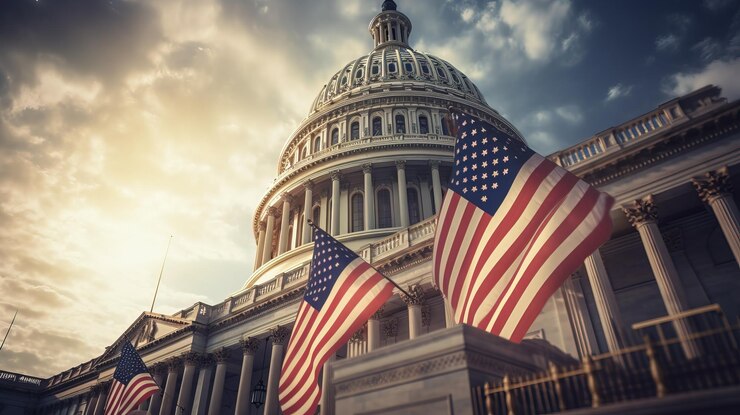
💼 Economic Change in the USA: What’s Shaping Our Financial Future?
The American economy is changing faster than ever before. In 2025, we're witnessing a major shift in how people work, earn, and spend money. Technology, inflation, remote work, and even global events are rewriting the rules of what success looks like in the U.S. So, what’s really going on? Let’s break it down. 📉 Rising Costs of Living From eggs to electricity, the cost of everyday essentials has gone up. Many Americans are feeling the squeeze: Housing prices are high, especially in major cities. Student loans continue to be a burden for millions. Healthcare and insurance costs remain unpredictable. Although wages have increased in some sectors, they often don’t keep pace with inflation, making it harder for families to get ahead. 💻 Work Has Gone Remote — And Global The traditional 9-to-5 office job? It’s no longer the only path. Remote work and hybrid jobs have become the norm for many industries, giving people the freedom to work from anywhere — but also increasing competition. Freelancing and contract work are popular alternatives to full-time employment. Global hiring means you're no longer just competing with Americans – companies can hire talent from anywhere. With flexibility comes less stability: no guaranteed benefits, no job security, and inconsistent income for gig workers. 📈 Rise of the Side Hustle To cope with financial pressure — and fueled by a desire for freedom — more Americans are building side hustles or even becoming full-time entrepreneurs. Selling on Etsy or Amazon Creating content on TikTok or YouTube Starting online services, consulting, or offering digital products Being your own boss is no longer a dream — it’s often a necessity. 🗣️ “In today’s economy, having just one income stream is risky. Multiple streams = security.” 🌎 Technology and AI Are Changing Jobs Artificial Intelligence (AI), automation, and tech tools are creating new jobs while making others obsolete. Jobs in tech, AI, green energy, and cybersecurity are booming. Manual or repetitive jobs are declining as machines take their place. Upskilling and lifelong learning are now essential to stay competitive. 💸 Financial Literacy Is Power As people adapt to this new economic environment, more Americans are focused on understanding money: Budgeting with apps like Mint or YNAB Investing in stocks or crypto Learning about taxes, credit scores, and savings The goal? More financial freedom, less paycheck-to-paycheck stress. Final Thoughts on the Changing Economy The U.S. economy in 2025 is not what it used to be — and that’s both exciting and scary. Opportunities are everywhere if you're flexible and tech-savvy. Traditional job security is fading, replaced by independence and innovation. Economic inequality remains a challenge, but education and access to tools are helping people take control. America is becoming a nation of digital hustlers, remote workers, and everyday investors — proving that while the economy changes, the American spirit of resilience stays strong.

🇺🇸 Bank Loans in the USA 2025: What Borrowers Must Know to Make Informed Decisions
Introduction Bank loans continue to play a critical role in the financial ecosystem of the United States. As we move through 2025, the borrowing landscape is rapidly evolving with advances in technology, changes in regulations, and shifts in borrower needs. Whether you're seeking a personal loan, mortgage, auto financing, or business credit, understanding these changes is essential for making sound financial choices. 1. The Role of Technology in Modern Lending AI-Powered Credit Evaluation Artificial intelligence (AI) now evaluates borrower risk with greater precision, analyzing: Traditional credit reports Alternative data such as rent and utility payments Behavioral and transactional data This enables quicker decisions and personalized loan terms but raises concerns about transparency and fairness. Fully Digital Loan Journeys Digital tools allow borrowers to: Apply online anytime, anywhere Submit documents electronically Receive approvals within minutes Complete loan closings remotely This convenience demands borrowers be vigilant about cybersecurity and data privacy. 2. Regulatory Focus in 2025 Government agencies emphasize: Clear and transparent loan disclosures Preventing discriminatory lending through AI oversight Protecting consumer data privacy with laws like CCPA and GLBA Borrowers should be aware of their rights and ensure lenders comply with regulations. 3. Popular Bank Loan Types and Innovations Loan Type Notable Trends Typical Borrowers Personal Loans Flexible repayment, risk-based pricing Freelancers, gig workers Mortgages Virtual closings, green home loans First-time buyers, eco-conscious Auto Loans EV financing, telematics-based rates Electric and hybrid vehicle buyers Business Loans Revenue-based repayment, fintech collaboration Startups, SMEs 4. Key Risks and Considerations Data Security: Increased data collection heightens breach risks. AI Bias: Automated systems may unintentionally discriminate. Debt Risks: Easy access to credit can lead to overborrowing. Economic Factors: Interest rate hikes impact repayment costs. 5. Tips for Smart Borrowing Regularly check your credit reports. Use fintech platforms to compare loan offers. Read all loan documents thoroughly. Negotiate terms based on your credit profile. Consult financial advisors when needed. 6. Looking Ahead: The Future of Lending Expanded open banking for personalized financial solutions. Enhanced AI ethics frameworks for fair lending. Blockchain for secure, transparent loan contracts. Growth in sustainability-linked loans promoting eco-friendly projects. Conclusion The bank loan environment in the USA in 2025 offers exciting opportunities driven by technology and innovation but also presents new challenges. Borrowers who stay informed, leverage digital tools smartly, and practice responsible borrowing will best navigate this evolving landscape and achieve their financial goals.

🇺🇸 USA Bank Loans in 2025: Navigating Opportunities, Challenges, and Strategies for Success
Introduction The year 2025 marks a pivotal moment in the landscape of bank loans in the United States. Technological innovation, regulatory changes, and shifting economic conditions are reshaping how individuals and businesses access credit. This detailed guide explores the current trends, risks, and smart strategies to help borrowers navigate the complex world of bank loans today. 1. The Digital Transformation of Lending AI and Big Data in Loan Approval Artificial intelligence and big data analytics are revolutionizing lending by: Providing personalized loan offers based on comprehensive financial profiles Accelerating approval times through automated risk assessments Expanding access to credit for underserved populations by incorporating alternative data While these technologies increase efficiency, borrowers must be aware of potential biases embedded in algorithms. Seamless Online Loan Experiences Banks now offer fully digital lending processes, including: Online applications with instant pre-qualification Secure document uploads and e-signatures Remote loan closings and disbursements This shift improves borrower convenience but requires digital literacy and vigilance against cybersecurity threats. 2. Regulatory Environment and Consumer Protections The regulatory landscape emphasizes: Transparency in loan terms and fees to prevent predatory lending Fair lending practices, especially regarding AI-driven decisions Protection of consumer data in compliance with laws such as the California Consumer Privacy Act (CCPA) Borrowers should stay informed about their rights and report any unfair treatment. 3. Key Loan Products and Emerging Trends Loan Type Innovations & Trends Common Borrowers Personal Loans Flexible repayment options, AI pricing Gig workers, freelancers Mortgages Green loans, virtual processing First-time homebuyers, eco-conscious buyers Auto Loans EV financing, usage-based pricing Buyers of electric/hybrid vehicles Business Loans Revenue-share repayment, fintech partnerships Small businesses, startups 4. Challenges and Risks for Borrowers Data Security: Increased data sharing heightens risk of breaches. Algorithmic Bias: AI may unintentionally discriminate against certain groups. Debt Overload: Easy credit access can lead to financial strain. Economic Fluctuations: Rising interest rates impact loan affordability. 5. Tips for Responsible Borrowing Monitor and maintain a good credit score. Use fintech tools to compare loan offers transparently. Read and understand all loan terms before signing. Negotiate interest rates and repayment schedules when possible. Consult financial professionals for large or complex loans. 6. The Future Outlook Broader adoption of open banking for personalized products. Development of ethical AI frameworks to ensure fairness. Blockchain-enabled loan contracts for enhanced transparency. Expansion of sustainability-linked lending supporting green initiatives. Conclusion Navigating the world of bank loans in the USA in 2025 requires a balance of leveraging new technologies and exercising financial prudence. By staying informed and adopting smart borrowing strategies, individuals and businesses can successfully access credit to meet their goals.
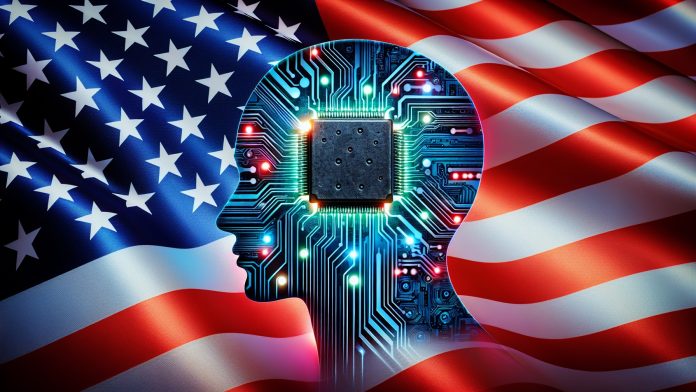
🇺🇸 Understanding Bank Loans in the USA: A 2025 Perspective on Smart Borrowing and Key Trend
Introduction Bank loans remain a fundamental pillar for personal and business finance in the United States. In 2025, borrowers face an evolving landscape influenced by rapid technological innovation, shifting economic forces, and updated regulations. This blog will walk you through the critical trends in bank lending today, potential risks, and practical tips to borrow smartly. 1. Technological Shifts in Loan Processing AI-Driven Credit Decisions Banks increasingly rely on artificial intelligence to evaluate borrower profiles. These AI models incorporate: Traditional credit scores Alternative data like rent, utilities, and online financial behavior Real-time income and spending analytics The result? Faster approvals, customized interest rates, and greater access for those outside the traditional credit system. Digital End-to-End Experience Borrowers benefit from: Online applications and document uploads Instant pre-qualification tools E-signatures and digital loan closings This modernization reduces friction and time to funding but requires borrowers to be comfortable with digital platforms. 2. Regulatory Landscape Federal and state agencies ensure: Transparency in loan terms and costs Fair lending practices, especially in AI applications Protection of consumer data under laws like the California Consumer Privacy Act (CCPA) Understanding these protections helps borrowers safeguard their interests. 3. Loan Products Trending in 2025 Loan Type Innovations & Trends Borrower Profile Personal Loans Flexible terms, AI-based risk pricing Freelancers, gig economy workers Mortgages Eco-friendly loan options, remote processing First-time homebuyers, environmentally conscious borrowers Auto Loans Usage-based insurance and financing Electric and hybrid vehicle purchasers Business Loans Revenue-sharing repayment models Small and medium enterprises 4. Borrowing Risks and Considerations Privacy Concerns: Expanding data use heightens cybersecurity risks. Potential AI Bias: Automated decisions may unintentionally disadvantage some borrowers. Debt Accumulation: Easy credit availability can lead to financial strain. Market Volatility: Interest rates and inflation impact loan affordability. 5. Smart Borrowing Tips Keep your credit report accurate and up-to-date. Leverage fintech comparison tools to find the best loan deals. Review all loan documentation carefully. Negotiate terms based on your creditworthiness and financial situation. Seek advice from financial counselors for complex loans. 6. The Road Ahead: Future of Bank Lending Wider open banking adoption for seamless data sharing. Ethical frameworks guiding AI lending decisions. Blockchain-based contracts for security and transparency. Increased focus on green loans supporting sustainable development. Conclusion Bank loans in the USA in 2025 offer unparalleled convenience and innovation, but also new risks and complexities. By staying informed, leveraging technology wisely, and borrowing responsibly, consumers and businesses can navigate this evolving landscape to achieve financial goals confidently.

🇺🇸 USA Bank Loans 2025: Deep Dive Into Trends, Risks, and Smart Strategies
Introduction In 2025, the landscape of bank loans in the United States continues to transform dramatically. Driven by technological innovation, evolving regulations, and changing economic conditions, borrowers face both new opportunities and complexities. Whether you are seeking a personal loan, mortgage, auto financing, or business credit, understanding the current environment is crucial for making wise decisions. 1. The Technological Revolution in Lending Artificial Intelligence & Machine Learning AI algorithms now evaluate borrower risk using diverse data sets — including traditional credit scores plus alternative indicators such as payment histories on utilities, rent, and even social data. This enables: Faster, more accurate credit decisions Expanded access for thin-file or underserved borrowers Customized loan terms tailored to individual profiles Yet, concerns about transparency and algorithmic bias remain critical. Fully Digital Loan Experiences From application through approval and funding, banks offer streamlined digital processes featuring: Instant eligibility checks Paperless document uploads Electronic signatures and remote closings This shift enhances borrower convenience but requires digital literacy and vigilance against cyber threats. 2. Regulatory Landscape & Consumer Protections Regulators including the CFPB focus on: Ensuring clear disclosure of terms, fees, and penalties Regulating AI lending tools to prevent discrimination Strengthening consumer data privacy under laws like CCPA and GLBA Borrowers should stay informed about protections and rights in this evolving regulatory climate. 3. Bank Loan Products & Innovations in 2025 Loan Category Recent Trends & Innovations Typical Borrowers Personal Loans Flexible repayment, risk-based pricing Freelancers, gig economy workers Mortgages Green mortgages, virtual closing services First-time buyers, eco-conscious buyers Auto Loans Usage-based pricing, EV financing options Buyers of electric and hybrid vehicles Business Loans Revenue-based repayment, fintech collaborations Startups, small and medium businesses 4. Challenges and Risks for Borrowers Privacy & Cybersecurity: Increased digital data collection raises risks of breaches. Algorithmic Bias: AI models can unintentionally perpetuate inequities. Debt Overextension: Easy credit access may lead to unsustainable borrowing. Economic Volatility: Rising interest rates and inflation affect affordability. 5. Strategies for Smart Borrowing Monitor your credit reports regularly for accuracy. Use online comparison tools and fintech platforms to shop loans. Understand every term and fee before signing. Negotiate interest rates and repayment schedules where possible. Consult financial advisors for complex or high-value loans. 6. What’s Next: Future of Lending Broader adoption of open banking for personalized financial products. Development of ethical AI standards for transparency and fairness. Blockchain-based loan contracts improving security and trust. Expansion of sustainability-linked lending rewarding green initiatives. Conclusion The bank loan market in the USA in 2025 is dynamic and full of opportunity — but also complexity. Informed, cautious borrowing combined with the smart use of technology will help consumers and businesses alike harness financing options to achieve their goals sustainably.
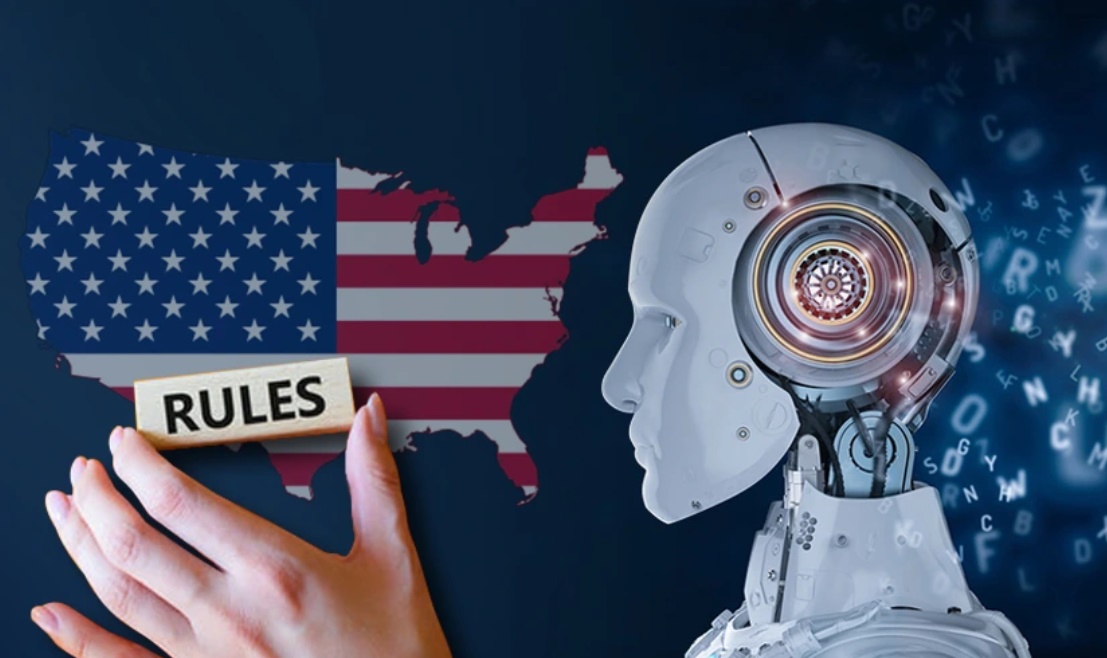
🇺🇸 Navigating Bank Loans in the USA 2025: What Borrowers Need to Know
Introduction: The New Era of Bank Loans In 2025, bank loans in the United States are influenced by a mix of technological innovation, evolving regulations, and changing borrower needs. Whether you're seeking a mortgage, personal loan, or business financing, understanding the current trends and challenges will empower you to make smarter financial decisions. 1. Technological Advancements Transforming Lending AI and Data Analytics Banks are employing artificial intelligence and big data to: Deliver personalized loan offers based on more holistic financial profiles Accelerate loan approval processes Expand credit access to those with nontraditional credit histories Fully Digital Loan Processes From application to disbursement, many banks now offer seamless online experiences with: Digital applications and document uploads Instant prequalification tools E-signatures for contract finalization This has made borrowing more accessible but also demands digital savvy from borrowers. 2. Regulatory Landscape and Consumer Protections Federal and state regulators continue to focus on: Transparency of loan terms and fees Fair lending practices, especially around AI decision-making Data privacy and protection, guided by laws like CCPA and GLBA Borrowers should stay informed about their rights and verify lender compliance. 3. Popular Bank Loan Types and Innovations Loan Type Innovations & Trends Typical Borrowers Personal Loans Risk-based pricing, flexible repayment Freelancers, gig economy workers Mortgages Green mortgages, virtual closings First-time buyers, eco-conscious Auto Loans EV financing, telematics pricing Electric/hybrid car buyers Business Loans Revenue-based repayment, fintech partnerships Small and medium enterprises 4. Risks Borrowers Should Watch For Data Security Risks: Increased digital lending means more personal data at risk. Potential Bias in AI Models: Automated systems may unintentionally discriminate. Overborrowing: Easy access to credit can lead to unmanageable debt. Economic Uncertainty: Interest rate fluctuations impact borrowing costs. 5. Tips for Borrowers in 2025 Regularly check your credit score and report. Compare multiple loan offers using fintech tools. Read all loan documents carefully before signing. Negotiate terms based on your creditworthiness. Seek professional advice for complex loans. 6. The Future Outlook for Bank Loans Wider adoption of open banking for improved personalization. Stronger AI ethics and fairness standards. Blockchain applications for secure lending contracts. Expansion of sustainability-linked lending products. Conclusion The US bank loan market in 2025 offers new opportunities but also new complexities. By staying informed and borrowing responsibly, you can leverage these financial tools to support your goals and safeguard your financial health.
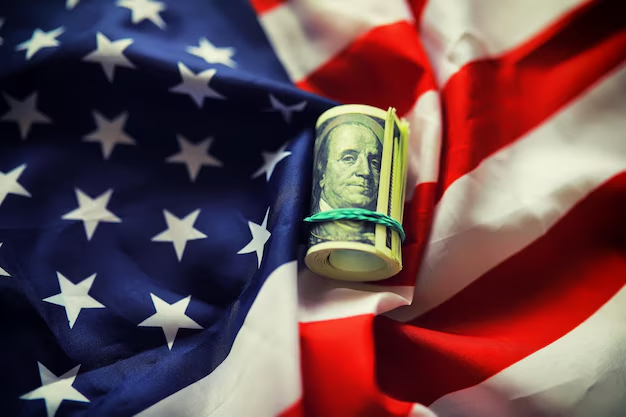
🇺🇸 USA Bank Loans in 2025: Comprehensive Guide to Opportunities and Pitfalls
Introduction As we progress through 2025, the landscape of bank loans in the United States continues to evolve rapidly. New technologies, regulatory changes, and shifting economic conditions create a dynamic borrowing environment. Whether you're considering a personal loan, mortgage, auto loan, or business financing, understanding current trends and risks is essential to make informed financial choices. 1. How Technology is Reshaping Lending Artificial Intelligence and Big Data Analytics Banks now leverage AI and big data to: Improve risk assessment with more granular financial profiles Provide faster loan approvals Personalize loan terms and interest rates Alternative data sources, like payment history on utilities and rent, are helping previously underbanked borrowers gain access. End-to-End Digital Loan Processes Digital platforms enable borrowers to: Apply online with minimal paperwork Track application status in real-time Complete loan signings electronically This has streamlined the borrowing experience but also requires digital literacy. 2. Regulatory Oversight and Consumer Rights The regulatory environment remains vigilant, focusing on: Preventing unfair or deceptive lending practices Enhancing transparency of fees, terms, and repayment obligations Regulating the use of AI to avoid discriminatory outcomes Protecting borrower data under evolving privacy laws like CCPA and GDPR Consumers should educate themselves about their rights and report suspicious activity. 3. Key Bank Loan Types and Trends in 2025 Loan Category Innovations & Trends Typical Borrowers Personal Loans Flexible repayment options, risk pricing Gig workers, freelancers Mortgages Green mortgages, remote closing New homeowners, eco-conscious buyers Auto Loans Usage-based pricing, EV financing Buyers of electric and hybrid cars Business Loans Revenue-share models, fintech partnerships SMEs and startups 4. Potential Challenges for Borrowers Data Security: Increased data sharing heightens cyber risk. Algorithmic Bias: AI models risk perpetuating discrimination. Rising Debt: Easy credit can lead to unsustainable borrowing. Economic Volatility: Interest rate hikes may increase borrowing costs and reduce availability. 5. Strategies for Successful Borrowing Maintain a healthy credit score through timely payments. Use fintech tools to compare loan offers transparently. Read all loan documents carefully and understand obligations. Negotiate loan terms when possible. Seek advice from financial professionals if needed. 6. Looking Forward: The Future of Bank Lending Expansion of open banking to allow secure data sharing. Development of ethical AI standards for fairness. Blockchain-enabled loans for improved transparency and security. Growth of sustainability-linked lending supporting green projects. Conclusion Bank loans in the U.S. in 2025 offer unprecedented convenience and opportunities but come with new risks and complexities. Staying informed, using technology wisely, and practicing responsible borrowing are keys to financial success.
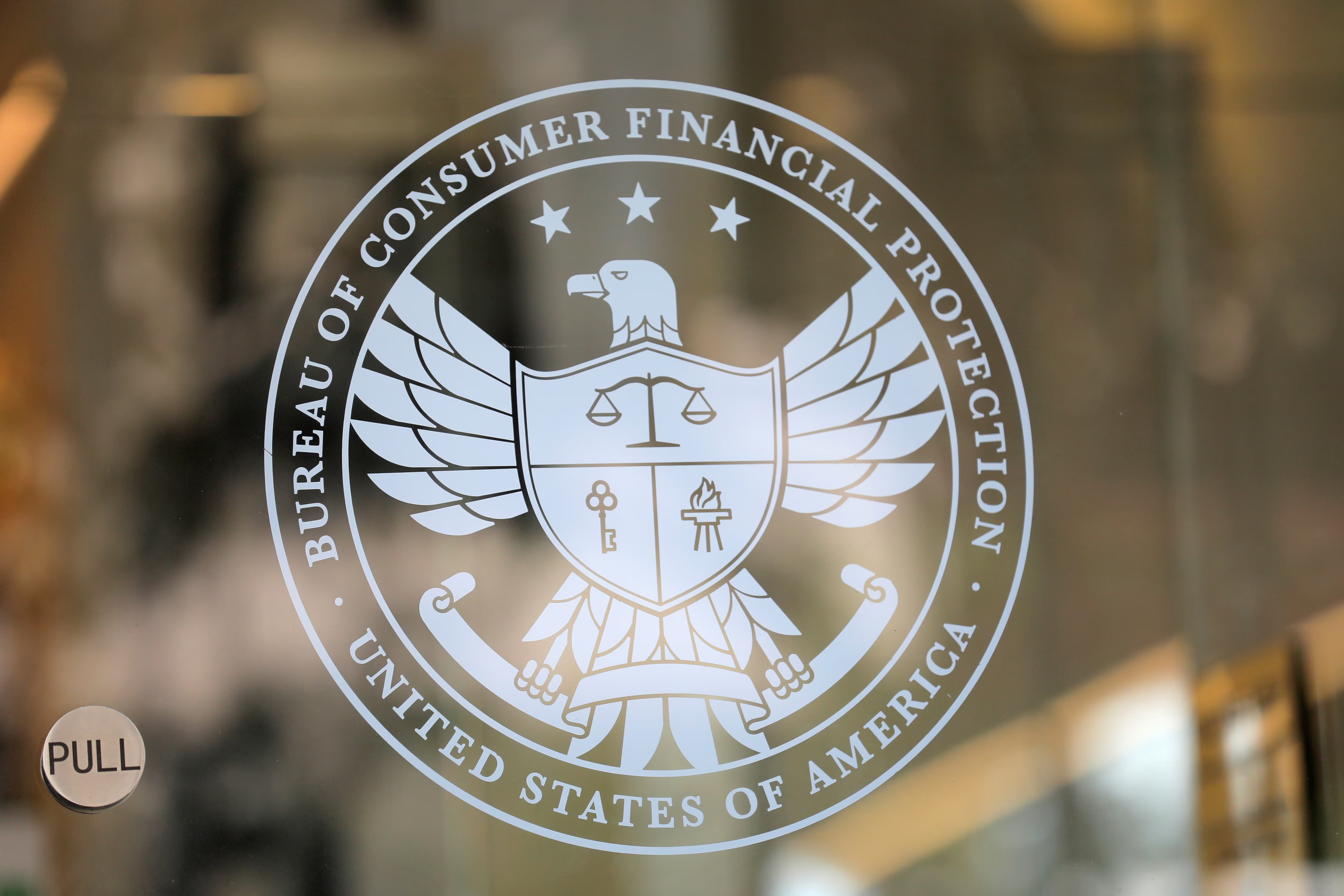
🇺🇸 Understanding USA Bank Loans in 2025: Trends, Challenges, and Smart Borrowing Tips
Introduction: The Modern Borrower’s Guide to Bank Loans In 2025, obtaining a bank loan in the United States has become a blend of cutting-edge technology, regulatory complexity, and changing economic realities. Whether you are an individual looking for a personal or mortgage loan, or a business owner seeking capital, understanding the current landscape is critical to making informed financial decisions. This article explores key trends shaping bank loans in 2025, outlines major risks, and offers actionable advice for borrowers aiming for success. 1. The Technology Revolution in Lending AI-Powered Credit Evaluation Banks increasingly use AI and machine learning to assess creditworthiness. Unlike traditional methods relying heavily on credit scores, these models incorporate: Alternative financial data (e.g., utility, rental payments) Behavioral data from digital footprints Real-time income and cash flow analytics This leads to faster decisions and expands access, especially for those previously underserved. However, borrowers should be aware of potential biases in automated systems. Digitization and Seamless Experience The loan application process has become predominantly digital: Instant prequalification tools Paperless document submission E-signatures and digital contracts These innovations reduce waiting times and improve customer experience. 2. Regulatory Environment and Consumer Protection The Consumer Financial Protection Bureau (CFPB) and other regulatory bodies are focused on: Transparency of loan terms and fees Accountability in AI decision-making to prevent discrimination Data privacy compliance under laws like the California Consumer Privacy Act (CCPA) Borrowers should familiarize themselves with these protections and verify lender compliance. 3. Popular Bank Loan Products & Their Innovations Loan Type Innovations & Trends Borrower Profile Personal Loans Risk-based pricing, flexible terms Freelancers, gig workers Mortgages Green home incentives, virtual closings First-time buyers, eco-conscious buyers Auto Loans EV financing, telematics-based pricing Electric and hybrid vehicle buyers Business Loans Revenue-based repayment, fintech partnerships Startups, small and medium enterprises 4. Risks and Considerations for Borrowers Privacy Risks: Broader data collection heightens cyberattack vulnerabilities. Algorithmic Bias: AI models may unintentionally disadvantage certain groups. Debt Accumulation: Easy credit access may lead to unsustainable borrowing, especially in inflationary contexts. Economic Uncertainty: Interest rate hikes and economic shifts can tighten credit availability. 5. Tips for Smart Borrowing in 2025 Regularly review credit reports and maintain a strong credit score. Use comparison tools and fintech platforms to evaluate loan offers. Carefully read and understand all loan terms, fees, and penalties. Negotiate loan terms whenever possible based on your creditworthiness. Consider consulting financial advisors for complex or large loans. 6. What the Future Holds Open banking initiatives enabling secure data sharing for personalized loan products. Ethical AI frameworks to promote transparency and fairness in lending decisions. Increasing adoption of blockchain for secure loan contracts and repayment tracking. Expansion of sustainable lending products rewarding eco-friendly projects. heir rights, and approach borrowing with discipline will

🏦 USA Bank Loans in 2025: Navigating the Complexities with Confidence
Introduction: The Evolving World of Bank Loans The banking and lending landscape in the United States is rapidly changing in 2025. Advances in technology, shifting economic trends, and tighter regulatory frameworks have transformed how loans are offered, processed, and managed. For borrowers — individuals and businesses alike — understanding these dynamics is essential for making smart financial decisions and avoiding common pitfalls. 1. The Technological Shift in Lending AI and Machine Learning Take Center Stage Artificial intelligence is redefining credit risk assessment. By analyzing a wider set of data beyond traditional credit scores — including rental payments, utility bills, and online financial behavior — AI models provide a more comprehensive risk profile. This leads to: Faster loan approvals More personalized interest rates Inclusion of underserved borrowers However, concerns around transparency and algorithmic bias remain critical. Digitization and Automation The loan application process is now predominantly digital, offering: Instant eligibility pre-checks Paperless documentation uploads E-signatures for contract completion This results in a more streamlined experience and faster access to funds. 2. Regulatory Environment: Balancing Innovation with Protection Regulators like the Consumer Financial Protection Bureau (CFPB) are focused on: Ensuring clear disclosure of loan terms and fees Mandating transparency on AI-driven decisions to prevent bias Strengthening data privacy standards under laws like the California Consumer Privacy Act (CCPA) Borrowers must stay informed about their rights and lender obligations. 3. Key Bank Loan Products and Innovations Loan Type Recent Innovations Typical Borrowers Personal Loans Dynamic interest rates, flexible repayment Gig economy workers, freelancers Mortgages Green incentives, virtual home buying First-time and eco-conscious buyers Auto Loans EV financing options, usage-based pricing Buyers of electric/hybrid vehicles Business Loans Revenue-based repayment, fintech partnerships Startups, small business owners 4. Risks and Challenges for Borrowers Privacy Concerns: Increased data sharing elevates cyber risk exposure. Potential Bias: AI algorithms may unintentionally discriminate. Debt Overextension: Easy access to credit risks unsustainable borrowing. Economic Instability: Rising interest rates and inflation can increase borrowing costs. 5. Borrower Best Practices for 2025 Monitor your credit score and report regularly. Use fintech platforms to compare loan offers transparently. Understand all loan terms and fees before committing. Negotiate rates and repayment plans when possible. Seek professional financial advice for complex loans. 6. Looking Forward: The Future of Lending Wider adoption of open banking to enhance data sharing and product personalization. Development of ethical AI to improve transparency and fairness. Blockchain implementation for secure loan contracts and tracking. Growth of sustainable and socially responsible lending products. Conclusion The U.S. bank loan market in 2025 presents both exciting opportunities and complex challenges for borrowers. By embracing technological tools, staying informed about regulations, and practicing prudent borrowing habits, individuals and businesses can secure the financing they need to achieve their goals responsibly and effectively.

🏦 USA Bank Loans in 2025: Key Insights, Challenges, and Smart Borrowing Strategies
Introduction: The Changing Landscape of Bank Loans in the United States The U.S. bank loan industry is undergoing a major transformation in 2025. Driven by rapid technological innovation, evolving regulatory policies, and shifting economic conditions, borrowers face a complex environment filled with opportunities and risks. Understanding these dynamics is essential for individuals and businesses looking to secure financing with favorable terms. This article provides an in-depth look at the latest trends in bank lending and offers actionable advice to navigate today’s borrowing landscape successfully. 1. Technological Revolution in Loan Processing AI-Driven Credit Assessment Artificial intelligence is revolutionizing how banks assess loan applications. Sophisticated algorithms evaluate traditional credit data alongside alternative information, such as: Utility and rental payment histories Real-time income verification Behavioral financial patterns This approach leads to faster decisions and broader access but raises concerns about transparency and bias. Fully Digital Loan Journeys Digital platforms now enable end-to-end loan applications—from pre-qualification to signing—without ever visiting a branch. Features include: Instant eligibility checks Automated document upload and verification Electronic signatures for loan agreements This digital transformation improves customer experience and reduces processing costs. 2. Regulatory Trends and Consumer Safeguards Regulators continue to tighten oversight of lending practices to protect consumers: Consumer Financial Protection Bureau (CFPB) mandates clear disclosure of loan terms and fees. New rules require lenders to explain AI-based decisions to ensure fairness and prevent discrimination. Data privacy regulations like the California Consumer Privacy Act (CCPA) safeguard borrower information. Borrowers should stay informed and report unfair practices. 3. Popular Bank Loan Products & Innovations Loan Type 2025 Innovations Typical Borrowers Personal Loans AI risk-based pricing, flexible terms Freelancers, gig economy workers Mortgages Green home incentives, streamlined e-closing First-time buyers, environmentally conscious homeowners Auto Loans EV-focused financing, usage-based pricing Buyers of electric and hybrid vehicles Business Loans Revenue-based repayment, fintech partnerships Small business owners and startups 4. Challenges and Risks for Borrowers Data Security: Extensive personal data collection increases risk of breaches. Bias in AI Models: Potential discrimination against minorities or low-income groups. Rising Debt Levels: Easy credit access may encourage excessive borrowing amid inflation. Interest Rate Volatility: Rate hikes can increase borrowing costs and reduce loan availability. 5. Smart Borrowing Strategies Regularly check credit reports and maintain strong scores. Use fintech comparison tools to identify the best loan offers. Read all loan documents carefully to understand terms and penalties. Negotiate interest rates and repayment options when possible. Consider professional financial advice for complex loans. 6. The Road Ahead: Future Trends in Bank Lending The future will bring: Increased use of open banking for seamless data sharing. Development of ethical AI frameworks to ensure fairness. Broader adoption of blockchain for loan contracts and tracking.
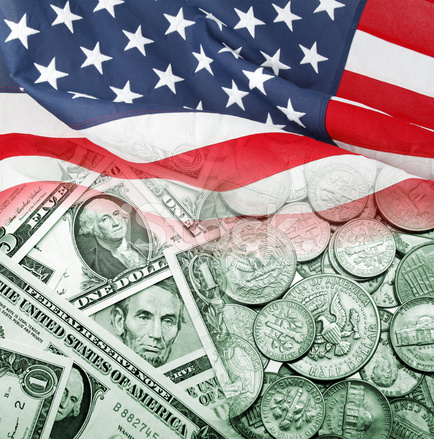
💵🏦 Unlocking American Credit: A 2025 Guide to Bank Loans in the USA
🏦 Types of Bank Loans in the USA 1. Personal Loans Purpose: Medical bills, travel, home repairs, emergencies Amount: $1,000 to $100,000 Term: 1–7 years Rate: 6.5%–18% APR in 2025 Unsecured (no collateral) 2025 Insight: AI-powered underwriting means faster approvals—but also stricter credit checks. 2. Home Loans (Mortgages) Purpose: Buying, refinancing, or building a home Term: 15, 20, or 30 years Rates: ~6.1%–7.2% (fixed); lower for ARM (adjustable-rate mortgages) 2025 Trend: First-time buyer programs and green home financing are growing, especially for eco-friendly properties. 3. Auto Loans Purpose: Buying new or used vehicles Terms: 36–84 months Rates: 5%–11% based on credit score Down Payment: Often 10%–20% required Tip: Electric vehicle loans now offer longer terms and lower interest due to federal incentives. 4. Small Business Loans (SBA + Traditional) Types: SBA 7(a), lines of credit, equipment financing Rates: SBA-backed loans start at 6%–8% Requirements: Business plan, tax returns, 650+ credit score 2025 Note: Women-owned and minority-led startups are getting record-breaking approvals from regional banks. 5. Debt Consolidation Loans Combine high-interest debts (credit cards, payday loans) into one manageable payment. Often have lower interest rates than revolving credit but require good credit. Warning: Always check for hidden origination fees. 📈 2025 Lending Trends to Watch AI Loan Decisioning: Banks use algorithms to assess risk faster—but this reduces negotiation flexibility. Digital-Only Banks: Neobanks like Chime and SoFi are offering competitive rates, bypassing traditional overhead. Buy Now, Pay Later (BNPL): Rising in popularity for short-term financing, but lacking strong federal regulation. Credit Inclusion Tech: New tools allow lenders to consider rent, utility, and subscription payment history to approve thin-credit applicants. ✅ How to Qualify for a Bank Loan in 2025 Key Requirements: Good credit score (680+ preferred) Stable income/employment history Low debt-to-income (DTI) ratio (< 36%) Collateral (for secured loans) Pro Tip: Use credit monitoring apps to track improvements and disputes in real-time. ❗Red Flags to Avoid Variable-rate loans without caps (can skyrocket with inflation) Hidden fees: Origination, late payment, prepayment penalties Predatory lenders: If a deal seems too easy or fast, dig deeper Always read the full disclosure and compare loan offers from at least 3 lenders. 🛠️ Tools to Help You Choose LendingTree, NerdWallet, Bankrate – loan comparison platforms FICO Score Simulator – see how actions will impact your credit AnnualCreditReport.com – get your free credit report from all 3 bureaus 🏁 Conclusion: Borrow Smart, Borrow Safely Whether you're chasing your dream home, a new car, or capital for a startup, bank loans in the USA are powerful tools—but only when used wisely. In 2025, with economic uncertainties and digital acceleration, understanding your borrowing options can be the difference between financial freedom and long-term debt. Take your time. Ask questions. And always read the fine print. Would you like this blog turned into a video script, infographic, or carousel for Instagram? I can also localize it for specific U.S. states or focus it on student loans or first-time homebuyers.

🏦 Bank Loans in the USA: Navigating the Complex Landscape of 2025 with Expert Insights and Strategies
1. Technological Disruption in Lending AI and Big Data in Loan Origination Banks utilize AI-powered platforms that analyze comprehensive borrower data beyond traditional credit scores — including cash flow patterns, employment stability, and even behavioral analytics. This enhances precision in risk assessment but raises concerns regarding fairness and algorithmic transparency. Digital-First Lending Models Fully digital loan applications and approvals, enabled by biometric authentication and instant data verification, are becoming standard. This trend accelerates loan processing times and expands access to underbanked populations. Blockchain and Smart Contracts Innovations in blockchain facilitate secure, tamper-proof loan agreements and automate repayment schedules through smart contracts, improving transparency and efficiency. 2. Regulatory Landscape and Consumer Protection The regulatory environment is tightening to address the risks of digital lending: Consumer Financial Protection Bureau (CFPB) enforces stricter guidelines for transparent disclosure and fair lending. Data privacy laws such as California Consumer Privacy Act (CCPA) and proposed federal legislation impose rigorous controls on borrower data usage. Heightened scrutiny of AI algorithms mandates explainability and fairness, pushing lenders to adopt “ethical AI” frameworks. 3. Loan Product Innovations Loan Type 2025 Innovations Borrower Profiles Personal Loans AI-based risk pricing, flexible repayment schedules Young professionals, gig workers Mortgages Green home incentives, fractional ownership options Eco-conscious buyers, first-timers Auto Loans EV-focused financing deals, telematics-based pricing Buyers of electric/hybrid vehicles Business Loans Hybrid fintech-bank products, income-based repayment SMEs, startups 4. Borrower Risks and Ethical Considerations Algorithmic Bias: AI models may inadvertently discriminate against minority groups or low-income borrowers. Data Privacy: Increased data collection heightens vulnerability to breaches and misuse. Debt Overextension: Easy access to credit may lead to unsustainable borrowing, exacerbated by inflation. Economic Uncertainty: Rising interest rates and labor market volatility impact loan availability and borrower capacity. 5. Strategic Borrowing Best Practices Maintain a strong credit profile by timely payments and low debt-to-income ratios. Utilize fintech tools for loan comparison and credit monitoring. Understand loan terms thoroughly; consult financial advisors when necessary. Negotiate loan conditions proactively, including interest rates and repayment flexibility. Prioritize data security and choose lenders with transparent privacy policies. 6. The Road Ahead: Future Trends in U.S. Bank Lending The future points to a more integrated lending ecosystem featuring: Open banking frameworks enabling seamless data sharing with borrower consent. Advanced AI capable of adaptive and personalized credit products. Increased regulatory emphasis on ethical AI and data security. Growing consumer demand for sustainable and socially responsible lending options.

🏦 USA Bank Loans in 2025: Challenges, Innovations, and Strategic Insights
Introduction: The Shifting Terrain of Bank Lending in America The year 2025 marks a pivotal moment for bank loans in the United States. A combination of rapid fintech innovations, evolving consumer expectations, and tighter regulatory scrutiny is redefining how Americans borrow money. For both individuals and businesses, understanding this evolving landscape is critical to securing credit that fuels opportunity while managing risk prudently. 1. Fintech and Traditional Banks: Converging Paths The Rise of Embedded Lending Banks now partner with fintech firms to embed loan offerings directly into consumer apps—whether for e-commerce, payroll, or investment platforms—delivering credit products at the point of need. Enhanced Underwriting with AI & Machine Learning Leveraging vast datasets, lenders deploy AI-powered underwriting engines to assess borrower creditworthiness beyond conventional metrics. This includes: Real-time income verification Behavioral data analytics Predictive default risk models While increasing loan approval rates, these systems also raise concerns about bias and accountability. 2. The Regulatory Framework: Navigating Complexity Recent regulatory developments affecting bank loans include: Consumer Financial Protection Bureau (CFPB) enhanced oversight of digital lending platforms to ensure fair lending and transparent disclosures. New data privacy laws at state and federal levels impose stricter controls on borrower information collection, storage, and sharing. Ongoing debates about open banking standards aim to balance innovation with consumer protection. Borrowers must be aware of their rights and stay informed about changing policies impacting loan terms and conditions. 3. Loan Products in Focus: Trends and Innovations Loan Type Emerging Features Target Borrower Segments Personal Loans Dynamic interest rates, automated repayment options Millennials, gig economy workers Home Loans Green mortgage incentives, fractional ownership First-time homebuyers, eco-conscious buyers Auto Loans EV incentives, integration with vehicle tracking Consumers buying electric/hybrid vehicles Business Loans Flexible SBA-guaranteed hybrid models Small and medium enterprises (SMEs) 4. Borrower Challenges and Systemic Risks Data Privacy and Cybersecurity: Increasing digital footprints heighten risks of breaches and misuse of sensitive financial data. Algorithmic Transparency: Complex AI models lack explainability, making it hard for borrowers to contest adverse decisions. Debt Accumulation: Easy access to credit can lead to unsustainable borrowing, especially amid inflationary pressures. Economic Volatility: Macroeconomic uncertainties may affect loan availability and terms, requiring careful borrower planning. 5. Strategies for Successful Borrowing Comprehensive Credit Health Management: Regularly monitor credit reports and address inaccuracies promptly. Loan Comparison Tools: Utilize fintech platforms to compare rates, terms, and lender reputations effectively. Financial Literacy Enhancement: Engage in educational programs to understand loan products and responsibilities. Negotiation and Advocacy: Work with lenders to customize loan terms that align with financial capabilities. Professional Financial Advice: For complex borrowing needs, consult certified financial planners or credit counselors. 6. Looking Ahead: The Future of Lending in the U.S. As open banking frameworks mature and AI technologies become more sophisticated, loan products will become increasingly personalized and accessible. However, ethical lending, data security, and consumer empowerment will remain key pillars supporting a fair and sustainable lending ecosystem. Conclusion Bank loans in the USA today are more than just money exchanged—they represent a complex intersection of technology, regulation, and human decision-making. Borrowers who educate themselves, leverage technology wisely, and maintain strong financial discipline will be best positioned to thrive in this dynamic environment.

🏦 Bank Loans in the USA: In-Depth Analysis and Strategic Borrowing in 2025
Introduction: Understanding the Complex Bank Loan Ecosystem of 2025 The U.S. banking sector continues to evolve at an accelerated pace, reshaping how individuals and businesses access credit. In 2025, securing a bank loan involves navigating an intricate ecosystem influenced by regulatory reforms, technological advancements, socio-economic factors, and changing borrower profiles. This blog offers a granular analysis of the current loan landscape, highlighting emerging trends, systemic challenges, and strategies for borrowers to optimize their credit outcomes. 1. The Technological Revolution in Bank Lending AI-Driven Credit Assessment and Risk Management Banks now deploy sophisticated machine learning models that analyze multidimensional data sets, including: Traditional credit bureau scores Real-time cash flow and transaction patterns Alternative data points like rent, utilities, and even behavioral analytics These models improve predictive accuracy but raise questions about algorithmic transparency and potential bias. Blockchain and Smart Contracts Emerging blockchain applications aim to enhance loan transparency and security by enabling immutable loan agreements and automating disbursements and repayments through smart contracts. Digital-First and Omni-Channel Experiences Lenders invest heavily in user-centric platforms enabling borrowers to: Complete entire loan processes online or via mobile apps Receive instant approvals based on automated underwriting Track loan status and manage payments digitally 2. Regulatory Landscape and Compliance The U.S. lending industry in 2025 is governed by evolving regulations designed to: Protect consumer data privacy (e.g., updates to GLBA and state-level laws) Prevent discriminatory lending practices (enforced through ECOA and CFPB guidelines) Regulate emerging fintech players and digital lenders Borrowers should monitor regulatory changes as they influence loan terms, disclosure requirements, and dispute resolution processes. 3. Credit Scoring Paradigm Shift Inclusion of Alternative Credit Data With nearly 45 million Americans still “credit invisible” or underserved, banks incorporate nontraditional credit data to widen credit access: Payment histories for rent, utilities, phone bills Employment data verified through payroll and tax records Behavioral indicators from social media and digital footprints (controversial but growing) Implications for Borrowers This trend benefits those with thin credit files but necessitates maintaining consistent payment behaviors across all financial obligations. 4. Loan Products: Features and Innovations Loan Type 2025 Innovations Typical Borrowers Personal Loans AI risk-adjusted interest rates, flexible tenure Consumers needing debt consolidation or emergency funds Mortgages Digital closings, green loan incentives, fractional ownership models Homebuyers focused on sustainability and affordability Auto Loans EV financing discounts, dealer-integrated digital offers Consumers buying electric or hybrid vehicles Small Business Loans Hybrid models blending SBA support and fintech speed SMEs seeking working capital or expansion funding 5. Risks and Ethical Concerns Algorithmic Bias and Fair Lending While AI improves efficiency, opaque algorithms can perpetuate systemic biases disadvantaging minorities or low-income borrowers. Transparency initiatives and “explainable AI” frameworks are increasingly critical. Data Privacy and Security Loan applicants share vast amounts of sensitive data; breaches or misuse pose significant risks. Borrowers must demand clear data policies and choose lenders with robust cybersecurity. Over-Indebtedness and Economic Volatility Easier credit availability may exacerbate household debt levels, especially amid economic uncertainties like inflation or job market fluctuations. 6. Strategic Borrowing: Best Practices for 2025 Due Diligence: Analyze APR, fees, repayment flexibility, and lender reputation before committing. Leverage Technology: Use loan comparison tools and credit monitoring apps to make informed choices. Maintain Financial Health: Regularly review credit reports, keep debt-to-income ratios low, and build emergency savings. Seek Professional Guidance: Complex loans—such as jumbo mortgages or business credit—warrant consulting financial advisors or credit counselors. Negotiate Terms: Don’t hesitate to negotiate interest rates or repayment schedules, especially with direct lenders. 7. Looking Forward: The Future of Bank Lending The convergence of AI, blockchain, and open banking promises a future where loans are more: Transparent and fair Tailored to individual financial profiles Integrated into holistic financial wellness platforms However, ethical oversight, regulatory balance, and borrower education will be essential to ensure equitable benefits. Conclusion: Empowered Borrowing in a Complex World Navigating the U.S. bank loan market in 2025 demands a comprehensive understanding of evolving technologies, regulatory frameworks, and financial products. Borrowers equipped with knowledge and strategic foresight can access credit on favorable terms, avoid pitfalls, and leverage loans as tools for growth and stability.
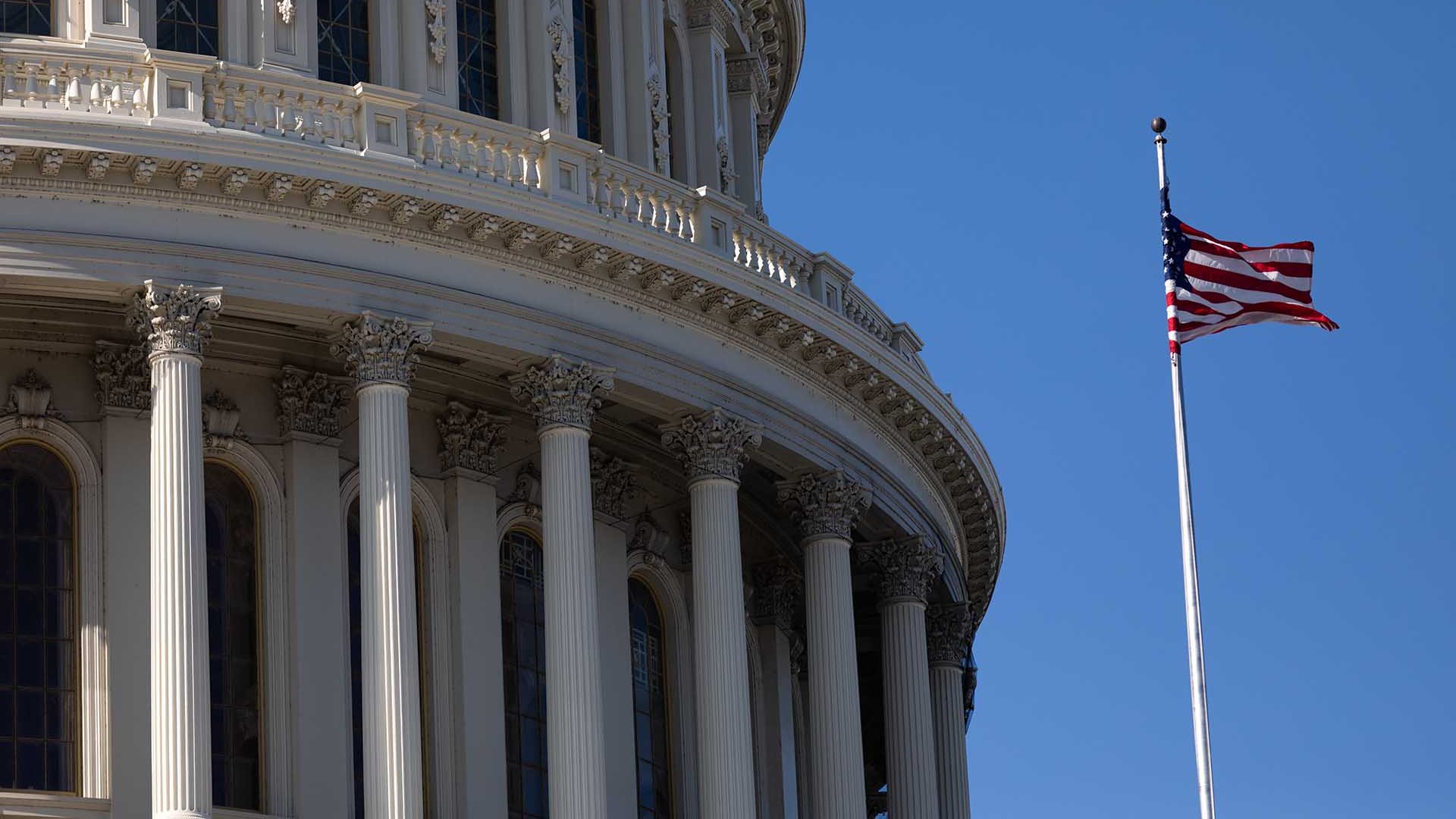
💳 Bank Loans in the USA: What Borrowers Need to Know in 2025
Introduction: The Dynamic Loan Landscape in 2025 In 2025, bank loans in the United States are more accessible yet complex than ever. Advancements in technology, evolving regulatory frameworks, and changing borrower profiles are reshaping the lending market. Understanding these shifts is crucial for securing the best loan and avoiding financial pitfalls. Key Developments Shaping Bank Loans Today 1. AI and Big Data Transform Lending Artificial intelligence enables banks to analyze vast amounts of data — from credit scores to social signals — to assess risk faster and more accurately. This leads to quicker approvals and personalized loan offers. 2. Digital-Only Lending Platforms Rise Online banks and fintech firms now compete with traditional banks by offering fully digital loan applications, often with lower fees and faster disbursal. 3. Alternative Credit Scoring Models Beyond FICO scores, lenders consider rental payments, utility bills, and even subscription histories to evaluate borrowers who might otherwise lack traditional credit. 4. Sustainability-Focused Loans Loans incentivizing green initiatives — like solar panels or electric vehicles — come with benefits such as lower rates or flexible terms. Types of Bank Loans Popular in 2025 Loan Type Average Size Key Features Personal Loans $5,000 - $50,000 No collateral, fast approval, flexible terms Mortgages $200,000+ Digital closings, eco-friendly options Auto Loans $10,000 - $40,000 Special rates for EVs, dealer financing Business Loans $10,000 - $500,000 SBA-backed, income-based repayment options Risks Borrowers Should Watch Out For Hidden Fees: Read all loan documents carefully to avoid surprises. Privacy Issues: Understand what personal data lenders collect and how it’s used. AI Bias: Some automated systems may unintentionally discriminate; know your rights. Over-Borrowing: Easy access to credit requires discipline to avoid debt traps. Tips for Smart Borrowing Shop Around: Compare rates and terms from multiple lenders. Maintain Good Credit: Pay bills on time and keep debt low. Ask Questions: Clarify unclear terms before signing. Seek Expert Advice: Financial advisors can help with large or complex loans.

🏦 Bank Loans in the USA: Navigating the Lending Landscape in 2025
Introduction: The Evolution of Bank Lending As we advance deeper into 2025, the U.S. bank loan industry is undergoing significant transformation driven by technology, regulatory shifts, and changing consumer behaviors. Borrowers now have access to more loan options than ever before but must also navigate a more complex system. This blog explores current trends in bank lending, highlights risks and opportunities, and provides guidance for borrowers aiming to make informed financial decisions. 1. Digital-First Lending Is the New Norm Banks are leveraging digital platforms to streamline the loan application and approval process: AI and Data Analytics help lenders assess credit risk more accurately and quickly. Mobile Applications allow borrowers to apply, upload documents, and sign agreements remotely. Instant Approvals and Faster Funding have become commonplace, reducing waiting times from weeks to hours. 2. The Expansion of Alternative Credit Scoring Traditional FICO scores remain important but are now supplemented with alternative data sources: Utility and rent payments Subscription services and gig economy income Social and behavioral analytics This inclusivity helps expand credit access to millions who were previously underserved. 3. Sustainability-Linked Loans Gain Traction Loans incentivizing eco-friendly investments have grown, with features like: Reduced interest rates for green home improvements Special financing for electric vehicles Support for businesses adopting sustainable practices These products reflect growing consumer and regulatory focus on environmental responsibility. 4. Borrower Beware: Risks and Challenges Complex Fee Structures: New loan products may include hidden fees and penalties. Algorithmic Bias: AI models must be transparent to prevent unfair discrimination. Privacy Concerns: Borrowers must understand what personal data is collected and how it’s used. Debt Overextension: Easy access to credit can lead to unsustainable borrowing. 5. Practical Tips for Borrowers in 2025 Compare Offers Across Lenders: Don’t settle for the first approval; shop around for the best terms. Review All Loan Details: Understand APR, fees, and prepayment conditions before signing. Maintain Financial Discipline: Keep a good credit score, pay on time, and borrow responsibly. Seek Professional Advice: Consult financial experts for complex loan decisions. Conclusion: Embrace Change, Borrow Wisely The bank loan market in the USA is evolving rapidly. By understanding new trends and exercising due diligence, borrowers can leverage innovative loan products to meet their financial goals without falling into common traps. Stay informed, stay cautious, and use technology to your advantage in 2025’s lending environment.
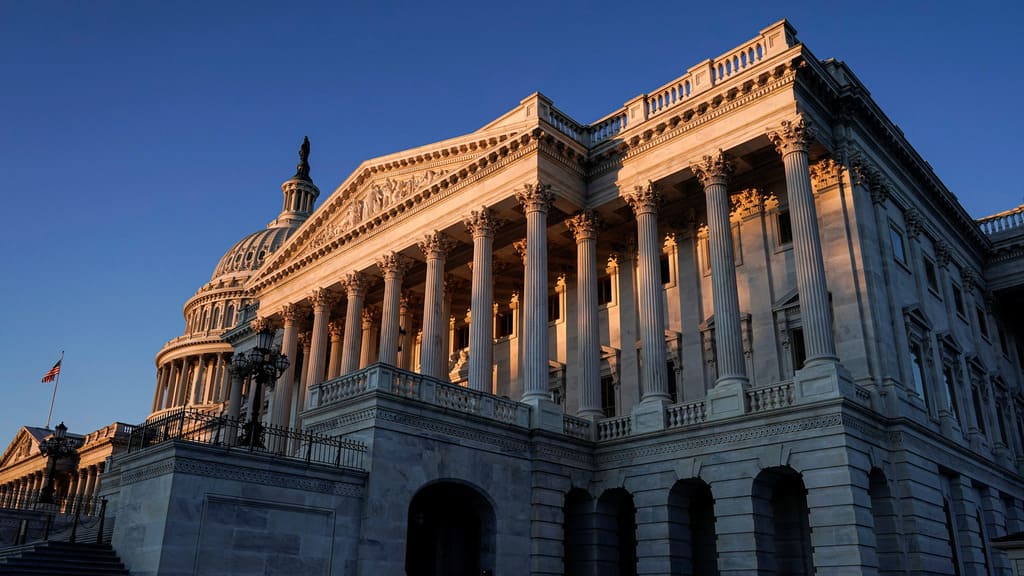
💼 The Future of Bank Loans in the USA: Trends and Insights for 2025 Borrowers
Introduction: The Bank Loan Landscape in 2025 Bank loans remain a cornerstone of personal and business finance in the United States. But in 2025, the process of obtaining a loan is more sophisticated, digital, and tailored than ever before. Borrowers now face a landscape transformed by technology, new lending products, and evolving regulations. This article explores what’s new in bank loans, the trends shaping lending, and how you can navigate the system successfully. Key Trends Shaping Bank Loans in 2025 1. AI and Machine Learning in Loan Decisions Artificial intelligence is revolutionizing loan underwriting. Banks use machine learning to evaluate complex data beyond traditional credit scores, such as: Real-time income and employment data Spending and saving behavior Social and rental payment history This leads to faster, more personalized loan offers but requires borrowers to maintain consistent financial behavior. 2. Rise of Digital-Only Banks and Fintech Lenders Digital banks offer fully online loan applications with minimal paperwork. Their competitive rates and instant approvals attract younger borrowers and those underserved by traditional banks. 3. Flexible Repayment and Hybrid Loan Products 2025 loans increasingly come with flexible repayment options that adjust to your financial situation, helping borrowers manage unexpected expenses without penalties. 4. Focus on Sustainable and Purpose-Driven Financing Green loans and loans for socially responsible projects come with lower interest rates and incentives, encouraging borrowers to invest in environmentally friendly and community-supportive ventures. Types of Popular Bank Loans in 2025 Loan Type Average Loan Size Notable Features in 2025 Personal Loans $5,000 - $50,000 Instant approval, AI risk analysis, no collateral required Mortgages $150,000+ Digital closings, eco-friendly home incentives Auto Loans $10,000 - $40,000 EV loan discounts, dealer-embedded financing Small Business Loans $10,000 - $500,000 SBA-backed options, flexible repayments Challenges Borrowers Must Be Aware Of Hidden Fees & Terms: Always review loan contracts carefully to avoid surprises. Data Privacy Concerns: The expanded use of personal data means borrowers must be vigilant about their privacy. Risk of Over-Borrowing: Fast approvals can tempt excessive borrowing; budget carefully. Potential AI Bias: Algorithms may unintentionally disadvantage certain groups; advocate for transparency. Practical Tips to Secure the Best Loan Use Online Tools: Compare offers on platforms like NerdWallet or Credit Karma. Maintain Good Credit: Pay bills on time and reduce existing debts. Understand Loan Terms: Look beyond rates — consider fees, penalties, and flexibility. Ask Questions: Don’t hesitate to seek clarification or negotiate terms. Looking Ahead: What’s Next for Bank Loans? Emerging technologies like blockchain could soon increase transparency, while biometric verification might speed up approvals further. Borrowers can expect loans to become even more personalized and integrated into everyday digital life. Conclusion Bank loans in 2025 offer unparalleled speed, flexibility, and customization. But smart borrowing requires awareness, discipline, and a good understanding of new lending landscapes. Stay informed, ask questions, and borrow within your means to turn these innovations into financial opportunities.

🏦 Bank Loans in the USA: What’s Changing in 2025 and How to Prepare
Introduction: A New Era of Borrowing The landscape of bank loans in the United States is rapidly evolving in 2025. Technological advances, shifting regulatory policies, and changing borrower expectations are reshaping how Americans access credit. Whether it’s a mortgage, personal loan, or business credit, borrowers need to stay informed to navigate this new terrain effectively. This blog breaks down the key changes shaping bank loans today and offers practical advice for borrowers to make smart, confident decisions. 1. Digital Transformation and Instant Access AI-Powered Underwriting Banks increasingly rely on artificial intelligence to analyze applicants’ creditworthiness using a broader data set, including income streams, spending patterns, and even digital behavior. This means quicker approvals but also a new kind of scrutiny. Mobile-First Loan Applications Borrowers now expect seamless mobile experiences. Many banks offer apps or mobile sites where loan applications, document uploads, and even electronic signatures can be completed on the go. Instant Disbursal Gone are the days of waiting weeks; many loans are now disbursed within hours or even minutes after approval. 2. More Inclusive Credit Scoring Models Traditional credit scores still matter but are no longer the sole gatekeepers. Banks incorporate alternative data sources such as: Rental payment history Utility and phone bills Subscription payments (e.g., Netflix, Spotify) Freelance and gig economy earnings This opens loan access to millions previously sidelined by rigid credit models. 3. Sustainability and Purpose-Driven Loans Loan products now align with broader societal goals: Green home improvement loans offer lower rates for solar panels, insulation, and energy-efficient appliances. Electric vehicle loans come with incentives reflecting government subsidies. Education and healthcare loans are tailored with flexible repayment to ease borrower stress. 4. Potential Risks and Challenges Hidden Fees and Penalties: With new products come complex fee structures—borrowers must carefully review terms. Algorithmic Bias: AI can unintentionally disadvantage certain groups, prompting calls for greater transparency. Over-leveraging: Easy access might lead to excessive borrowing beyond one’s repayment capacity. Data Privacy: Sharing extensive personal data raises concerns about security and consent. 5. Tips to Navigate the 2025 Loan Market Research and Compare: Use reputable loan comparison platforms to identify the best deals. Read the Fine Print: Pay attention to APR, fees, and prepayment policies. Maintain Healthy Credit Habits: Pay bills on time, reduce debt, and monitor your credit score. Consult Financial Advisors: For large loans, professional guidance can prevent costly mistakes. Conclusion: Borrowing Smarter in a Changing World As technology and innovation reshape the U.S. bank loan industry, borrowers have more tools and options at their fingertips. However, with increased choice comes the responsibility to understand and manage loans wisely. By staying informed and vigilant, borrowers can turn 2025’s dynamic loan environment into an opportunity for financial growth and stability.

🏦 Navigating Bank Loans in the USA: What Every Borrower Needs to Know in 2025
Introduction: The Changing Face of Bank Loans The world of bank loans in the United States has transformed drastically by 2025. From the rise of digital-first lenders to the integration of artificial intelligence in underwriting, borrowers now face a landscape that offers more choices — but also more complexity. Whether you’re applying for a mortgage, a personal loan, or a small business loan, understanding the latest trends, risks, and best practices is essential to secure the best deal and avoid pitfalls. Key Trends Impacting Bank Loans in 2025 1. Digital and Instant Approvals Gone are the days of waiting weeks for loan approval. Many banks now offer instant decisions powered by AI, using alternative data like utility payments, rental history, and even social behavior to assess creditworthiness. 2. Rise of Neobanks and Fintech Lenders Traditional banks face stiff competition from online-only lenders who offer competitive rates, flexible repayment options, and fully digital loan processes, appealing especially to younger and underbanked populations. 3. Sustainability-Linked Loans Green loans incentivize eco-friendly purchases and investments — from solar panel installations to electric vehicles — often featuring lower interest rates or rebates. 4. Hybrid Loan Products More borrowers can now access loans combining traditional fixed rates with flexible terms that adjust based on income fluctuations or economic conditions. Common Types of Bank Loans and What’s New Loan Type Average Amount What’s New in 2025? Personal Loans $5,000 - $50,000 AI-powered instant approvals, no credit pull pre-qualification options. Mortgage Loans $150,000+ Digital closing, virtual appraisals, sustainability incentives. Auto Loans $10,000 - $40,000 Embedded financing directly on dealer websites, EV-focused loan products. Small Business $10,000 - $500,000 Fast-track SBA-backed loans with flexible repayment during market shifts. Pitfalls to Watch Out For Predatory Lending Practices: Some fintech lenders may charge hidden fees or sky-high penalty APRs. Data Privacy Concerns: The use of non-traditional data for underwriting raises privacy issues. Over-borrowing: Easy approvals can tempt borrowers to take on more debt than they can handle. Algorithmic Discrimination: AI models might unintentionally discriminate based on location, income, or demographics. How to Borrow Smartly in 2025 Check Multiple Offers: Use online comparison tools to get the best rates. Understand All Terms: Read the fine print, including fees, prepayment penalties, and interest calculation methods. Leverage Financial Advisors: Use bank or independent advisors to review complex loan products. Maintain Good Digital Credit Hygiene: Regularly review your credit reports and monitor your digital financial footprint. Future Outlook Bank loans will continue evolving, with AI and blockchain technologies offering even more transparency, speed, and personalization. Borrowers who stay informed and vigilant will reap the benefits of this fast-moving financial ecosystem.

🏦 Bank Loan Trends in the USA: Opportunities and Pitfalls for 2025 Borrowers
📌 Introduction: Borrowing in the Age of Speed and Data In 2025, the U.S. banking system has undergone a technological and cultural shift. Loans — once slow, paper-heavy, and inaccessible to many — are now fast, digital-first, and surprisingly personalized. From instant approvals to AI-powered risk assessments, borrowing money in the USA has never been easier — or more complex. This blog explores the most important loan trends in 2025, the opportunities they create, and the pitfalls borrowers must avoid. 💡 Section 1: Major Trends Shaping U.S. Loans in 2025 🔹 1. Hyper-Personalized Lending AI underwriters review your real-time bank data, subscriptions, rent payments, and job activity. Borrowers are offered custom loan amounts, terms, and interest rates within seconds. 🔹 2. Embedded Lending Need a new phone? Buy it with a built-in loan offer. Buying a $2,000 e-bike? Finance it from the product page. Even utilities and insurance sites now offer “Pay Monthly with X Bank.” 🔹 3. Eco and Purpose-Based Loans Loans are designed for solar installations, electric vehicles, and sustainable renovations. Governments and green banks offer interest rate discounts for eco-verified purchases. 🔹 4. Credit Scoring Revolution Traditional credit scores (FICO) are now only part of the puzzle. Banks consider: Your rent and subscription payment history Gig economy earnings from apps like Uber, DoorDash, or Etsy Digital behavior (on-time bill payments, digital wallet usage) 📊 Section 2: What Americans Are Borrowing For Purpose Loan Range Popularity Trend Notable Shifts Home Improvement $10K–$150K 📈 Increasing Green upgrades = better rates Medical & Dental Loans $3K–$25K 📈 Steady Growth Cosmetic, IVF, mental health funding Personal Emergency Funds $1K–$5K 📉 Slight Decline Replaced by BNPL or embedded credit EV & Mobility Loans $10K–$80K 📈 Surging Supported by tax breaks and subsidies Side Business Launch $5K–$50K 📈 Rapid Growth Creators, freelancers, eCom startups ⚠️ Section 3: Hidden Pitfalls in 2025 Loan Offers Too Easy to Qualify Pre-approved doesn’t mean it’s affordable. Many borrowers take more than they can handle. Algorithmic Bias AI can sometimes penalize low-income or minority borrowers unfairly. Always ask for manual review. Stacked Loans Auto-approvals from apps and stores can result in multiple micro-loans without your full awareness. Zero-Interest Illusion Look closely — “0% interest” loans may hide: Upfront fees Higher product prices Short deferral windows (then spike to 22–30% APR) 📘 Section 4: How to Borrow Smarter in 2025 ✅ Use Loan Comparators with Live APR Tracking Sites like NerdWallet, Bankrate, and Credit Karma now include live adjustment tools based on your current data. ✅ Keep a Loan Health Dashboard Fintech apps like Cleo, Rocket Money, or Mint now include “Loan Stress Index” calculators. ✅ Negotiate AI Terms Yes, even AI-set offers can be negotiated. Request a second-tier offer, or submit additional documents. ✅ Look for Hybrid Loans These include flexible terms + educational tools, ideal for first-time borrowers or side hustlers.

🇺🇸 “Smart Money in 2025: 7 Financial Moves Every American Should Make This Year”
🧠 Introduction: The U.S. Economy Is Evolving — Are You Ready? From rising interest rates to the explosion of AI side hustles, 2025 is not the same as 2020. Inflation, housing prices, and debt levels are higher, but so is opportunity — if you know where to look. In this guide, we’ll walk through 7 essential financial strategies tailored for Americans who want to: Build financial stability Save smarter Invest better Future-proof their income Whether you're a recent grad, working parent, or gig worker — this is your 2025 money blueprint. 1. 💳 Rebuild Credit (Without Credit Card Debt) The average American holds $6,000+ in credit card debt. But your credit score impacts more than loans — it affects renting, jobs, and even insurance premiums. Action Plan: Use tools like Experian Boost to increase score with utility bills Open a secured credit card if your score is below 620 Use Credit Karma or Credit Sesame to track improvements weekly Tip: Keep credit utilization under 30% of your limit. 2. 🏦 High-Yield Savings > Traditional Banks Big banks (Chase, Bank of America) are still paying 0.01%–0.10% APY. Meanwhile, online banks like: SoFi Ally Marcus by Goldman Sachs …are offering 4%–5% APY in high-yield savings accounts. Park your emergency fund where your money grows, not where it sleeps. 3. 🧾 Max Out Retirement Accounts (Even on a Budget) Even if you're self-employed or earning $40K/year, you can still invest for retirement. Options to Use in 2025: Roth IRA (post-tax, tax-free growth) Traditional IRA (pre-tax, tax-deferred) Solo 401(k) if you freelance or own a business Employer 401(k) + match — always take free money You can contribute up to $7,000 to an IRA in 2025 — more if you’re 50+. 4. 🧠 Use AI to Plan Your Budget and Investments AI tools like: Cleo (budgeting chatbot) Wealthfront (automated investing) Yotta (gamified savings) Rocket Money (subscription tracking + bill negotiation) …can help you control spending, cut bills, and automate investing. You don’t need to be a finance expert — your phone is smart enough now. 5. 🏡 Rethink the “Buy a House” Timeline With mortgage rates still around 6–7% and housing supply limited, renting may still be smarter for some in 2025. Ask yourself: Will I stay in this city for 5+ years? Do I have 20% down? Will monthly mortgage + taxes be <30% of my income? Rent isn’t “throwing money away” if it gives you flexibility and freedom. 6. 📈 Start Small, Invest Consistently You don’t need to be rich to invest. Use apps like: Fidelity (fractional shares) Robinhood (stocks & crypto) Acorns (round-up investing) Public (social investing) Invest just $50/week into index funds (like VOO or SPY) and let compounding do the rest. Long-term wealth = consistency > timing. 7. 💼 Secure a Side Hustle (Not Just a Second Job) In 2025, side income is a survival skill. High-potential hustles in the U.S.: TikTok/Reels content editing Etsy digital products Amazon KDP (print-on-demand books) Freelance writing, AI prompt writing Online tutoring (Chegg, Wyzant) Use platforms like Upwork, Fiverr, or Toptal to get started. Skill + time > job security. 🧾 Bonus: Smart Financial Habits for U.S. Residents in 2025 Habit Tool/App Weekly spending review Rocket Money, YNAB Track net worth monthly Personal Capital (Empower) File taxes early TurboTax, FreeTaxUSA Check credit score Credit Karma, Experian Check health coverage Healthcare.gov, Zocdoc 🧘 Final Thoughts: Your Future Is One Good Habit Away 2025 will challenge lazy money habits — but reward smart, intentional moves. You don’t need a six-figure income. You don’t need to time the market. You just need to start — and stay consistent. The sooner you plan, the sooner you’re free. 🛠️ Free Download: “2025 U.S. Personal Finance Starter Kit” (PDF) Includes: Budget spreadsheet Investment calculator Side hustle starter list Credit score checklist 🟢 Type “USA KIT” and I’ll send it to you instantly.

🇺🇸 Innovation in America 2025: How Technology Is Driving the Future
🤖 Artificial Intelligence: Changing Work and Life AI technologies are now deeply integrated into industries like healthcare, finance, and manufacturing. Healthcare: AI-powered diagnostics and personalized treatments are improving outcomes and lowering costs. Finance: AI automates fraud detection and customer service, enhancing security and convenience. Workforce: While AI boosts productivity, it also disrupts some job sectors, prompting a growing need for reskilling and education. 🌿 Clean Energy Revolution Accelerates With climate change urgency increasing, the U.S. government and private sector have doubled down on clean energy investments. Solar and wind energy capacity have grown exponentially. Electric vehicle adoption is soaring, supported by expanded charging infrastructure. Innovations in battery storage and grid technology make renewable energy more reliable. 🚀 Space Exploration: The New Frontier American companies like SpaceX, Blue Origin, and NASA are advancing space travel and commercialization. Plans for lunar bases and Mars missions are progressing rapidly. Satellite networks aim to improve global internet connectivity. Space tourism is emerging as a new industry, opening up exciting opportunities. 💡 Challenges to Innovation Despite progress, several issues require attention: Data privacy and security: As technology advances, protecting user data is a top priority. Equity and access: Ensuring all Americans benefit from innovation, especially underserved communities. Regulation balance: Crafting policies that encourage innovation while managing risks.

🇺🇸 The 2025 U.S. Economic Outlook: Challenges and Opportunities Ahead
📊 Steady Job Growth, But With Caution Recent data shows the U.S. economy added over 130,000 jobs in May, with unemployment holding steady at 4.2%. This resilience reflects the strength of American workers and businesses adapting to changing markets. But there are caveats: Tariffs on steel and aluminum are pushing up costs for manufacturers, leading some companies to pause hiring or expansion plans. Supply chain disruptions, while easing, still add uncertainty to consumer prices and business investments. 💼 How Tariffs Affect You and Your Wallet Tariffs are taxes on imports intended to protect American industries but often come with trade-offs: Higher material costs for construction, automotive, and consumer goods industries. Potential price increases for everyday products. Companies may delay hiring or expansion until costs stabilize. For consumers, this means keeping a close eye on budgets and looking for smart ways to save or invest in more resilient sectors. 🌍 Renewed Diplomatic Efforts With China After a period of tension, the U.S. and China are reopening diplomatic talks focused on trade and economic cooperation. This could lead to eased tariffs and improved market stability. American exporters and manufacturers may see new opportunities. 🌦️ Weather and Environmental Risks Remain Heavy rains and flood warnings in the Southeast U.S. remind us that climate-related events can disrupt daily life and business operations. Tip: Keep emergency plans updated, especially if you live in vulnerable areas.
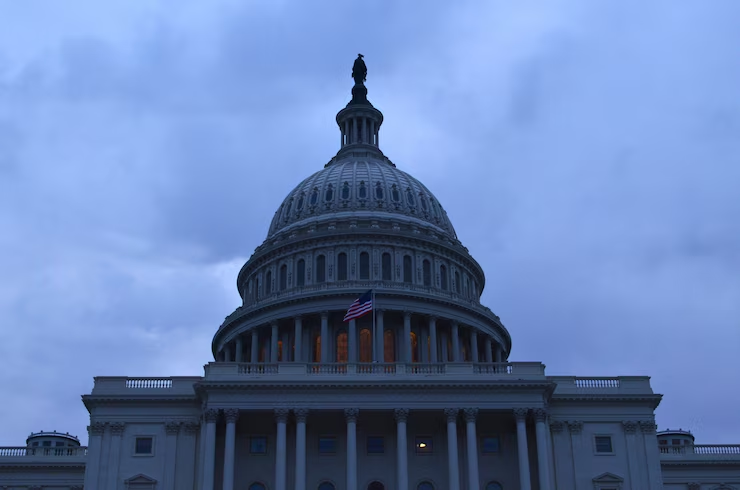
🇺🇸 Current Pulse of America in 2025: Politics, Economy, and What It Means for You
🔥 The Trump-Musk Feud: Power, Politics, and Public Drama One of the most talked-about events this year is the escalating public conflict between former President Donald Trump and billionaire entrepreneur Elon Musk. Why it matters: The clash highlights how politics and business intertwine in America’s public sphere. Musk’s criticisms of Trump’s policies sparked a harsh response, with Trump threatening to cut government contracts linked to Musk’s companies. Implications for you: This feud touches industries like space exploration (SpaceX), electric vehicles (Tesla), and social media, potentially affecting innovation and employment in these sectors. ✈️ New Travel Bans and Diplomatic Tensions The Trump administration’s reinstatement of a travel ban on 12 countries, including Afghanistan and Iran, reflects ongoing concerns over national security and immigration control. Impact: Some countries, like Chad, have responded by limiting travel for U.S. citizens, introducing new hurdles for international business and tourism. For travelers: If you’re planning international trips, be sure to check current visa and travel restrictions to avoid surprises. 📈 Economy and Jobs: Growth Amid Challenges Despite global uncertainties, the U.S. labor market remains surprisingly strong: Job growth: May saw 139,000 new jobs added — more than economists expected. Unemployment steady at 4.2%. Tariffs: New tariffs on steel and aluminum have slowed some business expansions and hiring, causing cautious optimism. What this means for you: The job market is resilient, but be mindful of how trade policies may indirectly affect costs of goods and employment opportunities in certain sectors. 🌍 Diplomatic Hope: Trump and Xi Jinping Talk Trade In a positive turn, the U.S. and China have resumed diplomatic talks, with both presidents agreeing to visits. Why it matters: This could ease trade tensions, reduce tariffs, and open new economic opportunities. For consumers: Potentially lower prices on imported goods and more stable markets. 🌪️ Weather Watch: Southeast Faces Flood Risk Heavy rains and flash flooding threats in parts of North and South Carolina mean residents and businesses need to stay alert. Tips: Have an emergency plan, monitor local weather updates, and prepare for possible disruptions.

🎯 Mastering Personal Finance in the Gig Economy: How Americans Thrive Without a 9-to-5 in 2025
🚀 Introduction: The Rise of the Gig Economy The American workforce is transforming rapidly. In 2025, over 40% of U.S. workers earn some or all of their income from gig jobs or freelance work. From ride-sharing and food delivery to digital freelancing and content creation, millions are embracing flexible work — but with that freedom comes financial challenges. This blog dives into how gig workers can build financial stability, save, and grow wealth despite unpredictable incomes. 1. 💡 Budgeting with Variable Income: The Key to Stability Unlike traditional salaried jobs, gig income fluctuates. Successful gig workers use these budgeting hacks: Calculate your “minimum viable income” to cover essentials each month. Use a “two-pot budget”: one pot for fixed expenses, one for variable/fun spending. Save the “extra” months aggressively to buffer lean periods. Tools like EveryDollar, YNAB, or PocketGuard help track irregular income effectively. 2. 💰 Build an Emergency Fund — Bigger Than Before Experts recommend 3-6 months of expenses for salaried workers, but gig workers should aim for 6-12 months due to income swings. Automate transfers into a high-yield savings account like Ally or Capital One 360. Treat your emergency fund as untouchable — except for true emergencies. 3. 📊 Separate Business & Personal Finances Opening a dedicated bank account for your gig earnings and expenses simplifies tax season and money management. Use tools like QuickBooks Self-Employed or Wave to track income and deductible expenses. Consider an LLC or sole proprietor status for legal and tax benefits. 4. 🧾 Taxes in the Gig World: Be Proactive No employer withholding means you’re responsible for quarterly estimated tax payments. Set aside at least 25-30% of your income for taxes. Use IRS Form 1040-ES or apps like TaxAct or TurboTax Self-Employed. Deduct eligible expenses: home office, mileage, supplies, phone bills. 5. 📈 Saving & Investing: Small Steps, Big Impact Even with variable income, start investing early: Use micro-investing apps like Acorns or Stash that round up purchases and invest the change. Automate investments on good months — even $50/month helps. Prioritize retirement savings with SEP IRAs or Solo 401(k)s, which have higher contribution limits for the self-employed. 6. 🛠️ Leverage Technology to Maximize Earnings Maximize your gig work efficiency with apps and platforms that manage bookings, taxes, and payments: Fiverr, Upwork, DoorDash, Uber Eats for gigs QuickBooks Self-Employed, FreshBooks for finances Stride Health for affordable healthcare options 7. 💡 Mindset: Embrace Flexibility and Discipline Balancing freedom and financial responsibility is tricky but doable. Set goals, stay consistent, and continually learn new skills to increase your earning potential.
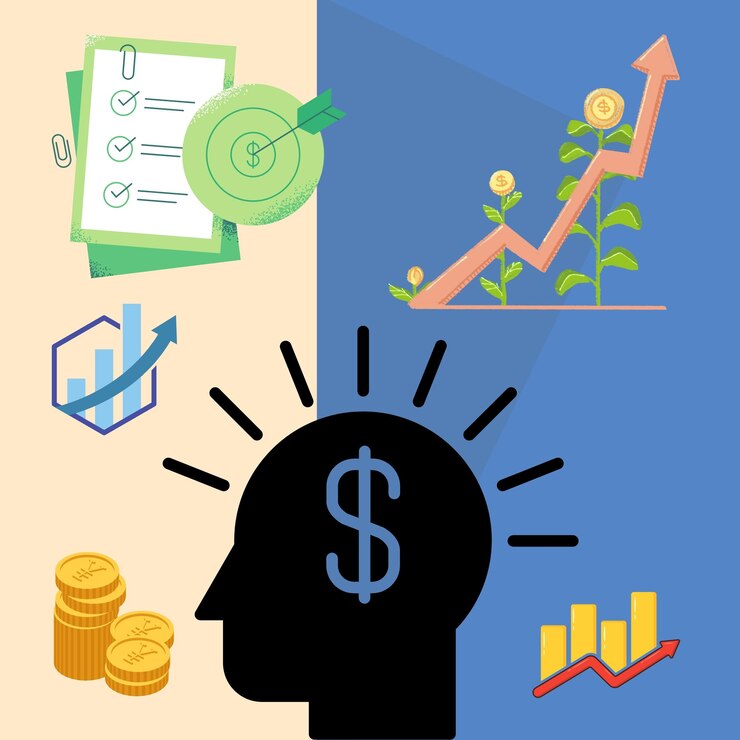
🏡 “Building Generational Wealth in 2025: Smart Money Moves for a Legacy That Lasts”
👨👩👧👦 Why Generational Wealth Matters More Than Ever In a world of rising living costs, AI job shifts, and volatile markets, many Americans are no longer just focused on “getting by.” They’re focused on leaving a legacy — not just money, but mindsets, assets, and financial confidence passed down to their children and grandchildren. In 2025, generational wealth isn’t a billionaire’s game — it’s a strategy available to anyone willing to play smart and long-term. Here’s how modern Americans are building it from the ground up. 1. 🧠 Mindset First: Break the “Spend to Impress” Cycle Generational wealth starts with choosing long-term satisfaction over short-term applause. Modern mindset shifts: Less debt for show (cars, gadgets, designer brands) More investment in knowledge (books, mentors, skills) Teaching kids money language early — budgeting, investing, ownership 💬 Instead of “I deserve this,” ask: “Will this help my kids live better 10 years from now?” 2. 📈 Invest Like a Legacy Builder, Not a Trader 2025 investing is easier and more accessible than ever — and the new generation is tapping in. How Americans are investing smarter: Buying fractional shares of S&P 500 & tech ETFs (like VOO, QQQ) Opening custodial Roth IRAs for their children Using M1 Finance, Fidelity, or Charles Schwab for set-it-and-forget-it portfolios 📌 Rule of thumb: Automate monthly investing (even $100/month compounds over decades). 3. 🏠 Real Estate Reimagined: Buy with Purpose Property remains one of the most powerful tools for long-term wealth. Modern strategies in 2025: House hacking (renting part of your home via Airbnb or roommates) Buying in emerging U.S. cities with low prices and high rent demand Co-owning property with friends/family under legal agreements You don’t need a mansion — you need a cash-flowing, appreciating asset. 4. 🧾 Protect It All With Paperwork Wealth without planning can be lost in one generation. Smart families in 2025 are: Creating wills & living trusts Setting up life insurance to cover kids and debt Naming beneficiaries on all accounts Using platforms like Trust & Will or Fabric 📌 Tip: Review your estate plan every time there’s a life change — marriage, baby, home purchase. 5. 💡 Teach Your Kids the Money Game Early Kids mimic what they see. If you want them to build wealth, let them watch you do it. 2025 resources helping U.S. families: Greenlight and BusyKid: Debit cards for kids with built-in savings goals PiggyVest & GoHenry: Teach saving, giving, spending Games like Cashflow for Kids or Monopoly Deal: Financial thinking + fun The earlier you teach them, the stronger their financial future.
💸 “Surviving & Thriving in 2025: Smart Money Moves for the Uncertain American Economy”
⚠️ Introduction: Uncertainty Is the New Normal 2025 has brought inflation aftershocks, tech layoffs, rising interest rates, and volatile markets. But for many Americans, this isn’t a reason to panic — it’s a wake-up call. Today’s smart financial strategy isn’t about optimism or fear — it’s about adaptability. This blog will walk you through practical, high-value financial steps Americans are taking right now to stay ahead — whether you're a gig worker, a student, a family breadwinner, or planning retirement. 1. 📊 Diversify or Die: Why All-In Bets Are Too Risky in 2025 Putting all your eggs in one basket — one stock, one income stream, one bank — is dangerous today. Here’s how Americans are diversifying smartly: Investing across multiple index funds (e.g., VTI, QQQ, SCHD) Keeping emergency cash in two banks (one digital, one traditional) Having at least two income streams: job + side hustle/freelance/rental Diversification isn’t sexy — but it saves your future when things crash. 2. 📉 The “Invisible Recession” Is Real — Cut Hidden Spending Now Even if the U.S. isn’t in an official recession, many Americans feel broke. Here’s how to uncover and eliminate money leaks: Cancel unused subscriptions with Rocket Money or Trim Switch from UberEats to home meal prep kits (like EveryPlate) Compare utility providers and auto insurance with Gabi or The Zebra 💡 Pro Tip: Review your credit card statement line-by-line for “ghost charges” you forgot existed. 3. 🧾 Tax Moves That Save You Thousands (Legally) Smart Americans are using 2025’s updated IRS policies to lower tax bills: Max out Roth IRA or Solo 401(k) for tax-free growth Claim full home office deductions if working remotely Use HSA (Health Savings Account) for triple-tax-free savings Track mileage/deductions via Everlance or Stride Don’t just earn money — protect it from the IRS (the right way). 4. 💡 The 1-Hour-a-Day Side Hustle Strategy Millions are earning an extra $500–$2,000/month by leveraging 1 focused hour per day. Best low-cost, low-risk hustles in 2025: AI prompt selling (via PromptBase or Etsy) Notion template marketplace Freelance video editing, podcast clipping Selling niche digital products (using Canva + Gumroad) 📌 Tools: ChatGPT, CapCut, Canva, Beehiiv, Teachable You don’t need a team or capital — just skills and consistency. 5. 🏦 Where Smart Americans Are Putting Their Savings Now Your money shouldn’t sit idle in 2025. Here’s where people are stashing it wisely: Type Tool/Platform Avg Return (2025) High-Yield Savings Ally, Capital One 360 4.2–4.5% APY CD Ladders Marcus, Discover Up to 5.25% I-Bonds (Inflation Bonds) TreasuryDirect Varies by inflation 💡 Consider splitting savings: 40% liquid (savings), 30% short-term CDs, 30% I-Bonds 6. 📉 The Smart Way to Handle Credit Card & Loan Debt In 2025, credit card APRs can hit 25%+ — dangerous if unmanaged. Top U.S. strategies: Refinance or transfer balances to 0% APR cards (e.g., Citi, Discover) Use avalanche method: Pay off highest-interest debt first Use Tally or Undebt.it to automate your repayment 🚫 Minimum payments = maximum interest paid. Overpay monthly if possible. 7. 🏠 The Real Estate Reality Check Home ownership is harder than ever. But here’s how savvy Americans are navigating it: “House hacking”: Buy a duplex, live in one, rent the other Co-buying with family/friends under legal agreements Buying in Tier-2 cities (Buffalo, Birmingham, Des Moines) Renting + investing the difference in the stock market Owning isn’t always better. Do the math for your life stage. 🔐 Final Thoughts: Prepare, Don’t Panic 2025 may be financially unpredictable, but you’re not powerless. With the right mindset and consistent actions: ✅ You can beat inflation ✅ You can outsmart debt ✅ You can build wealth from wherever you’re starting The smartest financial move in 2025 is taking control of your future — one small step at a time. 🎁 Download Your Free “2025 Economic Survival Toolkit” Includes: 1-page financial defense plan Budget worksheet for inflation Side hustle tracker Best 2025 savings accounts & apps Monthly reset checklist 📥 Just reply with “SURVIVALTOOLKIT” and I’ll send it to you right away.
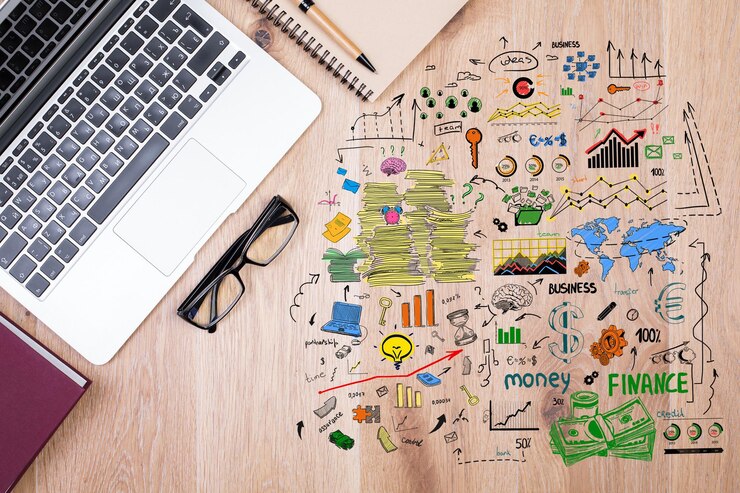
🇺🇸 “Money in Motion: How Americans Are Rethinking Wealth in 2025”
🧭 Introduction: A New Era of Money Requires a New Strategy The financial landscape in the U.S. has shifted dramatically. Between: AI changing the job market Rent and housing prices skyrocketing Student debt relief debates Digital currencies & fintech growth …Americans are realizing: Wealth isn’t just about how much you earn — it’s how fluid, flexible, and future-ready your money is. This blog will explore how Americans in 2025 are adapting — not with get-rich-quick schemes, but with real, sustainable strategies. 1. 📉 Recession-Ready Finances: Building a “Shock-Proof” Budget The smart 2025 American budget isn't rigid — it's responsive. Key changes people are making: Emergency fund = 6 months of essential expenses Creating “sinking funds” for car repair, medical, and travel Using apps like YNAB or Monarch Money to visualize categories Pro tip: Label savings accounts with goals like “Freedom Fund” or “Job Exit Plan” to stay motivated. 2. 🧠 From Employee to Entrepreneur (Even If Just for a Few Hours) Many Americans are picking up a “microbusiness” — something they can build on the side. Top examples in 2025: Selling niche AI prompts and templates Offering voiceover or narration services Creating courses with platforms like Gumroad or Teachable Coaching or consulting in high-demand areas (parenting, wellness, career) A side hustle isn’t just income — it’s insurance against job loss. 3. 💵 Digital Dollar Decisions: Earning, Spending & Saving Online We’re living in a world where: Banks are mostly apps Many freelancers are paid in stablecoins Investment portfolios are managed by AI advisors 2025 tools helping Americans manage digital money: Zelle/PayPal/Venmo for fast transfers Coinbase & Robinhood for crypto & stocks Ally Bank & Marcus by Goldman Sachs for high-yield savings The wallet isn’t leather — it’s on your phone. Get comfortable with it. 4. 📈 New Retirement Mindset: FIRE 2.0 (Flexible Independence) Americans aren’t all trying to retire early — they want freedom now. The 2025 FIRE model: Fewer full-time exits, more semi-retirement at 40-50 Remote work + part-time consulting = time + money Living in lower-cost U.S. cities or even abroad (Mexico, Portugal, Colombia) Retirement isn’t an age — it’s a cash flow formula. 5. 🛍️ Conscious Consumerism: Spending That Aligns With Values People aren’t just asking “Can I afford this?” — they’re asking: “Is this worth my time, energy, and future freedom?” 2025 spending trends: Supporting small/local & ethical businesses Renting instead of owning (cars, furniture, even fashion) Skipping flashy brands in favor of quality or resale value Apps that help: ThredUp, Poshmark – sustainable fashion Too Good To Go – save food + money Rakuten – cashback on essentials 6. 🧾 Student Loans, Still a Reality — But Now Better Managed Though some forgiveness happened, most Americans still deal with student debt. 2025 smart repayment habits: Enroll in SAVE income-driven repayment plans Use Credible or SoFi to refinance if rates improve Track progress with apps like ChangEd (rounds up spare change toward loans) Don’t ignore loans — optimize them. ⚙️ BONUS: Smart Tools Making a Difference in 2025 Purpose Tool Why It’s Popular Budgeting YNAB, Monarch, Copilot Real-time visuals + automation Investing Fidelity, Schwab, Public Low fees + ETFs + education Crypto Coinbase, Strike Easy entry to digital assets Side Hustle Fiverr, Gumroad, Kajabi Turn skills into income Credit Building Chime, Self, Experian Boost No-debt score growth 🔑 Final Thoughts: Wealth Is Not About Luck, It’s About Leverage In 2025, average Americans are: Investing earlier Spending smarter Earning creatively Automating everything they can And the best part? They’re doing it with free tools, small habits, and real intention. You don’t need millions to feel rich — you need a system that works for you, not against you. 🎁 Want the Free “Smart Money Starter Pack – 2025 USA Edition”? What’s inside: Monthly budget template (Excel + Notion) Side hustle idea board Best high-yield savings accounts list Guide to FIRE 2.0 AI tools for money growth 📥 Just reply with "SMARTPACK2025" and I’ll send it your way!
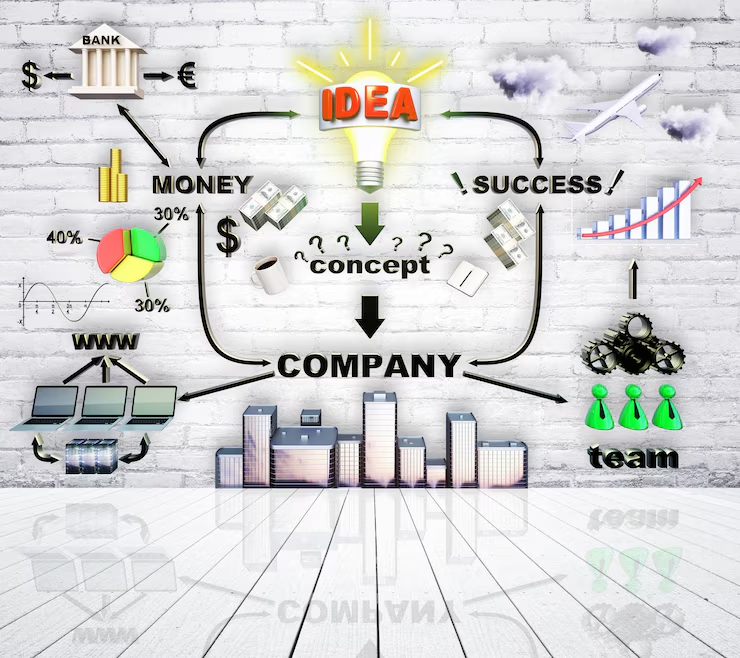
🇺🇸 “The 2025 Money Mindset: How Smart Americans Are Building Wealth With Simple Shifts”
🧠 Introduction: It's Not Just About Earning More — It's About Thinking Differently In 2025, financial freedom isn’t just about six-figure salaries or cutting lattes. It’s about a mindset shift — how you handle money, manage risk, and multiply income. More Americans are: Quitting toxic money cycles Embracing digital side hustles Prioritizing financial resilience over temporary luxuries If you're ready to ditch financial anxiety and start playing offense with your money, here are 6 key mindset shifts transforming lives right now. 1. 🛑 From Spending to Stacking: Prioritize Assets Over Aesthetics The average American spends $300+/month on things they forget in a week. Meanwhile, that same $300 could buy: A share of Apple or Tesla A high-return ETF A course that triples your freelance rates Mindset Shift: Ask, “Will this make me money or lose it?” before every purchase. 2. 📲 From Passive Scrolling to Active Side Hustling Instead of just browsing TikTok or Instagram, many are monetizing it. Trending side hustles in 2025: TikTok voiceovers + editing Selling Canva templates or Notion planners Running small local service gigs via TaskRabbit or Thumbtack Creating AI-generated children’s books and uploading to Amazon KDP You don’t need to go viral. You need to be consistent. 3. 📉 From “I’m Bad With Money” to “I’m Learning as I Go” A common excuse: “I was never taught this.” Reality: You’re one YouTube video or app away from learning anything. Top U.S. platforms teaching personal finance in 2025: Investopedia (for investing basics) Ramsey+ (for debt and savings) The Budget Mom (realistic budgeting for families) Mindset Shift: It’s okay to start small, but not to stay stuck. 4. 🧾 From Ignoring Debt to Owning the Numbers Avoiding credit card or student loan statements won’t make them disappear. Instead: Use the snowball or avalanche method Set small monthly extra payments (even $20 helps!) Use Tally or Undebt.it for automation Owning your debt is the first step to controlling your future. 5. 💡 From “Saving What’s Left” to “Saving First” Most people save whatever’s left after bills and fun. The wealthy reverse it. How to do it: Automate transfers to savings/investments every payday Treat your savings like a non-negotiable bill Use split direct deposits into separate accounts (emergency, travel, long-term) Mindset Shift: Don’t wait to “have enough” — save now, spend second. 6. 🧘 From Hustle Burnout to Balanced Growth 2025 isn’t about 16-hour grind days — it’s about sustainable progress. What balance looks like: Working 1–2 hours/day on a digital product or service Taking weekends off for mental clarity Investing in passive systems (ads, content, automation) Growth that burns you out isn’t wealth — it’s a trap. ✅ Real People, Real Progress (2025 Snapshots) 📍 Austin, TX: College dropout earns $3K/month selling AI-written eBooks 📍 Atlanta, GA: Stay-at-home mom earns $500/week offering Pinterest services 📍 Buffalo, NY: 27-year-old paid off $18K in credit cards in 11 months using snowball + Uber side gig If they can do it, so can you — without needing a finance degree. 🔐 Final Thought: Wealth Starts With Ownership The moment you take ownership of your money — mistakes, wins, all of it — you gain power. In 2025: The tools are free The communities are growing The excuses are outdated You don’t have to be perfect. You just have to start thinking differently. 🎁 Free Resource: “Money Mindset Reset – U.S. 2025 Edition” PDF Inside: 21-day habit tracker Budget planner (printable + Notion) Side hustle starter kit Affirmations for financial confidence Monthly reflection journal 📩 Just type “MONEYRESET” and I’ll send it right away.

🇺🇸 “Money Moves That Matter in 2025: A Guide to Financial Freedom for Working Americans”
👋 Introduction: Why 2025 Demands Smarter Money Decisions With inflation still a concern, housing affordability low, and AI disrupting jobs, many Americans feel stuck. But here's the truth: “You don’t need more money — you need better moves with the money you already have.” In this blog, we’ll break down 6 practical, high-impact strategies that regular people across the U.S. are using right now to take control, save more, and build lasting wealth. 1. 💰 Live Below Your Means — Without Feeling Poor Frugality in 2025 doesn’t mean deprivation. It means conscious spending. What financially smart Americans are doing: Grocery shopping with Flashfood and Ibotta Switching to MVNO carriers like Mint Mobile ($15/mo vs. $70+) Taking advantage of free local events, libraries, and fitness centers Use the 70/20/10 rule: 70% needs/wants, 20% savings, 10% debt payoff or giving. 2. 📈 Invest in Index Funds — Not Hype With stock volatility, NFTs fading, and crypto regulations tightening, many are turning back to basics. S&P 500 index funds (like VOO or FXAIX) still beat most “hot tips” over 10 years. Tools that help: Fidelity (for beginners and advanced) SoFi Invest (easy auto investing) Acorns (round-up investing for beginners) Long-term investing is boring — and that’s exactly why it works. 3. 🏥 Get the Right Health Coverage Before You Need It Medical debt is the #1 cause of bankruptcy in the U.S. Smart actions for 2025: Compare plans on Healthcare.gov before renewing Get HSA-compatible plans (Health Savings Accounts grow tax-free!) Use GoodRx and Mark Cuban Cost Plus for cheaper prescriptions One ER visit can wipe out your savings. Be ready before it hits. 4. 💻 Use AI to Grow Your Income, Not Just Your Budget Side hustles aren’t new — but AI makes them scalable. Ideas people are using right now: Selling AI-generated content (ebooks, templates, digital art) Offering AI consulting to small businesses (via Fiverr/Upwork) Creating niche newsletters with ChatGPT + Beehiiv You don’t need to be a coder. You just need to offer solutions people want. 5. 📉 Kill Debt Like a Boss Interest rates are still high in 2025, which means debt grows fast. Steps smart Americans are taking: Using the debt avalanche method (highest interest first) Transferring credit balances to 0% APR cards (like Citi Simplicity) Negotiating bills with Rocket Money or BillCutterz Paying off a 24% APR card is the same as getting a 24% return on investment. 6. 🧠 Automate Wealth: Set It and Forget It The less you rely on willpower, the more you succeed. What to automate: Bills (with auto-pay) Savings (weekly auto-transfer to high-yield account) Investing (monthly deposit into brokerage or Roth IRA) Best automation apps: Chime (auto-save features) YNAB (You Need A Budget) Empower (tracks your entire money life in one dashboard) “If it’s automatic, it happens. If it’s manual, it’s wishful.” 📊 BONUS: Your 2025 Financial Checklist ✅ Emergency fund (3–6 months in Ally or Capital One 360) ✅ Credit score above 680 ✅ Roth IRA or 401(k) contributions this year ✅ Monthly budget that actually works ✅ One side hustle or passive income stream started 🙌 Final Thoughts: In 2025, Control = Freedom You don’t need a $200K salary or millionaire parents. You need: Clear goals Simple tools New money habits A community (even online) that supports your growth Financial freedom isn’t a myth — it’s a method. Start with one step today. 🎁 Want the Free “Financial Freedom Starter Kit – U.S. 2025 Edition”? Includes: 12-month budget template Best credit cards by goal Investing tracker spreadsheet Side hustle idea list AI tools for money growth Just reply “FREEDOMKIT” and I’ll send it to you directly.
🇺🇸 “Winning With Money in 2025: 8 Habits That Are Making Average Americans Rich”
👋 Introduction: The Rules of Money Have Changed The old American dream was: Work hard → Buy a house → Retire at 65. But in 2025, the new dream is flexibility: Work smart → Save fast → Build wealth → Live on your terms. With rising living costs, AI-driven jobs, and changing markets, managing money requires new habits. Here’s how millions of everyday Americans are winning financially — and how you can too. 1. 📲 Using AI to Simplify Money In 2025, AI isn't just for work — it’s helping people manage money smarter. Top AI-powered tools: Copilot (AI budgeting) Rocket Money (cancel unused subscriptions) Wealthfront (automated investing) Domo (AI-driven dashboards for small businesses) 💡 Let tech do the math so you can focus on your goals. 2. 💵 The $5/Day Investment Rule Don’t wait to invest. Americans are starting small — and staying consistent. $5/day = $150/month = ~$2,000/year In a low-cost index fund like VTI or VOO, this could become $100K+ in 20 years. Platforms to try: Fidelity (no minimums) Charles Schwab Public (social investing) It’s not timing the market. It’s time in the market. 3. 🏠 Rent Smarter, Not Harder Home prices and mortgage rates remain high, so renters are getting strategic: Choosing cities with low cost of living + remote work jobs (like Tulsa, Omaha, or Knoxville) Getting roommates in your 20s and early 30s to boost savings Using apps like Splitwise and Zillow Rental Manager for fairness 💡 Renting isn't failure — it's flexibility until you’re ready to buy right. 4. 💳 Mastering Credit Instead of Avoiding It Good credit = lower rates, better deals, more freedom. 2025 credit hacks: Use secured cards to build or repair Pay in full — never carry balances unless 0% intro Get free credit monitoring from Experian or Credit Karma Pro tip: Ask for a credit limit increase every 6–12 months. 5. 🚀 Turning Skills Into Side Hustles The side hustle isn’t a trend — it’s a lifeline. And it’s never been easier. Popular 2025 options: Selling AI-generated art/digital products on Etsy YouTube Shorts and TikTok content creation Print-on-demand books (via Amazon KDP) ChatGPT prompt engineering & tutoring Time ≠ money. Skill × scale = wealth. 6. 🧾 Setting Up the “Financial Core 4” Every financially smart American has this: Emergency Fund (3–6 months in a high-yield savings account like Ally or SoFi) 401(k) or IRA (especially Roth IRA if under $144K/year) Brokerage Account (for investing post-tax money) Insurance (health, term life, renters/home, disability) These protect, grow, and multiply your money. 7. 🧘♂️ Practicing “Quiet Spending” The quiet wealth trend is rising. Less flex, more control. How it looks: Buying used, driving older cars, avoiding lifestyle inflation Cooking at home 4–5x a week Traveling off-season or using points via Chase Sapphire/Amex Gold “Being rich is having money. Being wealthy is having time.” 8. 📈 Monthly Wealth Check-ins Every wealthy person knows their numbers. What to check: Net worth (track with Empower, formerly Personal Capital) Debt-to-income ratio Monthly budget vs. actual spending Investment performance (year-to-date, not daily!) Knowledge = peace of mind + smarter decisions. 🎁 Bonus: The 2025 U.S. Financial Toolkit (Free PDF) Includes: ✅ Budget planner ✅ “$5/Day Investing” plan ✅ Side hustle guide ✅ Debt payoff calculator ✅ Credit score tracker 📩 Want it? Just reply with “SMART2025” and I’ll send it right away. 💬 Final Words: You’re Closer Than You Think 2025 isn’t harder — it’s just different. If you can: Save even $100/month Learn one digital skill Avoid the debt trap Invest consistently …then you’re already wealthier than most. The tools are in your hands. All that’s left is to start.

🏠 The 2025 U.S. Housing Market: Trends, Challenges, and What Buyers and Renters Should Know
🏡 Home Prices: Cooling or Correction? After a decade of significant appreciation, many markets are experiencing a slowdown in price growth — especially in overheated metro areas. This is partly due to rising mortgage rates, which have tempered buyer enthusiasm and affordability. However, in cities with strong job growth and limited inventory, prices remain relatively firm. 📉 Mortgage Rates and Lending Mortgage interest rates in 2025 have settled above historical lows but remain moderate compared to past decades. Lenders have tightened credit requirements somewhat, reflecting caution amid economic uncertainties. Buyers with strong credit and stable incomes still have access to competitive loans. 🏢 Rental Market: High Demand and Rising Costs The rental market continues to experience strong demand, particularly in urban centers and popular suburbs. Rents have increased faster than incomes in many areas, putting pressure on renters and fueling debates on affordable housing policies. New apartment construction is underway but has yet to fully meet demand. 🌍 Remote Work and Location Shifts The rise of hybrid and remote work models continues to influence housing preferences. Many workers are moving away from expensive city cores toward smaller cities and suburban or rural areas offering better affordability and quality of life.
🌱 “From ₹0 to Wealthy: The Beginner’s Guide to Money in Your 20s (2025 Edition)”
🚀 Introduction: Why Your 20s Are a Goldmine (If You Use Them Right) In your 20s, you're told to “just enjoy life.” But the truth is — these years can shape your entire financial future. You don’t need lakhs to start. You just need clarity, consistency, and a small spark. Let’s break down how to go from ₹0 savings to real wealth — step by step, starting today. 1. 🎯 Set a Simple Financial Goal First Most people fail with money because they have no target. Instead of saying “I want to be rich,” try: “I want ₹50,000 saved in 1 year” “I want to invest ₹1,000/month” “I’ll clear my loan in 6 months” 🎯 Specific goals = stronger motivation 2. 📱 Use Apps to Manage Money Like a Pro Don’t rely on memory. Use free finance tools: Jupiter – great for expense tracking INDmoney – shows net worth, SIPs, credit score Cube Wealth – suggests where to invest next Spend 10 minutes a week reviewing your dashboard. If you don’t track money, you’ll never grow it. 3. 💵 Build a 3-Layer Money Plan 🧱 Layer 1: Survival Build ₹10,000–₹50,000 emergency fund Use FD or liquid mutual funds 💰 Layer 2: Growth Start SIPs in mutual funds Begin with ₹500–₹1,000 monthly 🚀 Layer 3: Freedom Learn long-term investing (Nifty 50, index funds) Buy health insurance early — it’s cheaper and smarter 4. 🧾 Cut Just 3 Expenses You Don’t Value Don’t give up everything — just remove what brings low joy. Common money leaks: Unused subscriptions Daily food deliveries Random online shopping at midnight Keep what brings joy, cut what doesn’t. Simple. 5. 🛠️ Build a Side Skill — Not Just Side Income Your best asset isn’t money. It’s you. Build one high-value skill over 6–12 months: Video editing Copywriting Coding Digital marketing Excel/data tools You’ll earn more, save more, and never stay broke for long. 6. 💡 Don’t Fear Small Starts You don’t need ₹1 lakh to invest. You don’t need a big salary to save. Start with ₹100/week if that’s all you can. It’s not the amount — it’s the habit that makes you rich. Compounding only works when you start. 7. 💳 Avoid Debt Traps Dressed as “Freedom” “Buy now, pay later” sounds cool — but leads to stress. Avoid: Credit card minimum payments BNPL traps (ZestMoney, LazyPay, etc.) EMI for lifestyle items If you can’t pay in full, don’t buy it. 8. 🧠 Learn One Finance Concept Weekly Start with: What is compounding? How do SIPs work? What is inflation? Why does health insurance matter? Use YouTube, finance reels, and books like “The Psychology of Money.” The smarter you get, the richer your decisions become. 🧘♂️ Final Thoughts: You Don't Need to Be Rich — Just Ready Being wealthy isn’t about being flashy. It’s about being free from stress, in control, and prepared for anything. In 2025, you have the tools. You have the tech. And with a little action — you’ll have the results. Start today with ₹100 and a goal. Your future self will thank you. 🛠️ Want a Free Gen-Z Wealth Starter Kit? Includes: “Zero to ₹50K” savings challenge Smart budgeting spreadsheet 10 apps to track & invest Weekly learning tracker 🟢 Reply “GENZKIT” and I’ll send it to you instantly.

💸 “Escape the Paycheck Trap: A 2025 Survival Guide for Financial Freedom”
🚨 Introduction: Why Living Month-to-Month Is a Silent Crisis Millions of young adults in 2025 are earning more than ever… but still feel broke by the 25th of every month. Why? Because living paycheck to paycheck isn’t about low income — it’s about lack of strategy. In this blog, you’ll discover 7 powerful strategies that will help you: Break the paycheck cycle Start saving with ease Build real wealth, even on a tight budget 1. 📊 Know Your “Survival Number” Your survival number is the minimum money you need to cover: Rent Food Transport Essentials 💡 Write it down. If your income is ₹30,000 and survival number is ₹18,000 — that ₹12,000 buffer must be intentionally used, not accidentally spent. 2. 🧾 Track Expenses for 30 Days (You’ll Be Shocked) Use a spreadsheet or app like: Jupiter Money Manager Wallet Log every rupee for one month. You’ll spot patterns like: ₹3,500 on Swiggy ₹900 on subscriptions you forgot about ₹2,000 on impulse shopping Awareness is your first step to escape the trap. 3. 💡 Use the “60-20-20” Budget Rule A better version of 50-30-20 for tighter incomes: 60% Essentials 20% Savings & Debt Repayment 20% Lifestyle + Flex This gives you discipline while still allowing fun money. 4. 🪙 Automate ₹500 SIP — Don’t Wait to Save Big Don’t say “I’ll save when I earn more.” Start now. Invest ₹500–₹1,000 monthly in index funds or gold ETFs Use Groww, Kuvera, or Zerodha Coin Set auto-deductions on salary day Your future wealth doesn’t depend on income — it depends on time + discipline. 5. 🛑 Cut “Low Joy” Spending First Instead of sacrificing what makes you happy, cut expenses that don’t feel worth it. Ask yourself: “Did this ₹400 expense make me happy, healthy, or productive?” If not — eliminate or reduce it. Free up money for bigger goals. 6. 💳 Stop Using Credit Cards Like Free Money Credit cards are tools, not free wallets. Use them only if: You pay the full balance monthly You track every swipe You avoid EMIs on lifestyle Otherwise, they trap you in interest-heavy debt. 7. 🧠 Build a “Money Skill” Each Quarter To truly escape paycheck-to-paycheck life, increase your earning potential. Every 3 months, learn a new skill: Freelancing Content creation Digital marketing Investing basics Resume upgrade / LinkedIn building The more skills you master, the more money finds you. 🔁 Bonus Habit Loop: Your Monthly Money Ritual Week 1: Budget & set saving target Week 2: Review expenses Week 3: Pay debt or invest surplus Week 4: Upskill or side hustle Repeat every month, and you’ll be shocked where you are in a year. 📦 Final Thoughts: Small Shifts = Big Wins Escaping the paycheck trap isn’t about overnight changes. It’s about small, repeatable wins: Save ₹500 this month Say no to one unnecessary EMI Learn one new skill Invest before you spend By the end of this year, you’ll have something most people don’t — control over your money. 🎁 Free Gift: “Escape the Paycheck Trap” Toolkit PDF ✅ Budget planner ✅ Expense tracker template ✅ 30-day savings challenge ✅ Starter SIP plan 📩 Want this free toolkit? Just reply with “FREEDOM2025” and I’ll send it instantly!
📲 “2025 Money Guide: How to Use Your Phone to Build Wealth (Not Waste It)”
🔍 Introduction: Your Smartphone Is Your New Bank We use our phones for everything — ordering food, booking cabs, shopping, watching reels… But did you know your phone can also be your personal finance manager, wealth builder, and budget coach? In 2025, smart money isn’t about working harder. It’s about using the right tools — which are already in your hand. This blog explores 7 powerful ways your smartphone can help you manage, save, grow, and multiply your money. 1. 📊 Track Every Rupee with AI-Powered Budget Apps Apps like Walnut, Cube, INDmoney, and Jupiter do more than just show balances: Categorize your spending Alert you about unusual expenses Offer insights like “You spent ₹2,300 on Zomato this month 😬” Tip: Review your spending every Sunday for 5 mins. Small habit, huge clarity. 2. 🪙 Start Investing in 2 Taps With platforms like: Groww, Zerodha, Paytm Money, INDmoney You can invest in: Mutual funds Stocks Gold Digital bonds Start with as little as ₹100, automate SIPs, and watch compound magic unfold. No paperwork. No excuses. 3. 🧾 Automate Your Bills and Savings Set up auto-payments on: Electricity, rent, subscriptions Credit card minimums Monthly SIPs or RD Use Google Pay or PhonePe autopay features. Saves you time, avoids penalties, and builds consistency. 4. 🔐 Use UPI Smartly (Without Leaking Cash) UPI is powerful — but also a money-leak trap if unchecked. Tips: Set weekly UPI limits (₹1,500 for food, ₹1,000 for cabs) Link spending accounts to a secondary bank account (not your main savings) Use apps like Fi to get cashback and rewards for responsible use 5. 📈 Learn About Finance in 10 Minutes a Day Use your phone to learn, not just scroll. Top Indian finance content creators on YouTube: CA Rachana Ranade Pranjal Kamra Neha Nagar Asset Yogi Also try finance podcasts on Spotify. Just 10 minutes/day = massive financial confidence in 3 months. 6. 💳 Build Smart Credit, Not Dumb Debt Use credit card management apps like: OneCard Slice Cred These help you: Track bills Earn rewards Avoid interest Rule: Pay full due every month. If you can’t, don’t swipe. 7. 💼 Plan Your Big Goals with AI Financial Planners Want to buy a car in 2 years? Or save ₹5 lakhs for a trip? Apps like: Cube Wealth ET Money Goal Planner INDmoney (robo-advisors) Let AI calculate how much you need to save/invest monthly. Zero guesswork = fast results.
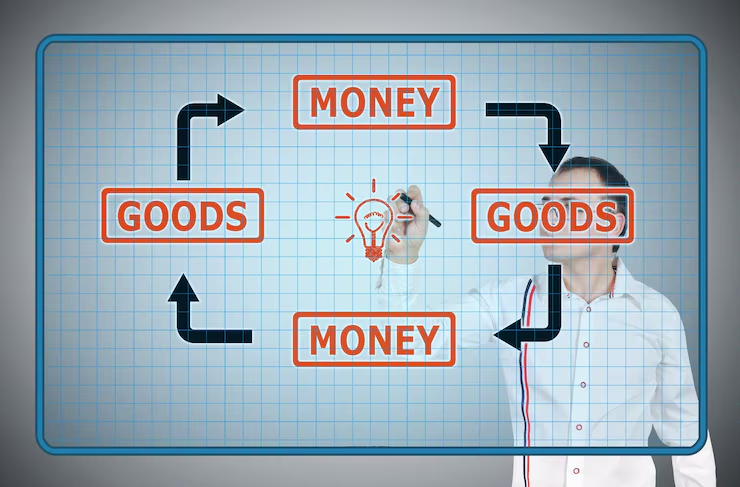
💰 “7 Smart Money Habits for a Stress-Free Financial Life in 2025”
Introduction: Why Money Habits Matter More Than Income In today’s fast-changing world, how much you earn matters less than how you manage what you have. Good money habits create a foundation for: Building savings Avoiding debt traps Planning for big life goals Achieving peace of mind If you want to live stress-free with your finances, start with habits that are easy, consistent, and impactful. 1. Track Every Rupee You Spend If you don’t track money, you lose control. Apps like Walnut, Money View, or ET Money make it simple. Make a habit to review your spending weekly. Identify “money leaks” — small repeated expenses adding up, like subscriptions or daily coffees. 2. Automate Your Savings Don’t rely on willpower alone. Set up auto-debits for savings and investments. Start small — even ₹500 per month in a mutual fund SIP grows exponentially with compounding. Automation keeps you consistent and stress-free. 3. Build an Emergency Fund Before Anything Else Aim for 3–6 months of expenses parked in a liquid savings or fixed deposit. This fund shields you from unexpected shocks like medical emergencies or job loss — so you never have to borrow at high interest. 4. Pay Off High-Interest Debt First Credit cards and personal loans with 24%+ interest rates drain your wealth. Make extra payments aggressively on these debts. Avoid taking new ones unless absolutely necessary. 5. Invest in Tax-Advantaged Instruments Maximize benefits from: ELSS mutual funds (for tax saving + growth) Public Provident Fund (PPF) National Pension Scheme (NPS) This helps reduce taxable income while building wealth. 6. Review and Adjust Your Budget Quarterly Life changes — so should your budget. Every 3 months, revisit your spending and saving goals. Increase SIPs when possible, cut unnecessary expenses, and plan for upcoming big spends. 7. Keep Learning About Money Finance is not static. Follow blogs, podcasts, and books. Understand investing, insurance, and taxes better. Smart decisions come from knowledge — and knowledge builds confidence. Final Thoughts: The Power of Habit Over Hustle Money mastery isn’t about how hard you work. It’s about the habits you build and stick with over time. Start with these 7 habits today — and watch your financial stress melt away, replaced by calm, control, and confidence.

🧠 “First Salary, Now What? Smart Money Moves to Make in Your 20s”
🎉 Introduction: The Thrill (and Trap) of Your First Paycheck That first salary message: “INR 28,500 has been credited to your account.” You feel powerful. Independent. Excited. And then… it’s gone — Swiggy, Amazon, EMI, weekend plans, and a random ₹1,200 cab ride. If this sounds familiar, you’re not alone. But the truth is: 💡 “The first 3 years of earning define your next 30 years of financial freedom.” This blog is a practical, no-nonsense guide to help you handle your income smartly — and avoid the common traps young earners fall into. 💼 1. Create a Split Formula: 50-30-20 Rule (With a Twist) A good starting formula: 50% Essentials: Rent, bills, groceries, transport 30% Lifestyle: Eating out, clothes, Netflix, weekend fun 20% Wealth: Savings + Investments Bonus Twist: Add another 5%–10% from lifestyle into “Future Bucket” — emergency fund, upskilling, or a business idea. 🧾 2. Say Goodbye to “Broke by 20th” with a Budget Use a simple spreadsheet or app (like Walnut or YNAB). Track: Income Fixed expenses Variable spends Random leaks (like ₹40 per day on tea = ₹1,200/month) Pro Tip: Set spending limits per category and use UPI wallets to stick to them. 🛑 3. Avoid the Trap of EMIs on Lifestyle You’ll be tempted by: “Buy now, pay later” phones 12-month EMIs on vacation 0% interest cards for gadgets But these are future income traps. Instead: Use EMIs only for needs (e.g., laptop for work) Set a "cooling period" of 7 days before taking on debt Remember: If you can’t buy it twice, you can’t afford it yet 📈 4. Begin Investing — ₹500 Is Enough Don’t wait till you earn more. Time > amount. Start With: ₹500–₹1,000 SIP in Index Fund (Nifty 50) ₹500/month into Gold ETF or SGB Build ₹5,000–₹10,000 in emergency fund Why? ₹1,000/month for 10 years at 12% = ₹2.3+ lakhs Start today, and your future self will thank you. 🏥 5. Buy Health Insurance While You’re Healthy If your employer gives insurance — great. But buy your own, too. Premium is lower in your 20s No rejections due to medical history Gives you peace of mind when switching jobs or freelancing Must-Have: Health Insurance (₹5–10L cover) Term Insurance (if you support family) 📚 6. Invest in Learning (More Valuable Than Crypto) Your biggest wealth isn’t in the market — it’s your skills. Take one online course per quarter Learn freelancing, design, coding, content, or marketing Upskill with certifications or soft skills (like public speaking or time management) 🎯 Knowledge = better job offers = more money. 👑 7. Build a Second Income Early Don’t rely only on salary. Try: Freelancing (writing, design, coding) Reselling (Amazon, Meesho, affiliate links) Content creation (YouTube, Insta Reels, blog) Digital products (eBooks, Canva templates) Even ₹2,000/month extra = ₹24,000/year. That’s a vacation paid for! 🧘 8. Avoid FOMO Spending & Peer Pressure Your friend just bought a bike. Another went to Goa. Someone else has a new iPhone. But you don’t know: Their bank balance Their credit card debt Their EMI struggle Your goal: Flex with your net worth, not your Insta story. Stay in your lane, and you’ll win the long game. 🔄 Recap: Your First Salary Roadmap Action Goal Split income wisely 50-30-20 rule (or better) Budget monthly Know where every rupee goes Say NO to lifestyle EMIs Save for what you want Start SIPs ₹500/month is enough to begin Get insured Protect your future Upskill quarterly Increase income potential Build side income Reduce dependency on job Ignore FOMO Run your own race 🎁 Bonus: Free “First Salary Finance Kit” (PDF Download) Includes: Budget tracker SIP calculator Emergency fund builder One-year financial goal planner 📩 DM or comment “SALARYKIT” to get your free download. 🙌 Final Words: Earn Smart, Not Just Hard Earning money is easy. Keeping it, growing it, and using it with purpose — that’s real intelligence. The best time to build wealth is not when you’re older. It’s when your expenses are low, habits are forming, and your brain is hungry. Make your first salary the beginning of financial freedom — not just fun.
.avif)
💸 “Money Made Simple: 7 Everyday Finance Habits That Build Wealth Without Stress”
👋 Introduction: Wealth Is Built in Small, Daily Decisions You don’t need a finance degree or a high-paying job to be financially strong. You need good habits — small actions done every day. This blog is for: Students learning to manage pocket money Employees trying to save from salary Business owners who want better cash control Anyone who feels like “money slips away too fast” Let’s look at 7 simple habits that build real wealth over time — with no stress. ✅ 1. Start Your Day by Checking Your Money 🕖 Every morning, spend 2 minutes reviewing: Bank balances UPI/spending from yesterday Any bill due alerts It keeps your brain money-aware, and helps prevent overspending. “What you track, you control.” Apps like Walnut, Money View, or YNAB make this easy. 🧃 2. Use the “Juice Test” Before Spending Ask yourself before every purchase: “Will this give me long-term value or is it just instant juice?” Juice = impulsive buys like snacks, extra clothing, gadgets. Long-term = books, tools, investments, upskilling. This one habit can save you thousands each month. 💡 3. Follow the 24-Hour Rule for Big Buys Thinking of buying something over ₹1,500? Wait 24 hours. If you still want it the next day — buy it. If not — you just saved money. Impulse fades. Smartness stays. 🧾 4. Create a 3-Bucket Wallet Split your money into 3 categories: Spending (UPI/Cash) – groceries, travel Saving (Bank/SIP) – goals, investments Emergency (Separate account) – medical, job loss, etc. This creates mental boundaries — and protects your savings from random use. 📈 5. Automate Small SIPs, Even ₹500 Even if you earn ₹10,000/month, start a ₹500–1,000 SIP. Options: Index mutual fund (Nifty/Sensex) ELSS for tax saving Liquid funds for short-term You don’t need timing. You need consistency. 🎯 6. Set One Financial Goal Per Month Each month, set one clear goal: “Save ₹2,000 more this month” “Clear my Amazon Pay Later” “Read one finance book” “Invest first ₹1,000” It makes money feel achievable, not overwhelming. 🎁 7. Reward Yourself — But Only When You Hit a Goal Saving doesn’t mean living boring. Build a system: “If I save ₹5,000 this month, I’ll buy that T-shirt guilt-free.” Discipline works best when it includes joy. ✍️ Final Thoughts: Money Is a Lifestyle, Not Just a Bank Number If you: Check your money daily Delay impulsive buys Set small goals Automate savings Learn monthly Then you will never be broke again — even in tough times. Because real wealth = good habits + good mindset. 📥 Free Gift: “7-Day Money Habit Challenge” PDF Includes: Printable tracker Daily checklists Budget sheet (Google Sheet link) 📩 Comment “MONEY HABIT” or DM to get it FREE!
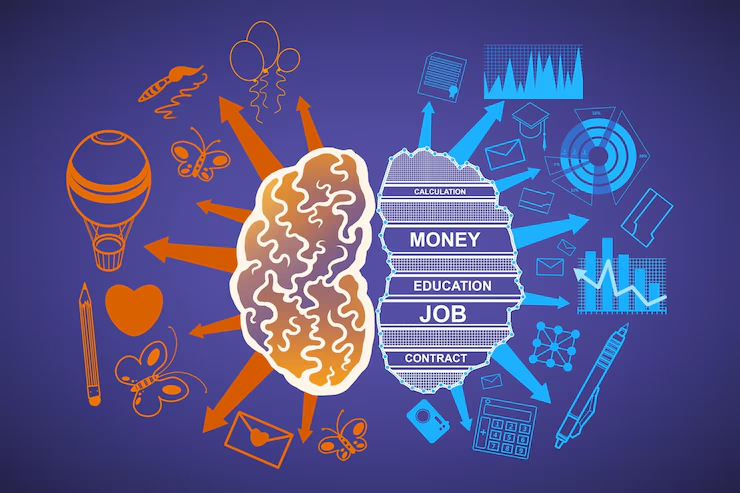
💼 “Mastering Money in 2025: The 10 Rules of Modern Personal Finance
🌟 Introduction In a world of rising costs, digital payments, and endless offers, managing money wisely is no longer optional—it’s a life skill. Whether you're a salaried employee, student, entrepreneur, or freelancer, the rules of money are the same in 2025: ✅ Save early ✅ Spend wisely ✅ Invest consistently ✅ Protect your future This blog shares the 10 modern rules of personal finance that anyone can follow to grow wealth and reduce stress. 🧮 Rule #1: Know Where Your Money Goes You cannot fix what you cannot see. Track every rupee you earn and spend. Use apps like: Walnut Moneyfy Google Sheets Tip: Track for 30 days and divide your expenses into: Needs (rent, bills, groceries) Wants (shopping, movies, restaurants) Leaks (late fees, impulse buys) 📝 Rule #2: Set Financial Goals (Short & Long Term) Money without a goal has no direction. Examples: 📉 Clear ₹50,000 debt in 6 months 💵 Save ₹1,00,000 for a new laptop by Diwali 📈 Build ₹10 lakhs in investments by 2030 Goals help you stay motivated and prevent overspending. 📊 Rule #3: Create a Realistic Budget The best budget is one that works for your lifestyle. Use this simplified formula: 50-30-20 Rule 50% Needs 30% Lifestyle 20% Savings & Investments Don’t forget to review and adjust it monthly. 🚫 Rule #4: Avoid Bad Debt Like the Plague Credit cards and BNPL (Buy Now Pay Later) are convenient traps. Bad Debt Examples: Shopping on EMI Loan apps with high interest Overdrafts or payday loans Solution: Pay credit cards in full monthly Avoid EMI for luxury items Build an emergency fund instead of using loans 🛟 Rule #5: Build an Emergency Fund Imagine a job loss, accident, or medical emergency — what’s your plan? Start small: Save ₹1,000/week. Target 3–6 months of expenses. Use a high-interest savings account or liquid mutual fund. 📈 Rule #6: Start Investing Early (Even ₹500/Month) Investing is not for the rich—it’s for the consistent. Beginner Options: Index Mutual Funds (via SIP) Gold ETFs Fixed Deposits (for safe returns) NPS (National Pension System for retirement) 💡 A ₹1,000 SIP today could become ₹10 lakhs+ in 20 years! 🧠 Rule #7: Learn About Tax & Save More In India: Save ₹1.5L under Section 80C (ELSS, PPF, LIC) Claim ₹25k+ deduction under 80D for medical insurance File returns even if not mandatory—it helps with loans Use tools like ClearTax, Quicko, or your CA. 🏥 Rule #8: Buy Insurance, Not Just Gadgets Insurance is a must in 2025. Phones and laptops are replaceable — your life and health aren’t. Health Insurance: ₹5L–₹10L cover Term Insurance: ₹50L+ for family protection Skip ULIPs and endowment plans (low returns, high costs) 🧑💻 Rule #9: Build a Side Income Relying on one salary is risky. Diversify. Popular Ideas: Freelance on Fiverr/Upwork Resell products (Meesho, Amazon) Create content on Instagram or YouTube Teach online or sell templates/courses 💼 Even ₹5,000/month from a side hustle = ₹60,000/year! 📚 Rule #10: Never Stop Learning About Money Finance is always evolving—stay curious. Top Resources (India-focused): YouTube: CA Rachana Ranade, Asset Yogi, Labour Law Advisor Books: The Psychology of Money, Let’s Talk Money Podcasts: Paisa Vaisa, Millennial Paisa Make money education a habit, not a one-time event. ✅ Final Summary: 10 Rules for 2025 Financial Success Track every rupee Set clear goals Budget with purpose Avoid unnecessary debt Build your emergency fund Start investing early Understand taxes Get proper insurance Build side income Learn money, like a language 📥 Bonus: Free Finance Starter Kit Want a ready-to-use monthly budget sheet + SIP tracker? Comment “MONEY2025” or message us to get your FREE Finance Starter Kit PDF!
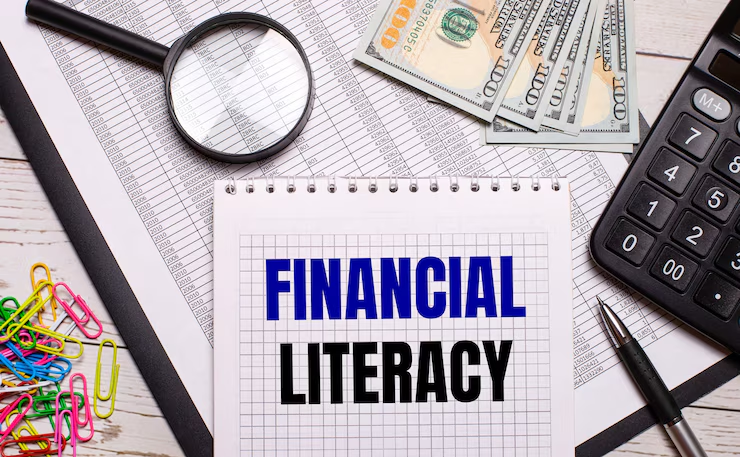
“How I Took Control of My Finances in 12 Months – And How You Can Too”
🌱 Chapter 1: The Breaking Point Last year, I was earning decently, but every month ended in zero. I had credit card debt, no savings, and a constant fear of emergencies. My phone notifications were either “Low Balance” or “Payment Due”. Something had to change. So, I gave myself a mission: turn my finances around in 12 months. Here’s exactly what I did — and what you can do too. 🔍 Chapter 2: The Audit – Face Your Numbers I began by opening my bank apps, credit card statements, UPI history, and tallying every rupee. It was scary. What I Found: ₹3,000/month on Swiggy and Zomato 4+ streaming subscriptions I never used Impulse Amazon purchases, sometimes weekly EMI for a phone I didn’t even like 💡 Lesson: Awareness is power. 📋 Chapter 3: I Built a Budget I Could Stick To Forget spreadsheets with 20 categories. I simplified it: My 4-Box Budget: Needs (50%) – Rent, groceries, phone bill Wants (20%) – Eating out, Netflix, fun Goals (20%) – Debt, investments Buffer (10%) – Unexpected things I used a free app called Money Manager and updated it daily. It changed everything. 💥 Chapter 4: I Killed My Credit Card Debt How? I made a list of all my debts from highest to lowest interest. Paid minimums on all, but attacked the highest-interest one first. Sold old gadgets and freelanced on weekends to add extra income. Within 4 months, I was credit-card-debt free. 💡 Tip: Avoid “Minimum Payment Trap” — it’s designed to keep you in debt. 💼 Chapter 5: I Created Emergency Backup Before I invested, I needed safety. I opened a high-yield savings account and saved ₹50,000 as an emergency fund. Every week, I added ₹1,000–2,000 until it was done. Now, I sleep better. No fear of medical bills or job loss. 📈 Chapter 6: I Started Investing – Even with Just ₹500 Many friends said “investment is risky” — but not investing is riskier. I: Opened a Zerodha account Started a ₹1,000/month SIP in an index fund Learned from YouTube creators like Pranjal Kamra and CA Rachana After 12 months: My investment grew to ₹15,000+, and I gained confidence. 🧠 Chapter 7: I Focused on Learning Every Sunday, I read or watched one finance video or blog. Best Resources: Book: Let’s Talk Money by Monika Halan Channel: Asset Yogi Podcast: The Money School I learned more about: Tax-saving strategies How compound interest works Why insurance matters (and what kind to get) 💻 Chapter 8: I Built a Side Income I started small: Writing short blogs for ₹500/post Selling templates on Gumroad Referring friends to investment platforms Now, my side hustle brings in ₹5,000–₹10,000/month. It funds my travel and investments. 📆 Chapter 9: I Planned for the Next 10 Years With better control, I created a vision plan: 💰 Buy a 2BHK flat by 2030 📚 Fund my sister’s education 🧳 Take one international trip every 2 years 👴 Retire by 50 with passive income Money isn’t just numbers — it’s about purpose. 🎯 Final Chapter: The 12-Month Transformation From: ❌ No savings ❌ Debt stress ❌ Zero investments ❌ Monthly anxiety To: ✅ ₹65,000+ saved ✅ Credit cards cleared ✅ Investing consistently ✅ Peace of mind If I can do it, anyone can.

💸 “2025 Financial Reset: How to Build Wealth, Cut Debt & Gain Control Over Your Money”
Step 1: Fix the Leaks (Track Your Spending) You can’t improve what you don’t measure. Action Plan: For 30 days, write down every rupee you spend Use apps like Walnut, Money View, or Spendee Categorize your spending: Essentials, Wants, Wastage Insight: Most people are shocked when they realize how much they spend on small things like food delivery, online shopping, or subscriptions they don’t use. 🗓️ Step 2: Create a “Real-Life Budget” A budget isn’t about restriction—it’s about freedom. The 60/20/20 Budget Rule (2025 Version): 60% Needs (rent, groceries, bills) 20% Goals (investments, debt repayment, savings) 20% Lifestyle (travel, shopping, eating out) 💡 Bonus Tip: Open separate bank accounts for each category to avoid overspending. 💣 Step 3: Destroy Bad Debt Debt is the enemy of wealth. Good vs Bad Debt: ✅ Good: Education loans, business investment, home loan (if affordable) ❌ Bad: Credit cards, Buy-Now-Pay-Later, payday loans Game Plan: Use the Avalanche Method (pay off high-interest first) Negotiate with banks for lower interest or EMI plans Avoid minimum payments—they trap you in debt 🔐 Step 4: Build a 3-Layer Financial Safety Net Think of money like building a house—it needs a strong foundation. The 3 Layers: Emergency Fund (₹50,000 to ₹1,50,000 minimum) Health Insurance (₹5L – ₹10L cover) Term Life Insurance (for family security) Don’t skip this—even one emergency can wipe out years of savings. 📈 Step 5: Start Investing (Even Small Amounts) You don’t need to be rich to invest. You need to start. Where to Begin: SIPs (Systematic Investment Plans) from ₹500/month Use platforms like Groww, Zerodha, or Paytm Money Choose index funds or balanced mutual funds 💡 Don’t time the market. Spend time in the market. 🧠 Step 6: Learn While You Earn The richest people never stop learning. Best Books for Beginners: The Psychology of Money – Morgan Housel Rich Dad Poor Dad – Robert Kiyosaki Let’s Talk Money – Monika Halan (India-specific) 🎧 Prefer audio? Try Spotify or YouTube finance channels like CA Rachana Ranade, Asset Yogi, or Pranjal Kamra. 🎯 Step 7: Set a “Money Vision” for 2025 Goals make your money meaningful. Sample Goals: Save ₹1,00,000 by December Start a ₹5,000/month SIP for 3 years Clear ₹50,000 in credit card debt Build ₹10L in total net worth Write them down. Track monthly. Adjust if needed. 🧾 Step 8: Save on Taxes (Legally) Taxes are one of your biggest annual expenses—reduce them smartly. 2025 Tools: Section 80C: Save up to ₹1.5L through ELSS, PPF, EPF 80D: Deduct health insurance premiums NPS: Extra ₹50,000 deduction under Section 80CCD 🧠 Talk to a CA or use ClearTax/Quicko for optimized filing. 💼 Step 9: Start a Side Hustle Relying on one income stream is risky in 2025. Ideas You Can Try: Freelance writing or design Teaching on YouTube or Skillshare Affiliate marketing Reselling products on Meesho or Amazon Use extra income to boost your savings or kill debt faster. ❤️ Step 10: Balance Money with Life Money is a tool—not the goal itself. Enjoy small luxuries guilt-free (if it fits your budget) Talk openly with your partner/family about finances Avoid comparing your finances to social media illusions Wealth is peace of mind, not just digits in your account. ✅ Recap Checklist for Your 2025 Reset: 🔲 Track all spending for 30 days 🔲 Set up a realistic budget 🔲 Create your emergency fund 🔲 Get insurance coverage 🔲 Start your first SIP 🔲 Eliminate credit card or BNPL debt 🔲 Learn from 1 new finance source each month 🔲 Write your top 3 money goals for 2025 🔲 Explore side income options 🔲 File taxes with full deductions

Automate Your Finances
8. Automate Your Finances Automation reduces decision fatigue and builds consistency. What to Automate: Savings: Set a fixed amount to auto-transfer to a savings account each month Investments: SIPs (Systematic Investment Plans) for mutual funds or ETFs Bill Payments: Rent, EMIs, subscriptions By automating, you make saving and investing a habit instead of a choice you have to make repeatedly. 💼 9. Side Hustles: Boost Your Income Sometimes saving isn’t enough—you need to earn more. Popular Side Hustles: Freelancing (writing, design, coding) Selling digital products (ebooks, courses) Affiliate marketing Starting a dropshipping or print-on-demand store Extra income can be directed toward debt repayment, emergency funds, or investments. 🧮 10. Understand Net Worth & Cash Flow What is Net Worth? Net Worth = Total Assets – Total Liabilities Track it yearly to understand your financial growth. What is Cash Flow? Cash Flow = Income – Expenses Positive cash flow means you're spending less than you earn. Apps like Money Manager, Walnut, or Excel help you track these metrics effectively. 🧾 11. Smart Spending Strategies Don’t just focus on saving—focus on value-based spending. Ask Before You Buy: “Do I need this?” “Will this bring long-term value?” “Is there a cheaper alternative?” Use These Techniques: 30-day rule: Wait 30 days before making non-essential purchases Cash-only challenge: Spend only cash for a week to build spending awareness No-spend days: Designate a few days per month with zero discretionary spending 🪙 12. Retirement Planning It’s never too early to plan for retirement—even if you're in your 20s. Retirement Accounts (India): EPF (Employee Provident Fund) PPF (Public Provident Fund) NPS (National Pension System) Retirement Accounts (US): 401(k) Roth IRA / Traditional IRA Compounding interest works best over time. Start early, contribute consistently. 🌐 13. Digital Safety and Fraud Protection In a cashless world, cyber-financial security is crucial. Tips: Use strong, unique passwords for banking apps Enable two-factor authentication Never share OTPs or account details Monitor your credit report annually Tools like Credit Karma (US) or CIBIL (India) help monitor credit health and detect fraud. 🎁 14. Smart Gifting & Donations Even giving can be part of a healthy financial lifestyle. Gift Budgeting Tips: Use “Secret Santa” for large families Set a spending cap for birthdays/festivals Consider homemade or experience-based gifts Donations: Donate to NGOs, disaster relief, education funds Keep a record for tax deductions (80G in India) 🧘 15. Money & Mental Health Financial stress can affect sleep, relationships, and productivity. How to Reduce Money Anxiety: Create a monthly review ritual to track progress Avoid toxic comparison (especially on social media) Speak with a financial advisor or counselor if needed Remember: Money is a tool, not a measure of your worth. 📆 16. Monthly Checklist to Stay Financially Fit Here’s a monthly habit checklist: ✔ Review your budget ✔ Track all expenses ✔ Check your credit card statement ✔ Monitor your investment portfolio ✔ Transfer to emergency/savings fund ✔ Plan for upcoming bills or events ✔ Learn one new financial tip 🧭 Final Words: Financial Freedom Is a Journey You don’t need to be rich to build wealth—you need to be intentional. This blog isn’t just a list of steps; it’s a mindset shift. Take control. Be consistent. Learn continuously. The future version of you will thank you.

🔐🇺🇸 Guarding the Digital Frontier: The Surge of Cybersecurity Laws in America, 2025
⚖️ Key Cybersecurity Legislation in 2025 🔹 The National Cyber Defense Act Passed earlier this year, it: Establishes a federal Cyber Defense Corps to support state and local governments Mandates minimum security standards for critical infrastructure operators Increases funding for cyber threat intelligence sharing 🔹 Consumer Data Protection Act (CDPA) Updates Strengthens rules on data breaches: Requires companies to notify consumers within 24 hours of a breach Imposes tougher penalties for negligent data security practices Expands consumer rights to control personal information 🧩 The Federal vs. State Dynamic Cybersecurity law is a battleground of federal authority vs. state autonomy: Some states, like California and New York, have enacted stricter data privacy laws than the federal government. The federal government aims to create a baseline standard to reduce patchwork regulations. Businesses often face compliance challenges navigating conflicting laws. 🤖 The Role of Private Sector and Public-Private Partnerships Recognizing that much of America’s digital infrastructure is privately owned, Congress is promoting partnerships: Tech companies must share threat intelligence with government agencies. Incentives for companies to improve security practices. Joint cybersecurity exercises between the Department of Homeland Security and industry leaders. 🔮 What Lies Ahead? Cybersecurity is expected to remain a top legislative priority through 2026, with potential bills focusing on: AI-powered threat detection mandates Enhanced protections for election infrastructure Cyber workforce development and training programs 📊 Public Concern and Awareness Polls show that 80% of Americans worry about cyber threats affecting their personal data or safety, yet many feel unprepared to defend themselves online.

💰 Mastering Your Money: A Complete Guide to Personal Finance
Introduction: Why Personal Finance Matters In today’s world, managing money is more than just paying bills—it's about building security, reaching goals, and gaining freedom. Whether you're saving for a dream vacation, buying a house, or simply trying to live debt-free, good financial habits are essential. This blog will guide you through everything from budgeting basics to long-term wealth building, even if you’re just starting out. 1. Budgeting: The Foundation of Your Finances “A budget is telling your money where to go instead of wondering where it went.” – Dave Ramsey Creating a realistic monthly budget is the first step toward financial control. How to Start: List all income sources (salary, side gigs, investments) Track monthly expenses (rent, food, utilities, entertainment) Use the 50/30/20 rule: 50% needs 30% wants 20% savings/debt repayment Tools You Can Use: Mobile apps like Mint, YNAB, or PocketGuard Google Sheets or Excel templates 💳 2. Managing Debt Wisely Not all debt is bad, but mismanagement is dangerous. Types of Debt: Good Debt: Student loans, mortgages (if well managed) Bad Debt: High-interest credit cards, payday loans Strategies: Pay more than the minimum due Consider debt snowball or avalanche methods Refinance or consolidate if interest rates are high 🏦 3. Building an Emergency Fund An emergency fund is your financial safety net. Goal: Save at least 3–6 months of living expenses. Where to keep it: In a high-yield savings account—accessible, but not too tempting to touch. 📈 4. Start Investing Early Investing is how you turn savings into wealth. Investment Options: Mutual Funds & ETFs: Great for beginners Stock Market: High risk, high reward Index Funds: Low-cost, diversified Real Estate: Long-term gains Beginner Tip: Use platforms like Zerodha, Groww, or Upstox (India) or Robinhood, Fidelity (US). 🎯 5. Set SMART Financial Goals SMART = Specific, Measurable, Achievable, Relevant, Time-bound Example: "Save ₹5,00,000 for a down payment by December 2026" (Instead of just saying: "I want to buy a house.") 💡 6. Learn About Taxes and Insurance Understanding taxes helps you keep more of your income, and insurance helps you protect it. Must-Know Taxes: Income Tax Slabs Tax-saving investments: ELSS, PPF, NPS (India) Insurance You Need: Term life insurance Health insurance Optional: Vehicle, property, business coverage 🧠 7. Improve Your Financial Literacy The more you learn, the more you earn. Free Learning Resources: YouTube Channels: CA Rachana Ranade, Pranjal Kamra, Graham Stephan Books: Rich Dad Poor Dad, The Psychology of Money, Your Money or Your Life 🚀 Final Thoughts Managing your personal finances may seem overwhelming, but it’s a journey of small consistent steps. From budgeting and debt to investments and long-term planning, financial freedom is within your reach. Remember: The best time to start was yesterday. The next best time is now.

🔒📱 Watching the Watchers: The U.S. Debate Over Digital Privacy and Surveillance in 2025
🧠 Introduction: Privacy in the Post-Privacy Era In the digital age, privacy is no longer a right quietly protected in the background—it’s a battlefront. From facial recognition on city streets to data scraped by AI tools and shared across international servers, 2025 marks a critical year in the fight for civil liberties in cyberspace. The U.S. finds itself at a crossroads: how to preserve national security without sacrificing the very freedoms it aims to protect. 🔍 The Current State of Surveillance in the U.S. The surveillance infrastructure in the United States has evolved dramatically post-9/11. What began as tools for counterterrorism have now expanded into commercial, local, and personal realms. Key Players: NSA & DHS: Maintain cyber monitoring protocols on foreign and domestic networks. Local Police Departments: Increasingly use real-time facial recognition and license plate readers. Private Tech Companies: Collect massive volumes of behavioral, location, and biometric data, often sharing with third parties, including law enforcement. In 2025, over 64% of U.S. cities are estimated to use some form of AI-powered surveillance. ⚖️ Legal Framework: A Patchwork of Power Unlike the European Union’s GDPR, the U.S. still lacks a unified national data privacy law. What exists is a fragmented system: California Consumer Privacy Act (CCPA) offers the strongest protections. FISA (Foreign Intelligence Surveillance Act) governs most national security wiretapping. Patriot Act remnants still enable broad digital searches with minimal court oversight. Civil liberties groups are urging Congress to pass a Digital Privacy Bill of Rights, but efforts have been stalled due to heavy tech lobbying and partisan gridlock. 📱 The Rise of Predictive Policing and AI Oversight Police departments and federal agencies are now using predictive AI algorithms to forecast crime “hotspots” and even identify individuals at high risk of criminal behavior. Concerns: Bias: Studies show these systems disproportionately flag Black and Latino communities. Accuracy: Algorithms trained on flawed data perpetuate systemic injustice. Transparency: Many agencies refuse to disclose how their systems work, citing "proprietary technology." Critics argue that without oversight, this technology amounts to pre-crime profiling—a constitutional red flag. 🕵️♂️ The Private Sector: More Powerful Than the Government? Big Tech companies like Google, Meta, and Amazon now have more intimate knowledge of citizens than any government agency. They track: Browsing history GPS movement Purchase behavior Microphone and camera usage (sometimes passively) The average American is estimated to have over 1,200 data points tracked and stored in corporate clouds. The sale of this data to advertisers, political campaigns, and government contractors has created a $400+ billion surveillance economy—with little public understanding or consent. 🇺🇸 Government Reform Efforts (or Lack Thereof) In 2025, several key bills are in limbo: American Data Privacy Protection Act (ADPPA) – stalled in Senate. Facial Recognition Ban for Federal Agencies – vetoed in committee. Algorithmic Accountability Act – opposed by corporate lobbyists. Meanwhile, whistleblowers and investigative journalists continue to expose backdoor deals and hidden surveillance programs—from airport tracking to “smart city” monitoring initiatives. 🧩 Civil Liberties at Risk? What does this mean for your average citizen? Freedom of Speech: Chilled by social media monitoring and keyword flags. Freedom of Assembly: Protesters tracked via cell tower triangulation. Right to Due Process: AI errors can lead to false arrests without human checks. If left unchecked, civil rights lawyers warn, the U.S. could slide into a digital authoritarianism where freedom becomes conditional and privacy is merely an illusion. 🔮 What’s Next? Expect state-level privacy laws to expand while federal reform stalls. A major Supreme Court case on biometric data collection is scheduled for fall 2025. Grassroots movements are gaining momentum, especially among Gen Z, to "take back the internet" through decentralized, encrypted platforms. 🏁 Conclusion: Liberty or Control? The core question of 2025 isn’t whether America can surveil its citizens—it’s should it? In a time when everything is traceable, and convenience often trumps caution, we must ask: What are we giving up in exchange for safety, speed, and personalization? If democracy is to survive in the digital century, then privacy must be reclaimed as a right—not a privilege. Let me know if you'd like this as a podcast script, newsletter version, or formatted infographic for a political education campaign.
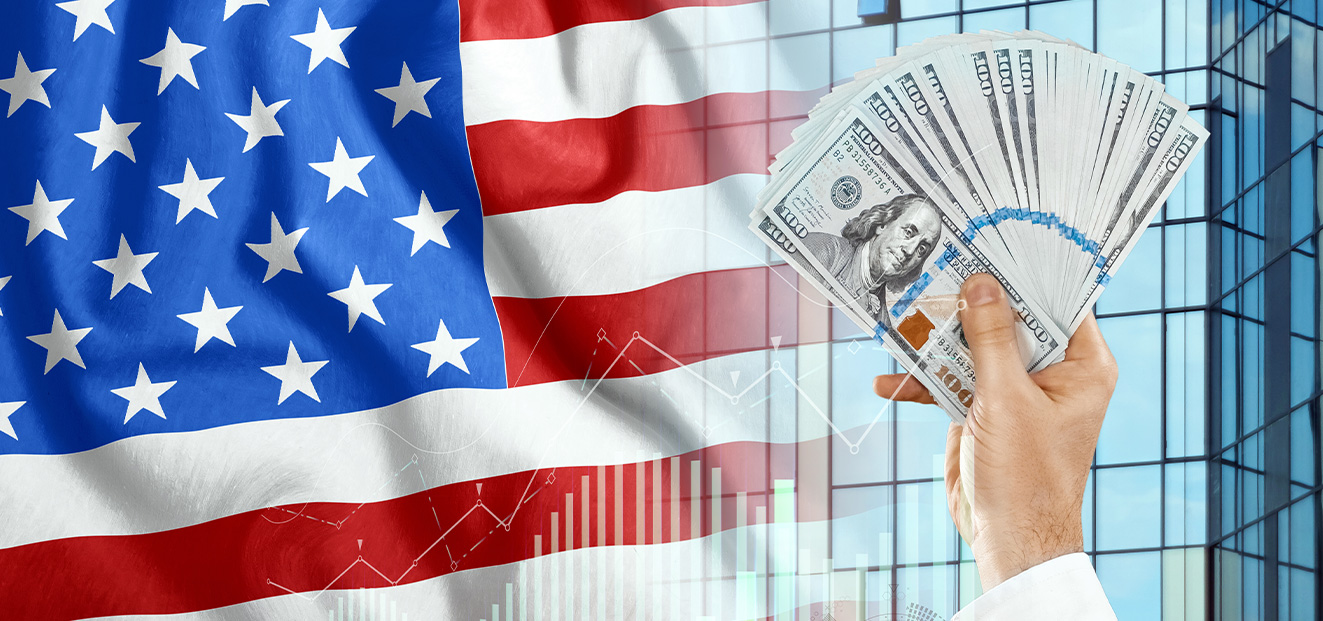
🌎🚧 Borders and Beyond: America’s Struggle with Immigration in 2025
🧭 Introduction: The Great Divide Immigration has long been a defining issue in American politics—but in 2025, it has reached a boiling point. With record levels of migrants at the southern border, growing tensions between federal and state governments, and a polarized national discourse, immigration policy is not just a matter of law and order—it’s a question of identity, economy, and humanity. 📈 The Numbers Behind the Crisis Over 3.1 million migrant encounters were reported at the U.S.-Mexico border in fiscal year 2024. Asylum backlogs have grown to over 1.6 million cases, leading to years-long waits. Border states like Texas, Arizona, and California have declared states of emergency, calling for federal aid and enforcement. This surge has created a humanitarian, political, and logistical crisis that the U.S. has yet to fully address. 🇺🇸 Biden Administration’s Immigration Policy in 2025 President Biden’s team has focused on a “balanced approach”, aiming to enforce border laws while providing humanitarian relief: ✔️ Key Policies: Reinstatement of Deferred Action for Childhood Arrivals (DACA) protections Creation of humanitarian processing centers in Central America Increased use of surveillance technology instead of physical walls Limited expansion of legal immigration pathways for skilled workers and refugees However, critics argue that this approach has not gone far enough—either to stop illegal crossings or to protect migrant rights. ⚖️ State vs. Federal Showdown Several Republican-led states, especially Texas, have taken immigration enforcement into their own hands: Texas’ “Operation Lone Star” deployed thousands of National Guard troops to the border. Florida and Arizona passed state-level immigration laws aimed at discouraging undocumented labor. Lawsuits are mounting over “anti-sanctuary” city policies and state-run deportation efforts. This federal-state clash has sparked constitutional debates over the limits of state authority in immigration enforcement. 👨👩👧👦 Human Impact: The Stories Behind the Statistics Beyond the headlines are millions of families: Asylum-seeking parents fleeing cartel violence in Honduras. Children separated at the border facing psychological trauma. U.S.-born teens navigating life with undocumented parents in constant fear of deportation. Nonprofits and advocacy groups have stepped in where the system has failed, offering legal aid, shelter, and support—but resources are stretched thin. 💰 The Economic Argument Immigration isn't just a border issue—it’s an economic one. Economists argue that immigrant labor is essential in sectors like agriculture, construction, and healthcare. However, working-class Americans often feel the pinch from wage competition and job security concerns. Employers are pushing for expanded work visas, while unions are divided over how much immigration should be allowed. 🧠 Public Opinion in 2025 Polls show an American public deeply divided: 42% believe immigration should be reduced. 35% support current levels, while 23% say it should be increased. A majority (62%) support a path to citizenship for undocumented immigrants already in the U.S.—but only with stronger border enforcement. The topic is highly polarized by party affiliation, region, and age.

⚖️🇺🇸 The Supreme Power: How the U.S. Supreme Court Is Reshaping America in 2025
🏛️ A Court Transformed Since 2020, the balance of the Supreme Court has shifted significantly. With 6 conservative justices and 3 liberals, the Court’s decisions are now consistently aligned with originalist interpretations of the Constitution—a philosophy that often favors limited federal power and traditional social norms. 🧨 Landmark Cases in 2025 1. United States v. Digital Liberty Coalition A case involving federal regulation of AI and digital surveillance. The Court ruled 5–4 against government mandates, citing First and Fourth Amendment concerns—shaping how far Washington can go in monitoring AI tools and digital platforms. 2. Jackson v. Environmental Protection Agency (EPA) The Court restricted the EPA's authority to regulate carbon emissions without clear congressional authorization, dealing a blow to Biden’s climate agenda and shifting power back to Congress. 3. Dobson v. State of Colorado A post-Dobbs abortion case, in which the Court upheld a state law banning abortion at six weeks with no exceptions for rape or incest. The ruling reinforced states’ autonomy over reproductive laws, sparking national protests. 4. Khan v. Department of Homeland Security The Court ruled in favor of narrowing asylum eligibility, strengthening the executive branch’s immigration powers amid rising border tensions. 🗳️ Public Reaction: Deepening Divides Recent polls show that public trust in the Supreme Court has dropped to 39%, with stark differences across party lines: 71% of Republicans approve of recent rulings 74% of Democrats believe the Court is out of touch with modern America This growing distrust raises fundamental questions about judicial legitimacy and balance of power. 📜 Originalism vs. Living Constitution The divide isn’t just political—it’s philosophical: Originalists argue that the Constitution must be interpreted based on its original meaning. Living constitutionalists believe the document should evolve with societal changes. This tension defines many 5–4 rulings and influences lower courts across the country. 🧩 Checks and Imbalances? With Congress gridlocked and presidential power often challenged, the Court fills a vacuum—but should it? Reform Proposals Include: Term limits for justices (currently lifetime) Mandatory retirement ages Court expansion (“court packing”) A formal ethics code (currently voluntary) But none have passed, despite growing public pressure. 🔮 What Lies Ahead? The Court is set to hear a major 2025 voting rights case that could reshape redistricting nationwide. Challenges to student debt relief and digital censorship laws are on the horizon. Speculation is rising over potential retirements and the next judicial appointment battle. 🏁 Conclusion: A Nation Shaped by Nine The Supreme Court, though unelected and often cloaked in formality, now plays a direct role in defining the rights, freedoms, and limits of American life. Whether seen as a stabilizing force or a political battleground, it is undeniably the most powerful institution most Americans never voted for. As the nation wrestles with profound legal, moral, and societal questions, the future of democracy may well rest in the hands of nine justices in black robes.

🧠🇺🇸 Artificial Intelligence and National Security: America’s Emerging Power Struggle
🇺🇸 The U.S. Government's AI Strategy The Biden administration and the newly formed National AI Security Task Force have issued the following priorities: Defensive AI: Enhance cybersecurity using autonomous AI threat detection. Protect national infrastructure and military networks from adversarial AI attacks. Offensive AI Capabilities: Expand AI use in drone swarms, surveillance, and battlefield decision-making. Implement ethical guidelines for autonomous weapons, while maintaining technological superiority. Regulatory Safeguards: Propose federal laws for AI transparency, accountability, and ethical usage. Create civilian oversight boards to evaluate bias, civil liberties risks, and data misuse. 🧨 Threat Landscape: Where AI Meets Danger 1. Cyber Warfare AI-powered malware can learn and adapt in real time, evading traditional defenses. U.S. agencies like the NSA and CISA now rely on AI to counter these threats — but adversaries do too. 2. Deepfakes and Disinformation Synthetic media is weaponized for election interference and social disruption. Deepfake detection tools are advancing, but so are generative AI engines, creating a constant game of catch-up. 3. Autonomous Weapons Debates are intensifying around U.S. development of AI-powered weapons. The Pentagon insists on “human-in-the-loop” protocols, but critics warn of an arms race that could spiral out of control. 4. Surveillance and Civil Liberties Federal agencies are leveraging AI for border security, predictive policing, and public safety. But civil rights groups warn of racial bias, mass surveillance, and erosion of the Fourth Amendment. 🌍 Global AI Race: The U.S. vs China The geopolitical AI rivalry between the U.S. and China defines much of American policy in 2025. While the U.S. champions open innovation and democratic values, China advances centralized, state-controlled AI systems. China is exporting surveillance AI to authoritarian regimes. The U.S. is investing billions in AI R&D, but also tightening export controls and monitoring foreign investments in American tech companies. 🧠 Ethics vs Efficiency: A Dilemma for Democracy Can the U.S. balance innovation, ethics, and security? Tech companies call for clear federal guidelines to avoid legal ambiguity. Military leaders prioritize speed and supremacy but face pushback on ethical lines. Lawmakers struggle to keep up with the pace of AI development, often relying on private-sector experts. 🔮 What’s Next? The coming year will likely see: A comprehensive AI Regulation Act in Congress. Increased investment in quantum computing + AI fusion. Civil society coalitions pushing for AI Bill of Rights protections. Greater collaboration between NATO allies on AI threat detection and counterintelligence. 🏁 Conclusion: The Intelligence War of the 21st Century AI has become more than a technology—it is now a core pillar of national power. The question America must answer in 2025 is not whether to lead, but how to lead responsibly in a world where algorithms can influence elections, destroy economies, or trigger global conflict. Only with democratic oversight, ethical governance, and strategic foresight can the U.S. navigate the delicate line between strength and safety. Would you like a version of this blog tailored for a tech policy newsletter, youth education, or social media campaign? I can also turn it into a script or infographic—just let me know!
.png)
⚠️🇺🇸 Erosion of Democracy: The Rise of Authoritarian Trends in the United States
Introduction: A Democracy at a Crossroads In 2025, the United States finds itself grappling with an alarming political reality: the gradual weakening of democratic norms and institutions, and the emergence of authoritarian tendencies within its political system. While America has long been heralded as the world’s leading democracy, recent years have revealed systemic vulnerabilities that threaten the very foundation of its governance. The Symptoms of Democratic Decline 1. Partisan Weaponization of Institutions One of the most concerning developments has been the increasing use of federal and state institutions as tools for partisan advantage rather than neutral governance. From the Justice Department’s investigations to election oversight bodies, accusations abound of bias and manipulation aimed at suppressing opposition voices or consolidating power. 2. Undermining the Rule of Law The principle that no one is above the law has come under strain. Selective enforcement, politicized judicial appointments, and attacks on the judiciary’s independence have weakened public confidence in legal systems. The erosion of checks and balances emboldens executive overreach and threatens constitutional safeguards. 3. Restrictions on Free Press and Expression Press freedom is under siege, with journalists facing harassment, lawsuits, and disinformation campaigns that delegitimize factual reporting. This erosion undermines transparency and accountability—pillars of democracy—and fuels polarization by encouraging echo chambers and conspiracy theories. The Drivers Behind Authoritarian Tendencies 1. Political Polarization and Tribalism Deep ideological divides have fractured the political landscape, fostering an “us versus them” mentality. Political actors increasingly view governance as a zero-sum battle, justifying extreme tactics to retain or regain power. This climate encourages the erosion of democratic norms as parties prioritize victory over democratic principles. 2. Populism and the Cult of Personality Populist leaders exploit fears and grievances by framing themselves as sole defenders of “the people” against corrupt elites. Such rhetoric often dismisses institutional checks as illegitimate obstacles, paving the way for authoritarian governance models centered on strongman rule rather than democratic deliberation. 3. Disinformation and Digital Manipulation The weaponization of social media and digital platforms has transformed political discourse, enabling the spread of misinformation, suppression of dissent, and manipulation of public opinion. These tools weaken informed citizen engagement and empower authoritarian actors who exploit chaos and confusion. Consequences for American Democracy 1. Declining Voter Trust and Participation Public disillusionment with political processes has led to record low trust in government institutions and declining voter turnout in some demographics. When citizens feel the system is rigged or unresponsive, democratic legitimacy erodes further. 2. Policy Paralysis and Institutional Dysfunction The erosion of norms makes bipartisan cooperation and effective governance increasingly difficult. Legislative gridlock and executive overreach become the norm, creating instability and weakening the government’s ability to respond to crises. 3. Threats to Civil Liberties Authoritarian tendencies often manifest in the restriction of civil liberties, including protests, minority rights, and privacy protections. The chilling effect on dissent undermines the democratic principle of pluralism. What Can Be Done? Strengthening Institutions Reinforce judicial independence through transparent, merit-based appointments. Empower nonpartisan election commissions to oversee fair voting processes. Protect press freedom and combat harassment of journalists. Promoting Civic Education and Engagement Invest in programs that educate citizens on democratic values and critical media literacy. Foster dialogue across political divides to reduce polarization. Regulating Digital Platforms Enforce transparency in political advertising. Combat misinformation through fact-checking and platform accountability. Conclusion: The Fight for Democracy’s Survival The challenges facing American democracy in 2025 are profound and multifaceted. However, democracy is not a static achievement but a continuous project requiring vigilance, courage, and commitment from citizens, institutions, and leaders alike. If the United States can confront authoritarian trends head-on, strengthen its democratic norms, and renew its social contract, it can emerge resilient — safeguarding the principles that have defined it for over two centuries. Would you like me to provide an even deeper analysis with case studies, historical comparisons, or expert quotes? Or perhaps a comprehensive policy whitepaper-style summary? Just say the word!

🗳️🇺🇸 Protecting the Vote: The Battle Over Election Laws in 2025
⚖️ Recent Legislative Trends Expanding Early and Mail Voting: Some states have passed laws to increase voting convenience and turnout. Voter ID Requirements: Others have tightened ID laws citing election security concerns. Redistricting Battles: Following the 2020 Census, new maps have shifted political power, leading to ongoing court challenges. Election Technology Investments: To modernize and secure elections, many states are upgrading voting machines and cybersecurity measures. 🗳️ Partisan Perspectives Democrats generally push for broader voter access to reduce barriers. Republicans emphasize election integrity and fraud prevention. The divide has intensified debates at both state legislatures and in Congress. 📊 Voter Impact and Public Opinion Voter turnout in 2024 was historically high but uneven across states. Surveys show majority support for accessible voting, but sharp disagreements over specific policies. Grassroots organizations remain active in voter education and mobilization efforts. 🔮 Looking Ahead The 2026 midterms will test how new laws affect participation and public trust. Court decisions on key voting rights cases may reshape the electoral landscape.

⚡🇺🇸 Powering America’s Future: Navigating Energy Policy in the Climate Era
🔥 Current Landscape Fossil fuels still supply around 60% of U.S. energy. Renewable sources like solar and wind are rapidly growing but face infrastructure and regulatory hurdles. Energy costs and supply chain disruptions have become key political issues. ⚖️ Key Legislative Developments 🔹 The Clean Energy Advancement Act (2025) Boosts funding for renewables and grid modernization Offers incentives for electric vehicles and battery tech Sets ambitious targets for emissions reductions by 2035 🔹 Energy Security and Resilience Bill Funds modernization of critical infrastructure against cyber and physical threats Encourages domestic production of rare earth minerals essential for clean tech 🌍 Political Debates and Challenges Republicans focus on energy independence and job protection in traditional sectors. Democrats emphasize climate action and sustainable growth. Bipartisan efforts seek compromise but often stall over funding and regulatory scope. 📊 Public Opinion Surveys indicate: 68% of Americans support expanding renewable energy. 55% worry about rising energy costs. Energy policy increasingly influences voter decisions in key states. 🔮 Looking Forward The balance between innovation, affordability, and environmental stewardship will define U.S. energy policy’s trajectory — impacting not only the economy but global climate efforts.

🇺🇸🛑 Congress in Crisis? Navigating Governance in America’s Era of Polarization
⚖️ What’s Driving the Dysfunction? Hyper-Partisanship: Ideological extremes dominate both parties, reducing willingness to compromise. Filibuster and Senate Gridlock: The filibuster rule continues to stall major legislation, raising calls for reform. Social Media Influence: Lawmakers face intense pressure from polarized constituencies and activist groups amplified online. Election Dynamics: Gerrymandering and safe seats contribute to a lack of moderate voices. 🏛️ Recent Highlights The Infrastructure and Climate Bills passed only after months of intense negotiation. Key legislation on gun control, healthcare, and voting rights stalled amid partisan battles. Efforts to reform ethics rules and congressional transparency saw mixed results. 📉 Public Confidence and Its Consequences Polls show that only about 20% of Americans approve of Congress — a historic low. This distrust fuels voter apathy and increases calls for alternative political reforms. 🔮 The Road Ahead: Reform or Further Division? Ideas gaining traction include: Filibuster reform or elimination Ranked-choice voting to reduce extremism Term limits for members of Congress Greater civic engagement initiatives

🇺🇸⚖️ Immigration Reform 2025: A Divided Nation at a Crossroads
📜 Current Reform Proposals Congress is considering several major bills this year, including: The Citizenship Pathway Act Provides a 10-year pathway to citizenship for millions of undocumented immigrants currently living in the U.S. Border Security and Technology Enhancement Act Allocates billions for advanced surveillance tech and personnel to secure the southern border. Guest Worker Expansion Program Expands visas for seasonal and skilled workers in agriculture, tech, and construction. ⚖️ Political Fault Lines Democrats largely support comprehensive reform, emphasizing family reunification, humanitarian protections, and economic integration. Republicans focus on border security, rule of law, and limiting illegal immigration, often opposing broad amnesty proposals. Moderates and swing voters are split, weighing economic benefits against concerns about enforcement and cultural impact. 🌎 Economic and Social Impacts Immigration reform is critical to sectors facing labor shortages, such as agriculture, hospitality, and technology. Advocates argue that reform will: Boost the economy through increased consumer spending and tax revenues Strengthen communities by integrating immigrants into civic life Opponents worry about strains on public services and cultural assimilation challenges. 🗳️ The Electoral Angle Immigration policy is shaping the 2026 midterm elections: Districts with large immigrant populations are becoming key battlegrounds. Politicians' stances on immigration influence voter turnout and party alignment. Polls show immigration ranks among the top three issues for young and Latino voters. 🔮 Looking Ahead The debate is far from over. Negotiations are ongoing, and any reform will require delicate balancing to pass both chambers of Congress and gain public support.

🏛️💳 The Future of Borrowing: U.S. Bank Loans in the Age of Fintech (2025 Edition)
🧾 Section 1: The Changing Face of Bank Loans Traditional banks are no longer the only players in the loan game. Fintech lenders, neobanks, and credit unions are now competing to offer everything from microloans to multi-million-dollar mortgages—all online. 🔹 Popular Loan Types in 2025: Digital Personal Loans – Fast, unsecured funding for any need Green Mortgages – Loans tailored to energy-efficient homes Crypto-Backed Loans – Loans using cryptocurrency as collateral AI-Scored Auto Loans – Faster approvals, better rates for good driving behavior Example: Bank of America and JPMorgan now offer hybrid loans with AI-based dynamic interest rates, adjusting monthly based on credit performance. 💰 Section 2: What’s Driving Borrowing Demand? 🔸 Economic Factors: Rising inflation has led more families to borrow for essentials Federal student loan payments resumed in late 2024, sparking personal loan demand Home ownership remains a goal, but interest rates (hovering around 6.8%) challenge affordability 🔸 Tech Factors: 70% of loans in 2025 are originated entirely online 1 in 5 borrowers now use Buy Now, Pay Later platforms before turning to banks 📈 Section 3: Credit Scoring Revolution In 2025, the old FICO model is evolving. Banks now evaluate borrowers based on: AI-driven credit behavior models (including app usage and bill payment consistency) “Alt-data” sources like rent, subscriptions, and even social media patterns Open banking data, including real-time access to your cash flow While this helps underbanked communities, it also raises privacy concerns. ✅ Section 4: How to Get Approved Today If you're planning to borrow from a U.S. bank in 2025, follow these best practices: 🔹 Step-by-Step: Check your real-time credit health (using apps like Credit Karma or Experian Boost) Calculate your DTI ratio – ideally below 35% Compare lenders – don't default to your primary bank Ask about flexible repayment options (especially for business or gig workers) Apply during promotions – some digital lenders offer 0% intro rates for short-term loans Pro Tip: Use online pre-qualification tools—these don’t impact your credit score. ⚠️ Section 5: Risks & Red Flags in 2025 🚨 Watch out for: AI-only lenders that lack human support in disputes Variable rates disguised as “low fixed APR” Unregulated peer-to-peer platforms with no FDIC protection Over-reliance on Buy Now, Pay Later schemes, leading to unmanageable stacking debt Financial experts now recommend maintaining a 3-loan maximum rule (mortgage, auto, and one revolving loan) for long-term stability. 🔮 Section 6: What’s Coming Next? Real-time loan approvals via facial verification Embedded lending directly inside e-commerce apps Congressional regulation of AI-based lending practices by late 2025 Universal credit profile pilots rolling out by major banks, combining financial, behavioral, and spending data 🏁 Conclusion: Borrowing with Eyes Open Bank loans in the USA are smarter, faster, and more personalized in 2025—but they also demand more financial literacy than ever. Before you borrow: ✅ Understand what you’re signing ✅ Review your digital data profile ✅ Choose lenders who prioritize transparency In the age of fintech, the borrower is as powerful as the lender—if they stay informed.
.jpg)
🤖🇺🇸 AI in America: Who Controls the Future of Intelligence?
🧾 Where We Stand: The Current AI Regulatory Landscape As of mid-2025, the United States still lacks a federal framework for regulating artificial intelligence. Unlike the EU’s AI Act, the U.S. has taken a sectoral, piecemeal approach: The FDA regulates AI in healthcare The Department of Transportation oversees autonomous vehicle software The FTC cracks down on deceptive AI use in advertising State governments have launched their own AI commissions The result? A patchwork of rules, often confusing and ineffective. 📣 Washington Reacts: Key Federal Moves in 2025 Recognizing the growing urgency, Congress and the White House have launched several initiatives: 🔹 The AI Accountability Act (proposed) Introduced in February 2025, this bipartisan bill calls for: Mandatory AI audits for bias Transparent data training disclosures A federal registry for high-risk AI systems 🔹 Executive Order on Safe AI President Trump signed an order directing: Federal agencies to prioritize “American values” in AI development The Pentagon to accelerate military-grade AI defense programs A national database to monitor algorithmic harm reports ⚖️ The Politics of AI: Partisan Perspectives Republicans emphasize innovation, national defense, and keeping AI free from "woke" censorship. Democrats prioritize ethical use, privacy protections, and preventing bias in hiring and policing. Tech lobbyists are pushing to self-regulate, warning that overregulation could stifle U.S. leadership. 🧬 Key Concerns From Experts Bias and Discrimination AI can reinforce racial or gender bias if trained on skewed data — especially dangerous in areas like hiring, policing, or lending. Job Displacement Millions of U.S. workers are at risk of automation, especially in transportation, customer service, and clerical roles. Misinformation and Deepfakes AI-generated content is being used in political campaigns — blurring truth and fiction ahead of the 2026 midterms. National Security Fears are rising about AI cyberweapons, autonomous drones, and foreign manipulation of U.S. digital infrastructure. 🗳️ Public Opinion in 2025 According to a recent Gallup poll: 74% of Americans want stronger regulation of AI 51% believe AI is already affecting election outcomes 36% fear AI more than climate change Among Gen Z, AI ethics and transparency have become top political issues, influencing how they vote.

⚖️🇺🇸 The Supreme Power: How America’s Highest Court Is Reshaping Politics in 2025
🧾 The Court's Power Surge: What Changed? Traditionally viewed as an interpreter of law, the Court has become more proactive, some say aggressive, in rewriting the boundaries of legislation. In recent months alone, it has: Struck down multiple state laws on environmental regulation and abortion access Blocked executive actions regarding student loan forgiveness and immigration protections Upheld challenges to voting procedures in key battleground states Legal scholars are calling this a “judicial pivot point” — where the Court is no longer just an umpire, but a player on the field. 🗳️ Recent Landmark Cases 1. Pennsylvania Voting Rule Challenge (2025) The Court rejected a Republican-backed lawsuit that aimed to limit absentee voting. The decision preserved mail-in voting and ballot drop boxes, which had become a flashpoint in recent elections. 2. Dobbs II: Federal Abortion Rights Appeal The Court ruled that states have the ultimate authority on abortion access, rejecting federal efforts to guarantee minimum standards of care — leading to a patchwork of laws nationwide. 3. Climate Regulation Limits In a major blow to the EPA, the Court ruled that only Congress — not federal agencies — can enact sweeping environmental regulations. This will likely delay key climate initiatives. 🗣️ Public Reactions: Confidence or Concern? Polls show a deeply divided America: Conservatives largely support the Court's strict interpretation of the Constitution. Liberals accuse the Court of legislating from the bench and undermining democratic will. Young Americans (under 35) are the most disillusioned, with only 28% expressing trust in the Court’s impartiality. 🧱 Checks, Balances, and Boundaries The Supreme Court is designed to be independent — but in 2025, questions of bias, transparency, and ethical conflicts have resurfaced. Proposals gaining traction include: Term limits for justices Mandatory recusal rules A code of ethics, which the Court still doesn’t formally have Many believe that reform is necessary to preserve trust in the judiciary as a nonpartisan body. 🔮 The Road Ahead: 2025–2026 With more high-profile cases in the pipeline — including decisions on AI data privacy, transgender rights in schools, and federal funding for religious institutions — the Supreme Court’s influence is only growing. As the political branches remain gridlocked, the Court could effectively determine the shape of America’s rights and freedoms for generations to come.
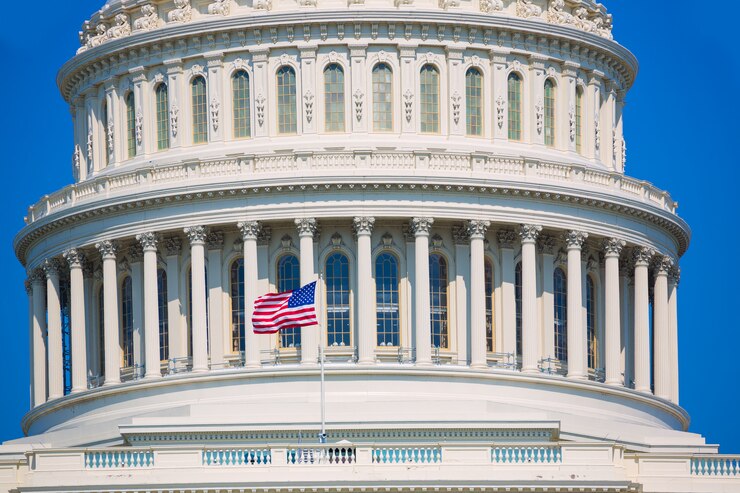
🏛️✍️ Rule by Pen: The Surge in Executive Orders and America’s Power Shift in 2025
📜 What Are Executive Orders? An executive order is a directive from the President that manages operations of the federal government. While they don’t require Congressional approval, they carry the force of law. Historically, they've been used during wars, emergencies, or to implement bureaucratic changes. But today, they’re being used to push major national policies — often igniting legal and constitutional debates. 🔥 Executive Action in 2025: What's Being Ordered? President Trump has already issued over 30 executive orders in the first half of 2025. Key focus areas include: National Drone Defense Initiatives New funding and rules to counter drone surveillance and attacks. Supersonic Flight & Air Taxi Programs Grants and airspace clearance to boost futuristic air mobility. Election Integrity and Uniform Voting Standards Mandating voter ID laws and electronic ballot verification across states. Energy Deregulation Removing restrictions on fossil fuel exploration and fast-tracking pipeline construction. 🧱 Federal vs. State Power: A Growing Rift These federal mandates are not going unchallenged. States like California, New York, and Illinois have filed lawsuits, claiming constitutional overreach. Red states, in contrast, have largely embraced the orders — even expanding on them locally. This clash highlights a deeper trend: America is operating like 50 policy laboratories, each interpreting and implementing federal rules differently. 👩⚖️ Legal Battles Brewing Legal experts are already bracing for a busy Supreme Court term: Challenges to federal control over elections Debates on whether certain orders violate separation of powers Disputes over environmental deregulation vs. state climate policies Many see this as a potential constitutional crisis in slow motion. 🗳️ The Public’s Take: Divided and Distrustful Polls from Pew and Gallup show: 57% of Americans believe the President is overusing executive power. 41% support the action, citing “faster results” and “decisive leadership.” Youth voters (under 30) are the most skeptical — preferring policy change through legislation, not executive fiat. 🚨 Why It Matters If this trend continues, the executive branch could effectively become the most powerful lawmaking body in America, shifting the system of checks and balances. Some worry this sets a dangerous precedent: “What one president can do with a pen, the next can undo — or make even more extreme.”

🏛️🇺🇸 American Democracy in 2025: Power Struggles, Polarization, and the Push for Reform
🏛️ A Look at the Current Political Climate 🔹 Executive Overreach or Necessary Action? President Donald Trump, now in his second non-consecutive term, has issued a wave of executive orders ranging from election reforms to drone defense initiatives. Critics call these moves federal overreach, especially those that aim to standardize state-run elections. State resistance is growing: Democratic-led states argue these federal moves infringe on their constitutional authority. Legal battles have begun, with state attorneys general filing lawsuits in federal courts. ⚖️ Supreme Court’s Role: Neutral Arbiter or Political Player? In June 2025, the Supreme Court rejected a Republican challenge to Pennsylvania’s election rules. It was seen as a rare moment of judicial neutrality in an era where the court's objectivity is under scrutiny. This decision upheld mail-in voting and ballot drop boxes. Many see it as a signal to protect state election rights amid federal pressure. 🗳️ Election Reform: Who Controls the Vote? A central issue is the push for federal election standards: Proposals include mandatory voter ID, nationalized ballot designs, and federal oversight for swing states. Supporters claim it ensures security and uniformity. Opponents fear voter suppression and erosion of local control. What’s at stake? The outcome could reshape how Americans vote and who controls that process — Washington or state capitals. 📉 Public Trust and Political Polarization According to recent Pew Research polls: Only 38% of Americans trust the federal government to do the right thing. 72% of voters believe the U.S. is more politically divided than ever before. Young voters are increasingly skeptical of both parties, leaning toward independent or issue-based activism. 💥 The Rise of State Power States have become battlegrounds for national issues: Abortion laws vary wildly — with some states expanding rights while others implement near-total bans. Climate policy and gun control laws differ so drastically between states that crossing a border can change your rights overnight. Some states have introduced "state sovereignty" amendments to resist federal mandates. 🔮 What’s Next? 2025–2026 Outlook Election Year Showdown: As November 2026 approaches, voter turnout is expected to break records. Reform Movements Grow: Groups are pushing for ranked-choice voting, term limits, and campaign finance transparency. Technological Voting Options: Blockchain and mobile voting pilots are expanding, though concerns about cybersecurity remain.

💼📱 The Side Hustle Economy: How Americans Are Building Wealth Outside 9–5 in 2025
💡 Why Side Hustles Are Booming Rising cost of living in major cities is pushing people to seek supplemental income. Flexible technology allows anyone with a phone and Wi-Fi to monetize a skill. Job insecurity and layoffs in tech and retail have driven professionals to diversify income sources. 🔥 Top Side Hustles in the USA (2025 Edition) 1. Freelancing Platforms like Upwork, Fiverr, and Toptal are helping people earn $25–$100/hr for: Writing, design, coding, marketing, and even virtual assistance. 2. Print-on-Demand & E-commerce Using Shopify, Etsy, and Amazon Merch, individuals are selling: Custom T-shirts, mugs, planners, art prints, and digital downloads. 3. YouTube & TikTok Content Creation Short-form video creators are: Monetizing via brand deals, affiliate links, and platform bonuses. 4. Online Tutoring & Courses Experts in any field (math, coding, cooking, fitness) are earning by: Teaching through Zoom, Teachable, and Skillshare. 5. AI & Tech Tools Reselling Some are making money by packaging and reselling prompts, automations, and custom GPT/AI tools to niche audiences. 🧾 Taxes, Legal, and Finance Tips for Side Hustlers If you’ve got a side hustle, treat it like a business: Track income & expenses: Use QuickBooks, Wave, or Notion templates. Separate your bank accounts to avoid IRS confusion. Save 20–30% of income for quarterly taxes — the IRS considers side hustle money taxable. Consider an LLC for legal protection and better tax advantages. 📈 Real Stories: From Hustle to Full-Time Freedom Amanda (Texas) quit her job in hospitality after her Etsy store started making $8K/month. Jason (New York) teaches financial literacy on TikTok and earns more than his day job through affiliate marketing. Leah (California) turned a weekend copywriting gig into a remote agency serving international clients. 🧠 Is It Right for You? Before jumping into a side hustle: Consider your time, skills, and goals. Start small — test ideas before going all-in. Focus on value and quality. Hustles that solve problems tend to grow fast.

🏦🇺🇸 Retirement in 2025: How Americans Are Rethinking Their Financial Future
📊 Retirement Savings in Numbers Over 60% of Americans have less than $100,000 saved for retirement. The average retiree today will need over $1.2 million to retire comfortably, especially in urban areas. 401(k) participation is rising, but many aren’t maximizing contributions. 🛑 The Challenges 1. Inflation & Rising Expenses Everyday costs—from healthcare to housing—continue to climb. Fixed-income retirees face shrinking purchasing power. 2. Uncertain Social Security Though not "going broke," Social Security may reduce payouts after 2033 if reforms aren’t made. Americans under 45 are especially skeptical. 3. Gig Economy Gaps Freelancers and gig workers (now over 30% of the workforce) often lack access to traditional retirement accounts like 401(k)s or pensions. 🛠️ Modern Retirement Solutions ✅ 1. Roth IRAs & HSAs These tax-advantaged accounts are becoming more popular with younger savers: Roth IRAs allow tax-free withdrawals in retirement. Health Savings Accounts (HSAs) help cover growing medical expenses. ✅ 2. Employer-Sponsored Matching More companies are offering 401(k) match programs — often underused by employees. Experts recommend contributing at least enough to get the full match. ✅ 3. Digital Advisors & Robo-Investing Tools like Betterment, Wealthfront, and Fidelity Go help automate long-term investing for retirement with low fees. ✅ 4. Alternative Income Streams Americans are now building passive income through rental properties, dividend stocks, and digital products — to supplement traditional retirement savings. 🧠 Retirement Tips for 2025 Start early: Even $100/month invested in your 20s compounds massively by 60. Reassess annually: Your plan should adapt to life changes — marriage, kids, career shifts. Delay retirement if needed: Working until 67+ can mean higher Social Security benefits and more savings time. Talk to a fiduciary advisor, not a product salesman. 💬 Real Talk: Retirement Doesn’t Have to Mean "Stop Working" In 2025, many Americans are shifting their view of retirement to a “second act” — part-time work, passion projects, travel, or volunteering — supported by financial freedom, not just age.

🎓💵 Student Loans in 2025: How Young Americans Are Coping with Debt and Rebuilding Financial Stability
📊 Where We Stand: The Numbers in 2025 Total U.S. student debt exceeds $1.75 trillion. The average monthly payment has risen to $460, up from pre-pandemic levels due to interest rate adjustments. Federal loan interest rates have increased, following the broader rise in borrowing costs. 💼 The Impact on Young Adults Many borrowers are feeling trapped: Delayed homeownership: Over 55% of Millennials and Gen Z cite student loans as a reason for not buying a home. Mental health toll: Anxiety around debt continues to rise, with 2 in 3 borrowers reporting stress over repayment. Limited financial growth: Less money goes into retirement savings and emergency funds. 🛠️ What’s Being Done 1. Government Relief Efforts Some forgiveness plans are in place for public service workers, but broader loan forgiveness remains politically stalled. Income-Driven Repayment (IDR) plans have been revised for better affordability. 2. State-Based Aid States like New York and California are launching targeted relief for low-income graduates. Community colleges and vocational schools are receiving more funding to lower future student debt. 3. Employer Assistance Over 35% of large employers now offer student loan repayment benefits — some match contributions like a 401(k). Tech and healthcare sectors are leading in offering debt-relief packages. 💡 Smart Strategies for Borrowers Even in a tough financial environment, there are ways to take control: Reassess your repayment plan: IDR options can lower your monthly cost based on income. Refinance with caution: Private refinancing can reduce rates but may remove federal protections. Automate payments to avoid late fees and qualify for interest reductions. Seek employer support: Don’t hesitate to ask if your workplace offers student loan benefits. 🔮 Looking Ahead: A Shift in Education Financing? With mounting pressure, some experts predict a major overhaul in how higher education is financed in the U.S. More tuition-free public college proposals are being debated. Skills-based hiring is replacing degree-based hiring in some industries. Alternative learning platforms like Coursera, edX, and Google Career Certificates are growing fast.

📱💸 The Rise of Gen Z Investors: How Young Americans Are Transforming Finance in 2025
📈 Gen Z's Investing Style: Fast, Smart, and Mobile Forget traditional brokers. Today’s young investors are using mobile apps like Robinhood, Public, and SoFi to buy stocks, crypto, and ETFs with just a few taps. Key Trends: Fractional Shares: Making it easier to invest in expensive stocks like Apple or Tesla with just $10. Crypto Assets: Bitcoin and Ethereum remain popular, but many are exploring tokenized real estate and NFTs. Social Investing: Platforms let users follow friends or influencers, turning finance into a social activity. 💡 Financial Literacy on the Rise Unlike previous generations, Gen Z is learning about money early — not in school, but on YouTube, TikTok, and Discord. Top content: Budgeting hacks, stock breakdowns, side hustle tips, and passive income ideas. Influencers like @herfirst100k and @humphreytalks are helping demystify complex financial topics. 🧾 Budgeting & Saving with Apps Apps like YNAB (You Need A Budget), Goodbudget, and Mint are trending among Gen Z users. They're not just investing — they're automating savings and tracking every dollar. Many set automated weekly savings goals. “No-spend months” and challenge-based saving is popular on TikTok and Reddit. 💳 Credit Awareness and Responsibility Gen Z is highly aware of credit scores and how they impact everything from renting an apartment to applying for jobs. Buy Now, Pay Later (BNPL) services like Afterpay are used cautiously. Many prefer secured credit cards to build credit without overspending. 🌱 Ethical and Sustainable Investing Young Americans care about where their money goes. Environmental, Social, and Governance (ESG) investing is on the rise. Investments in clean energy, tech-for-good, and BIPOC-owned startups are gaining traction. Platforms like Ellevest and Ethic offer mission-driven investment portfolios. 🧠 What This Means for the Future Wall Street is paying attention to Gen Z. Banks and institutions are redesigning products to appeal to digital-first, socially conscious users. Young investors are creating wealth earlier — and on their own terms.

💳 Credit Card Debt Hits a Record High in 2025: What Americans Need to Know
💰 Why Credit Card Debt Is Rising Several key factors are driving this surge: Higher Living Costs: Even with inflation slowing, everyday expenses—like groceries, rent, and gas—remain historically high. Stagnant Wages: Many workers haven’t seen raises that match cost-of-living increases. Interest Rates: The average credit card APR in 2025 sits around 22–25%, making balances harder to pay down. Emergencies and Unplanned Spending: Health issues, car repairs, and job shifts continue to drive unexpected borrowing. 🔍 The Impact on American Households Monthly Minimum Payments are eating into household budgets. Credit Scores are falling for many consumers carrying high balances. Debt Stress is leading to mental health challenges and financial anxiety, particularly among Gen Z and Millennials. 💳 Smart Tips for Managing Credit Card Debt If you’re feeling the pressure, here are actionable steps to get back on track: 1. Create a Simple Budget Track your spending to identify areas for quick savings. Even trimming $50/month from dining out can make a difference. 2. Prioritize High-Interest Cards Use the avalanche method—pay off cards with the highest interest rate first while making minimums on the others. 3. Consider a Balance Transfer Many credit unions and fintech lenders offer 0% intro APR cards for 12–18 months. 4. Negotiate or Refinance Some banks are open to lowering your rate if you ask—especially if you’ve been a long-time customer. 5. Use Windfalls Wisely Tax refunds, bonuses, or side hustle income? Funnel them toward paying down balances, not splurging.